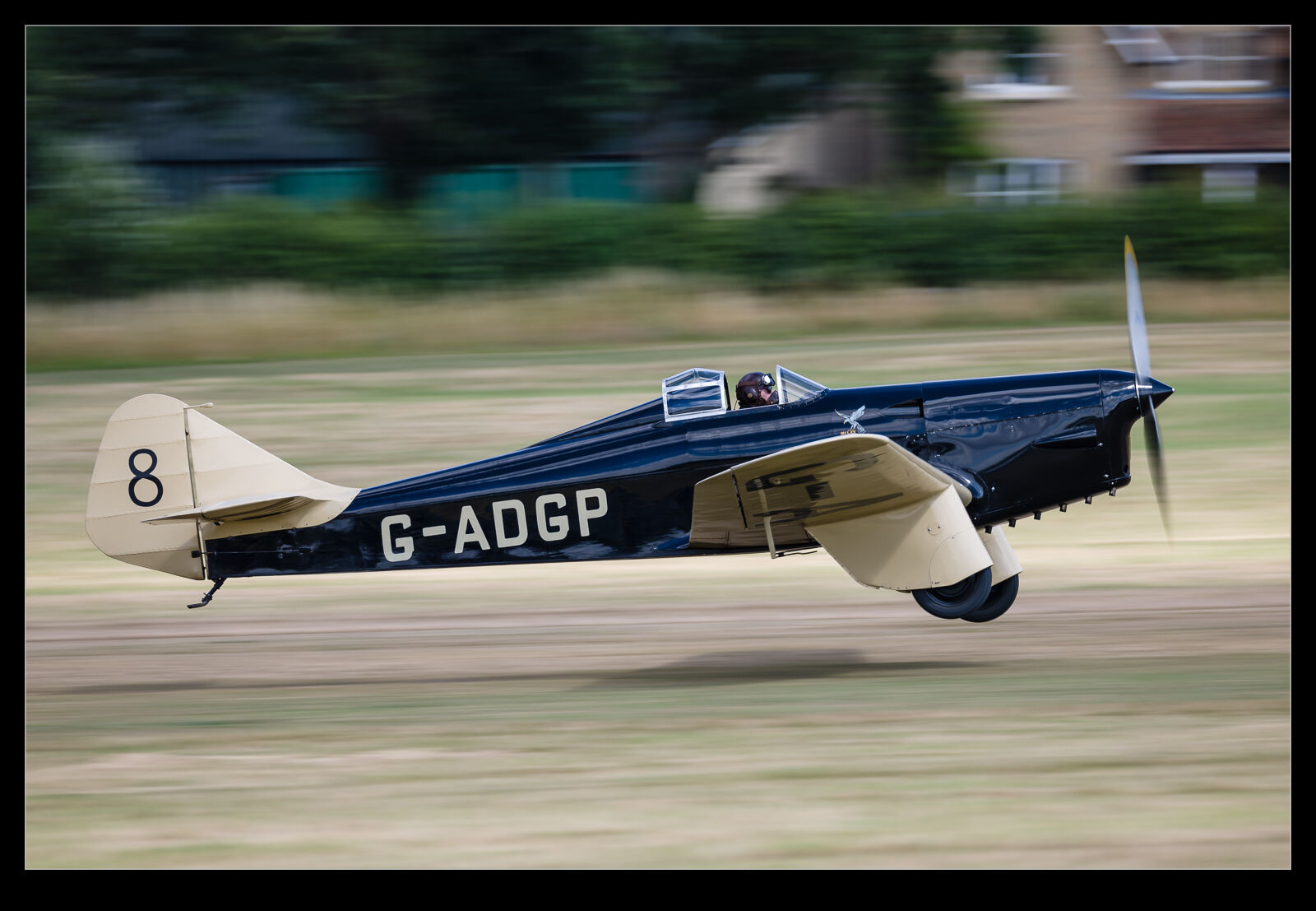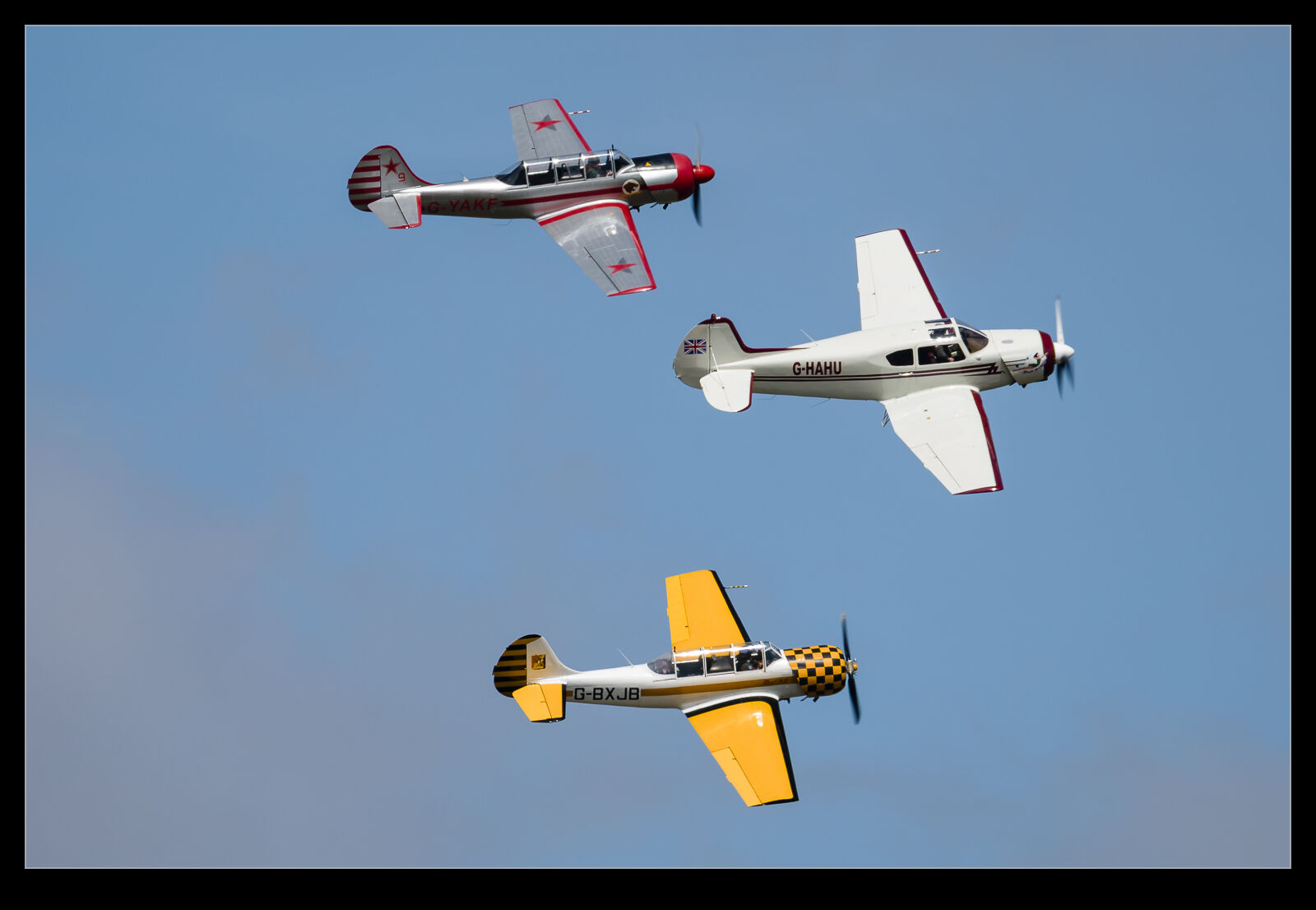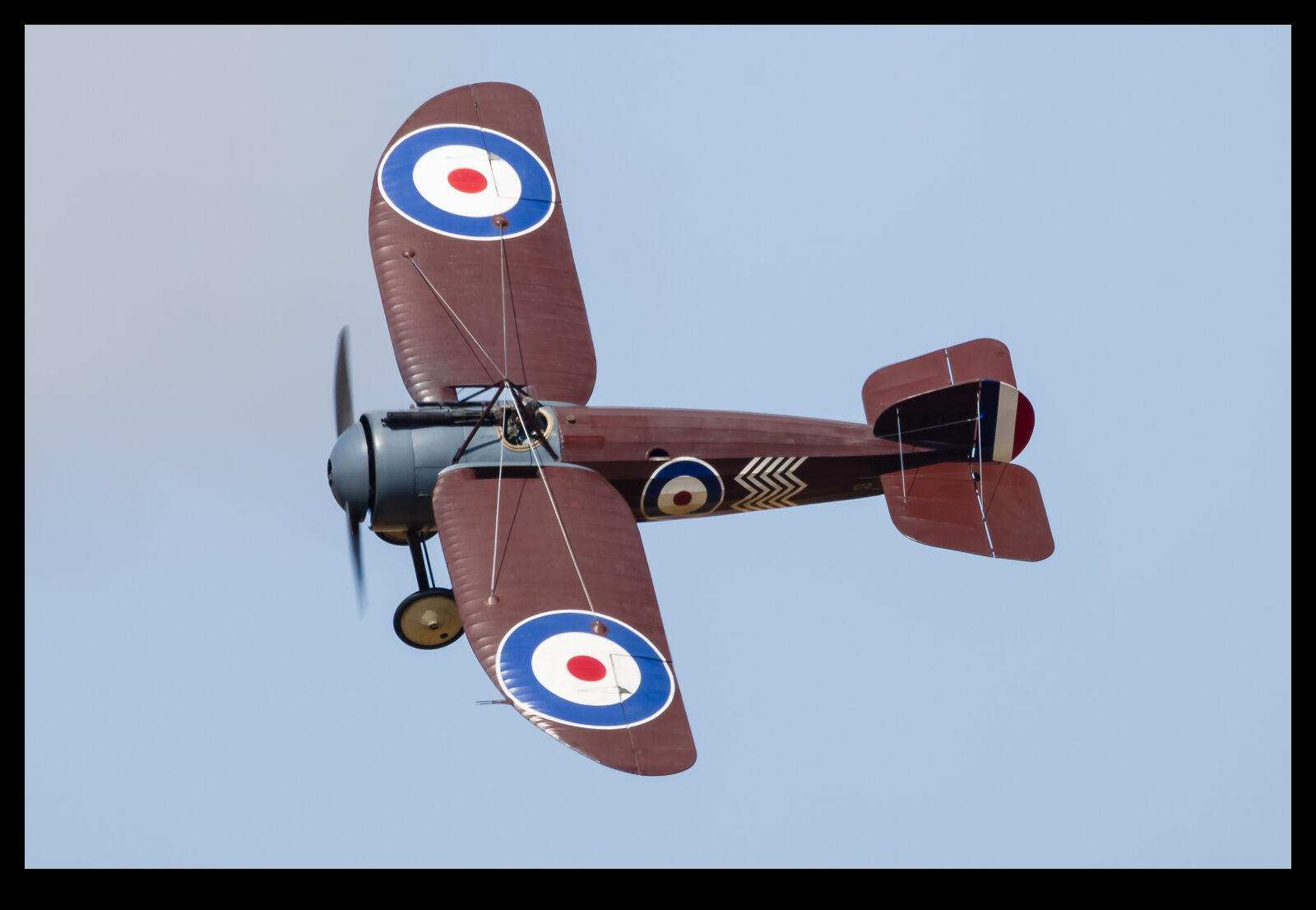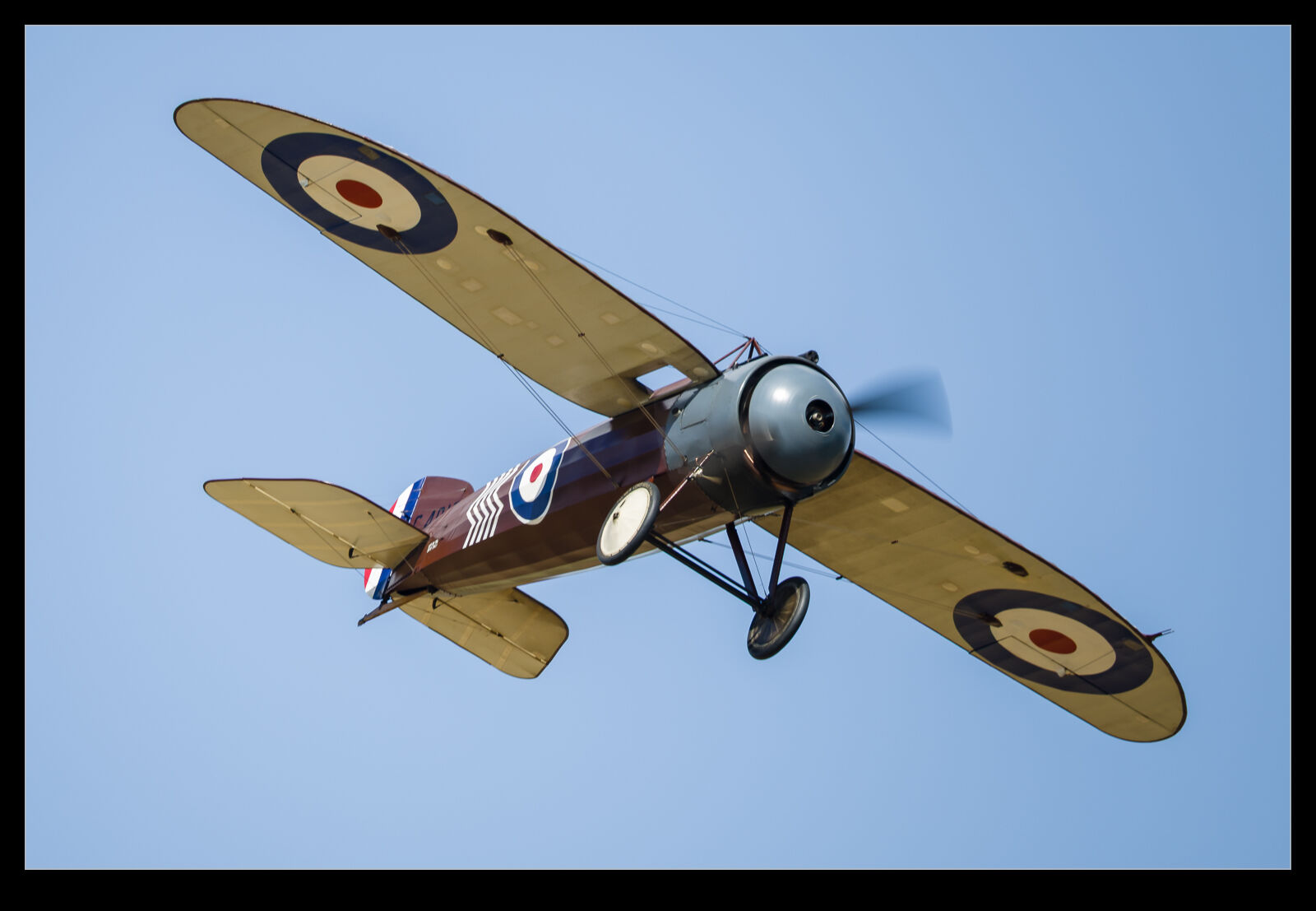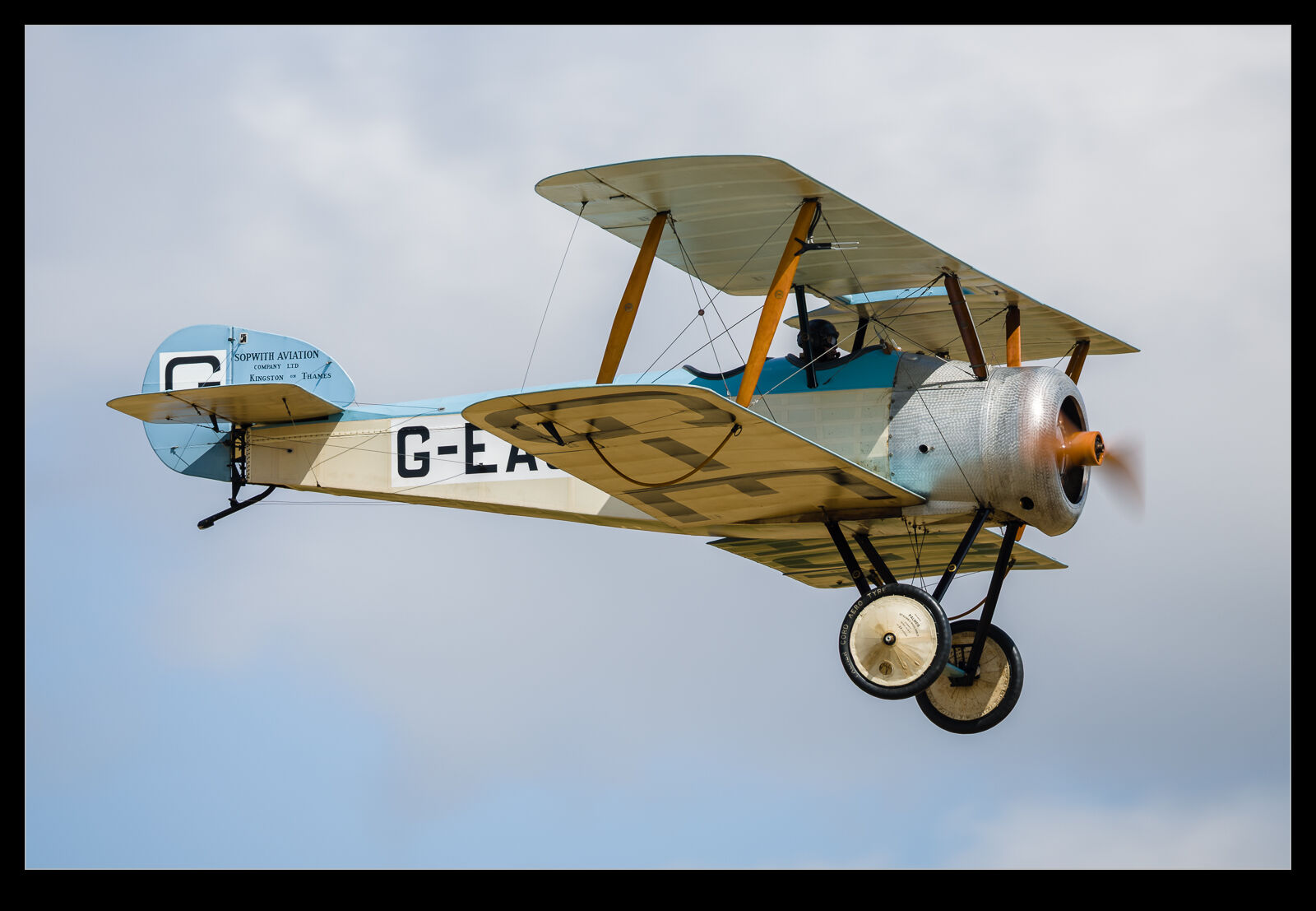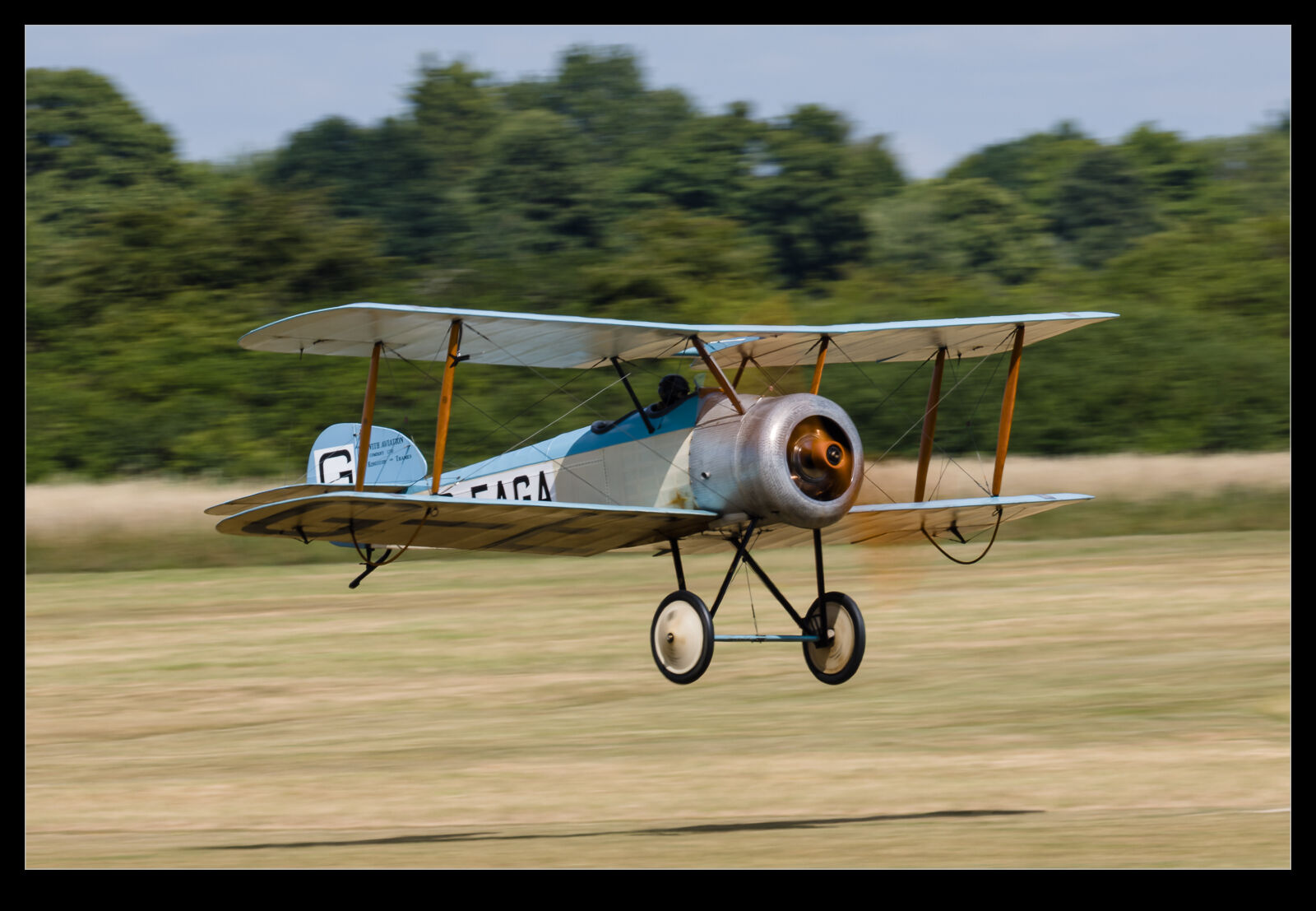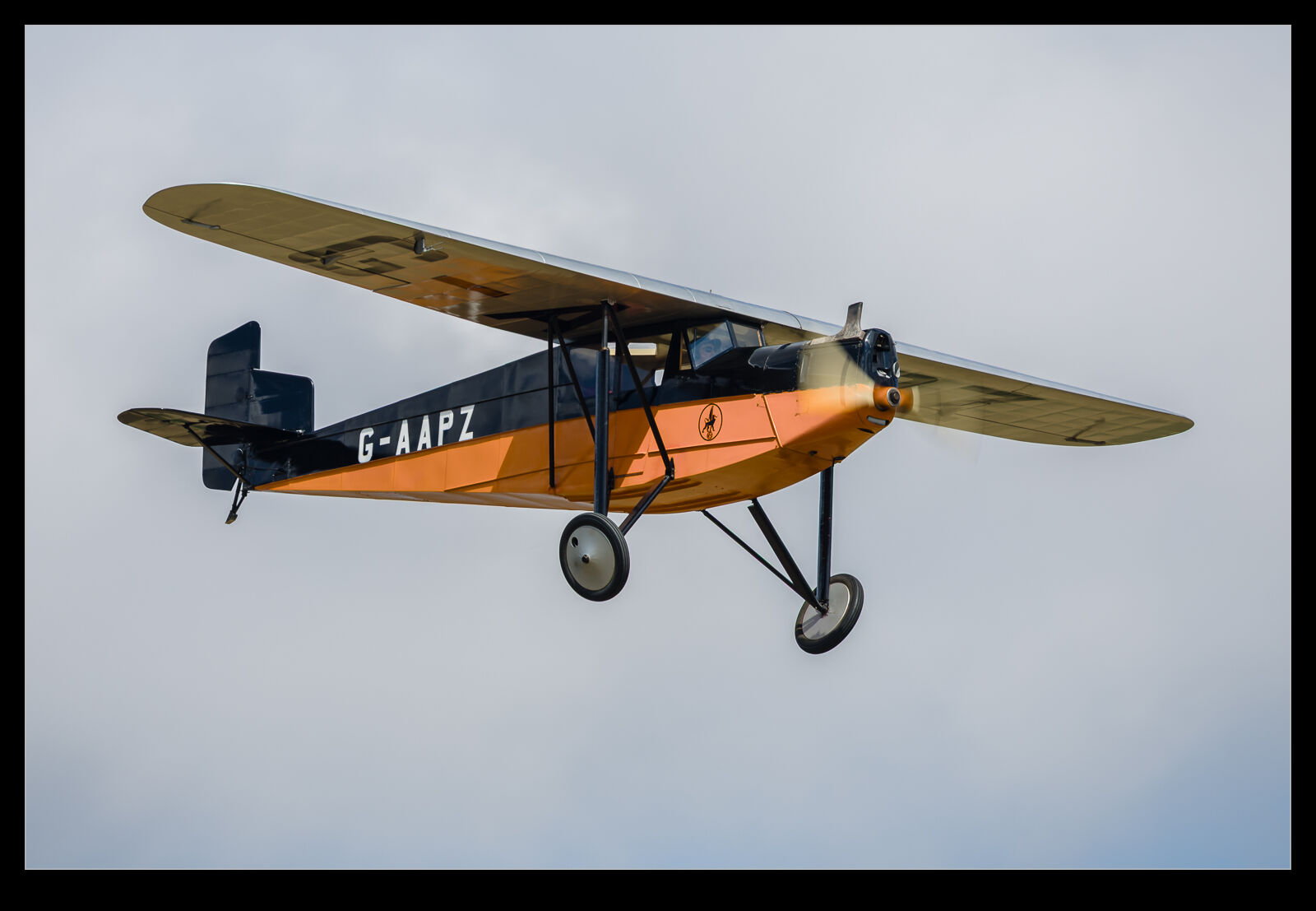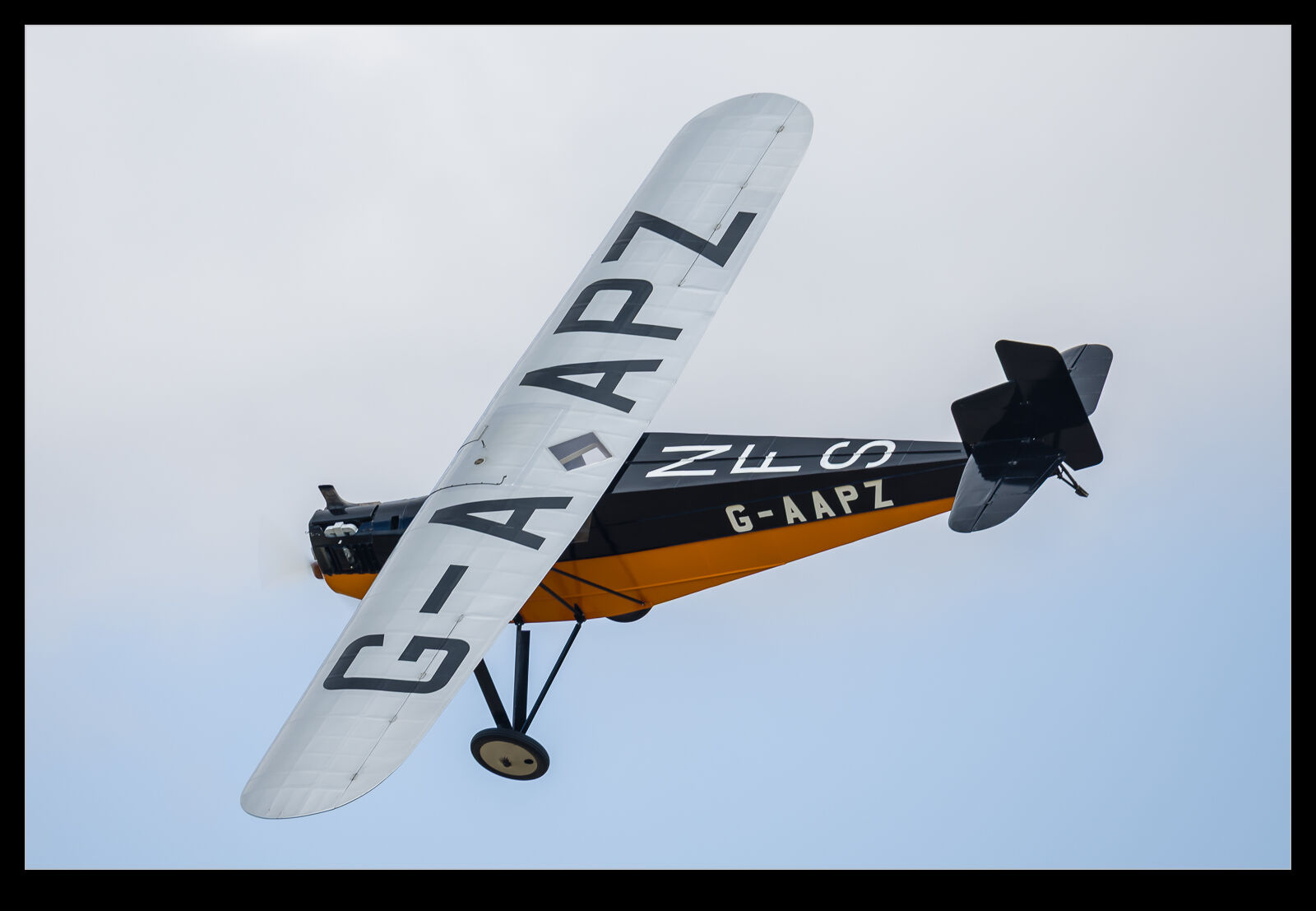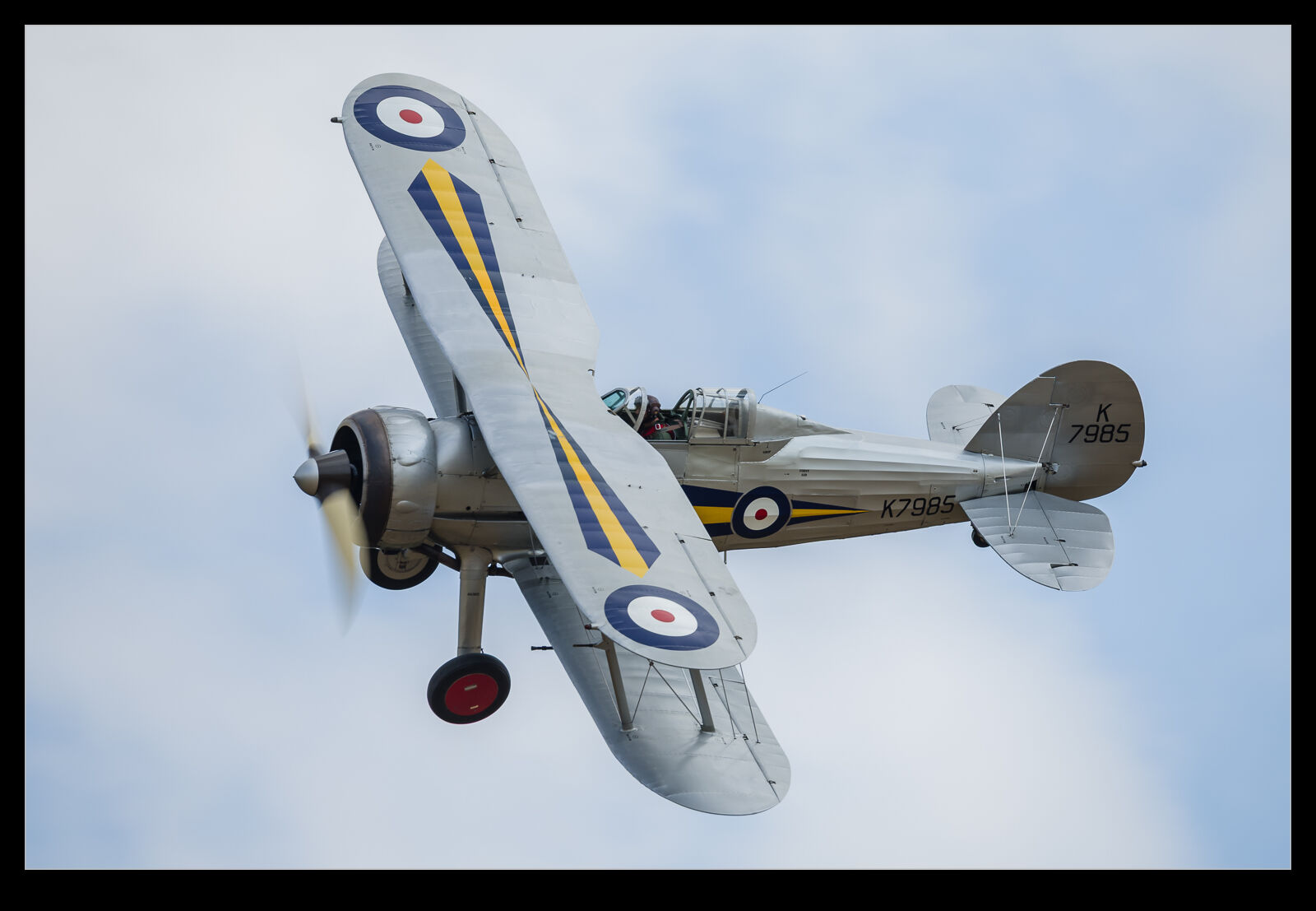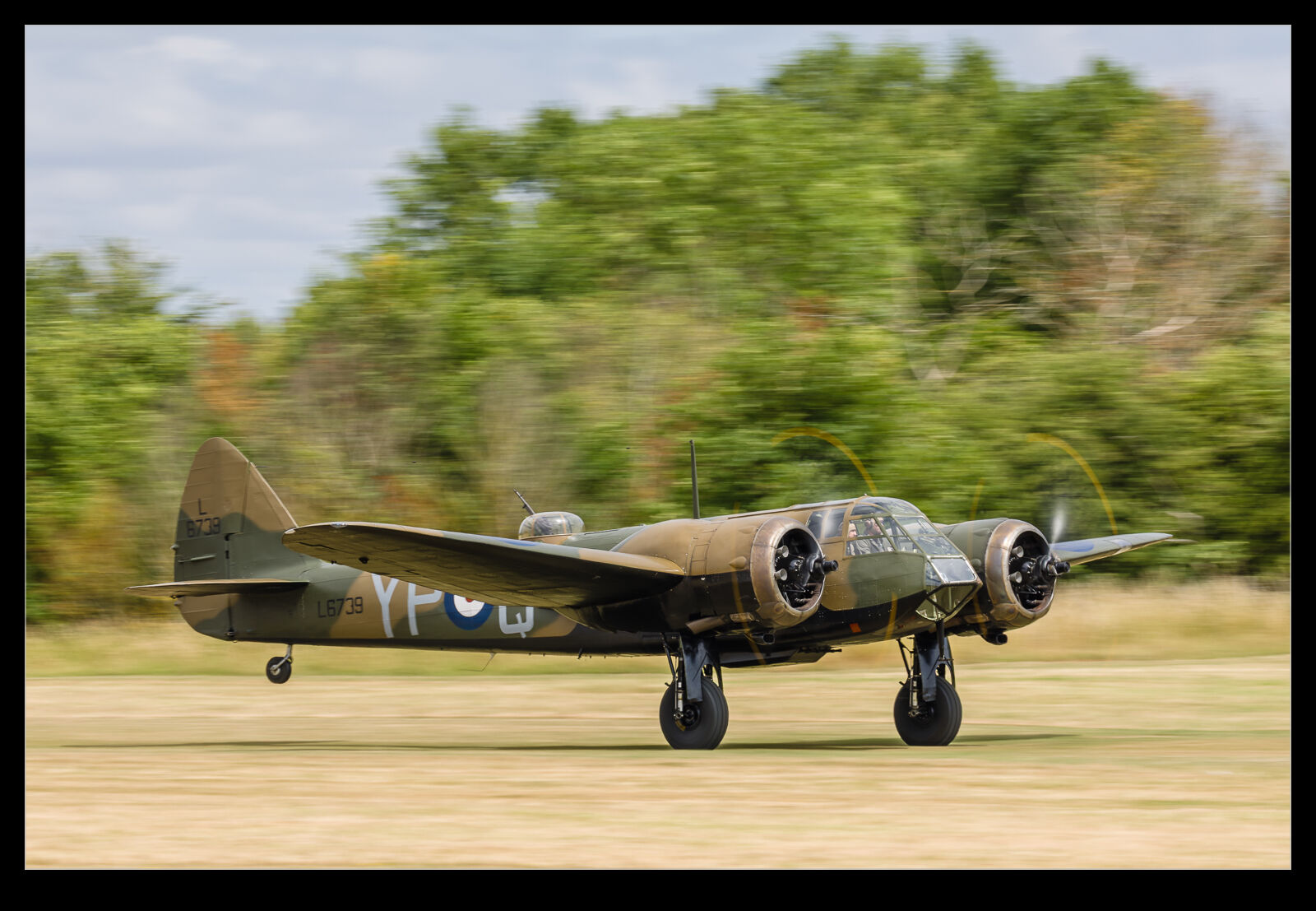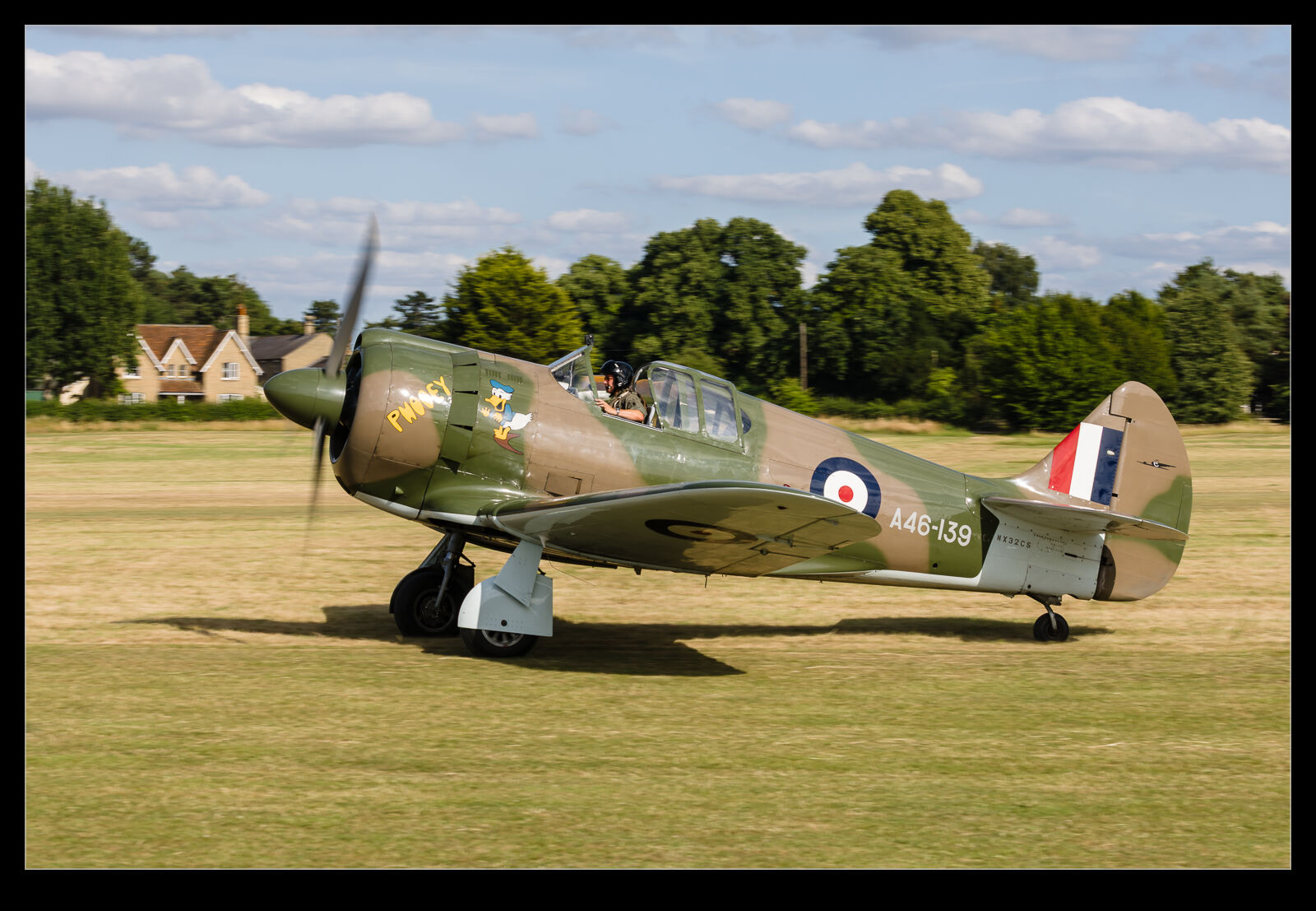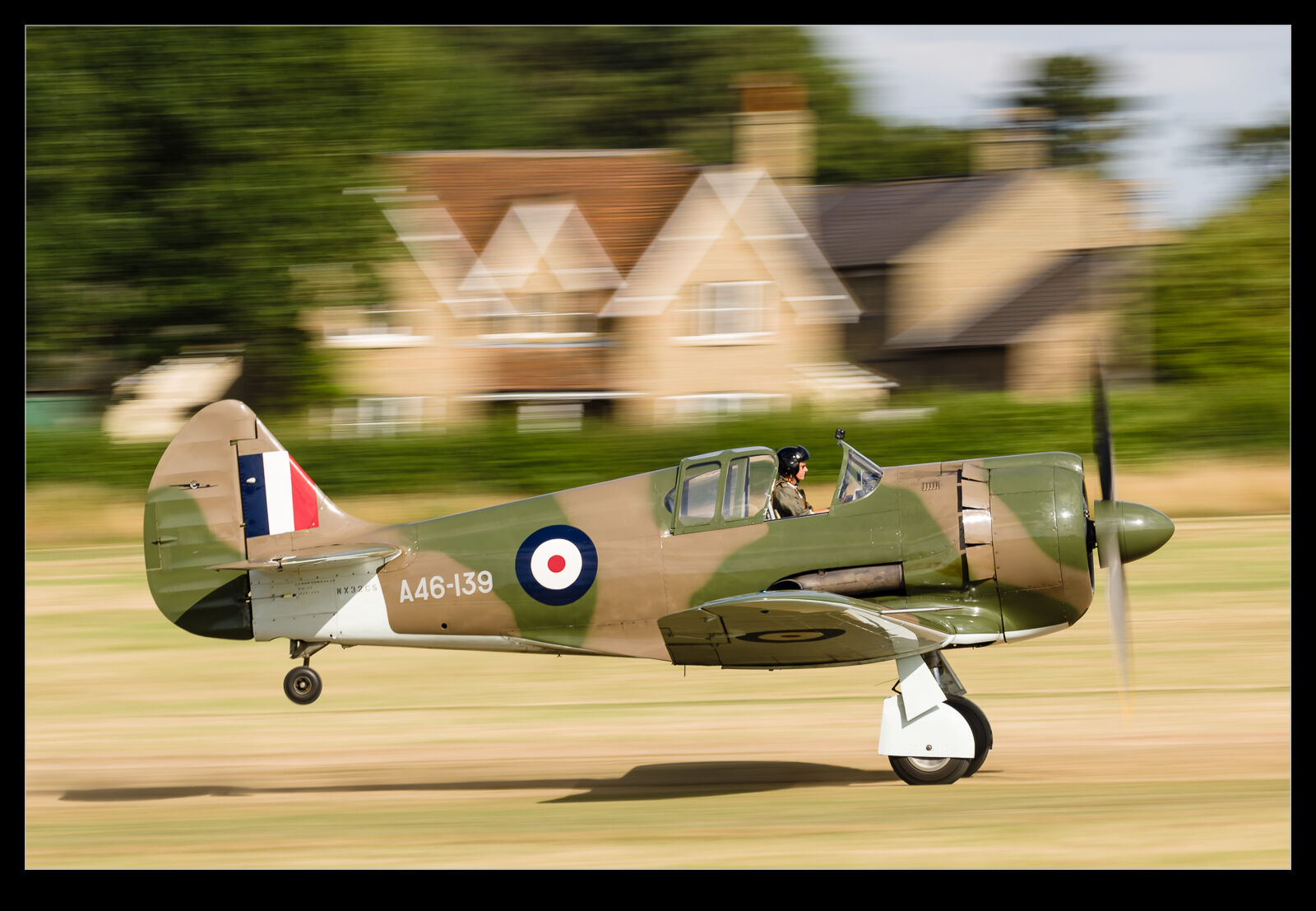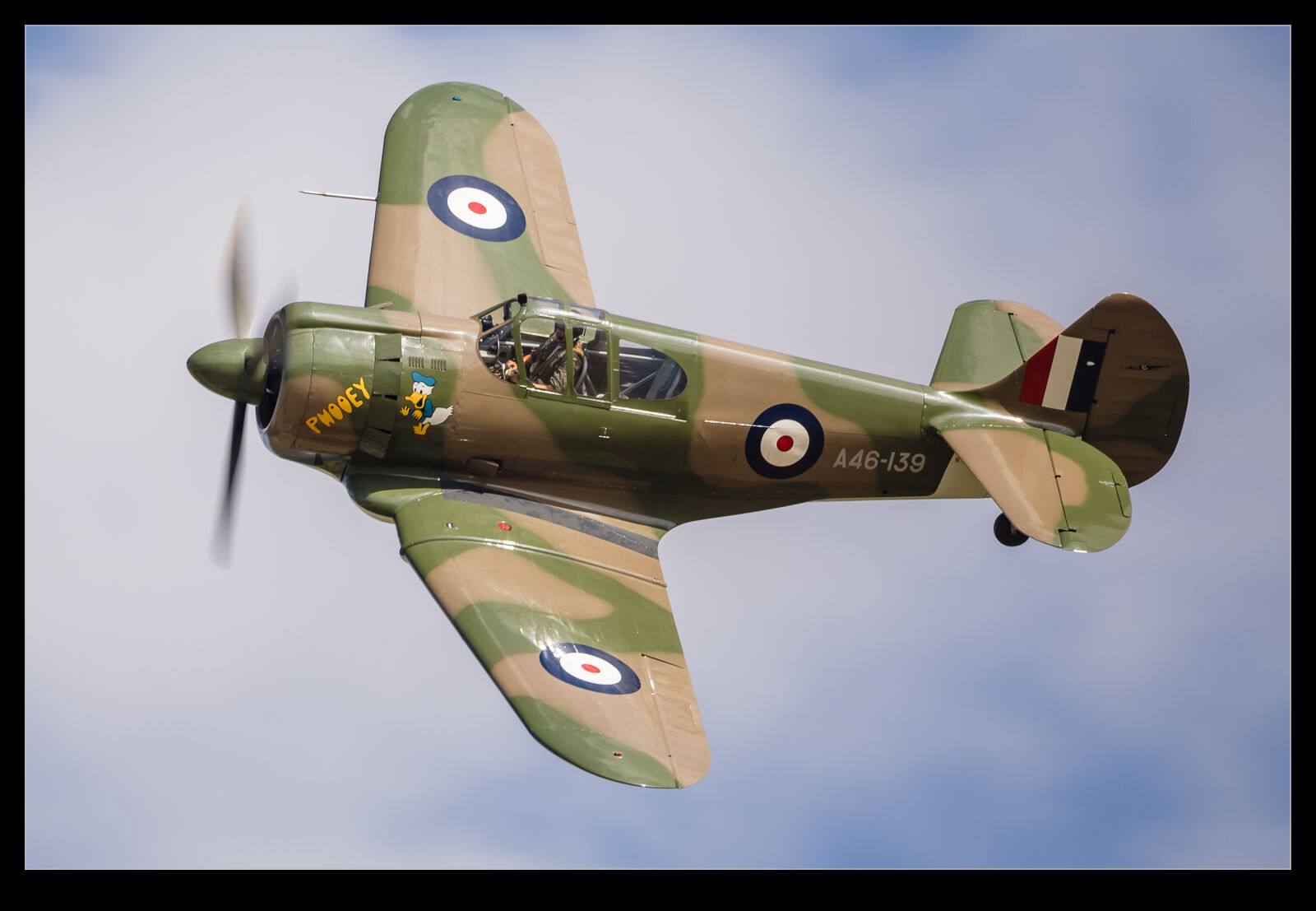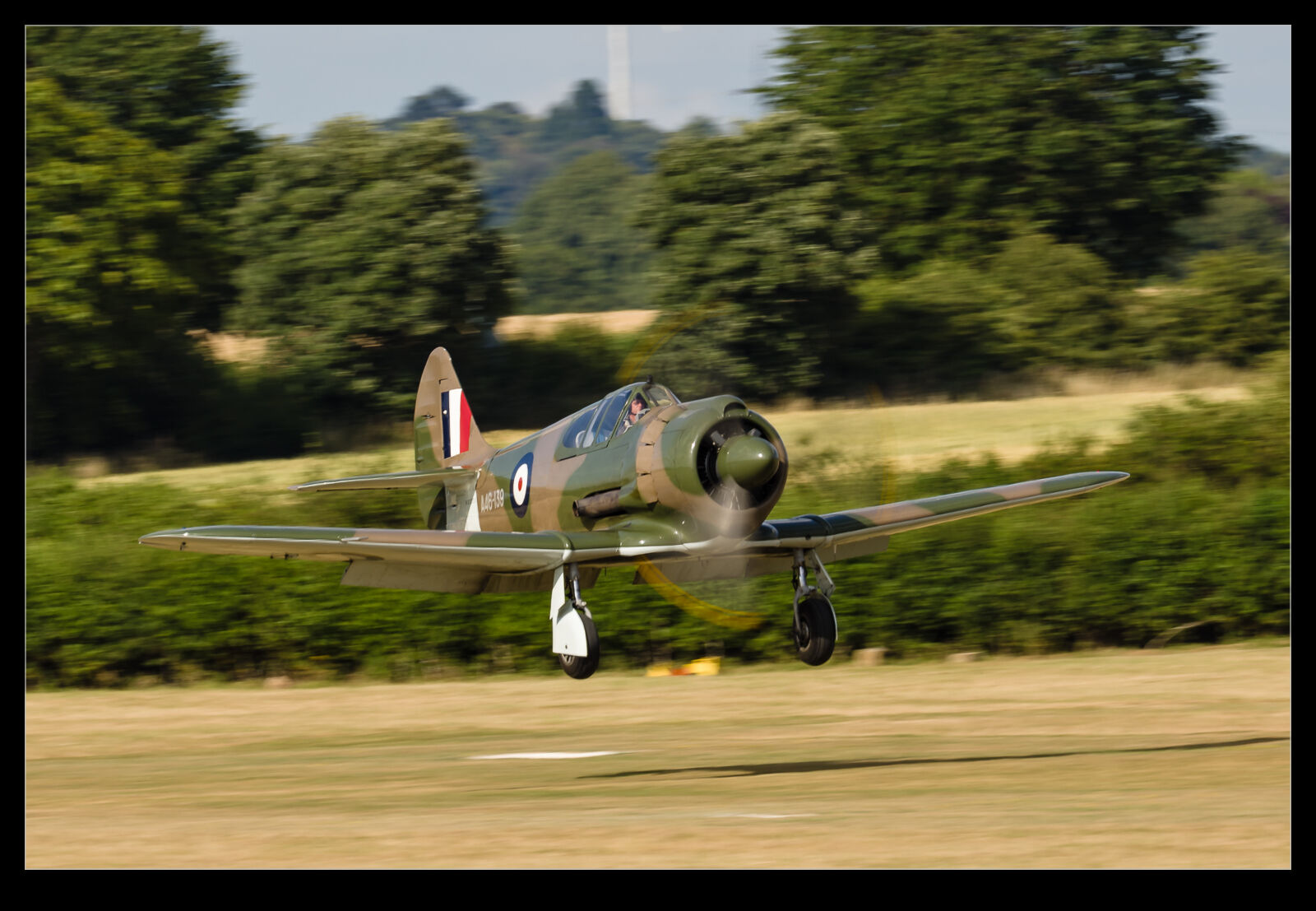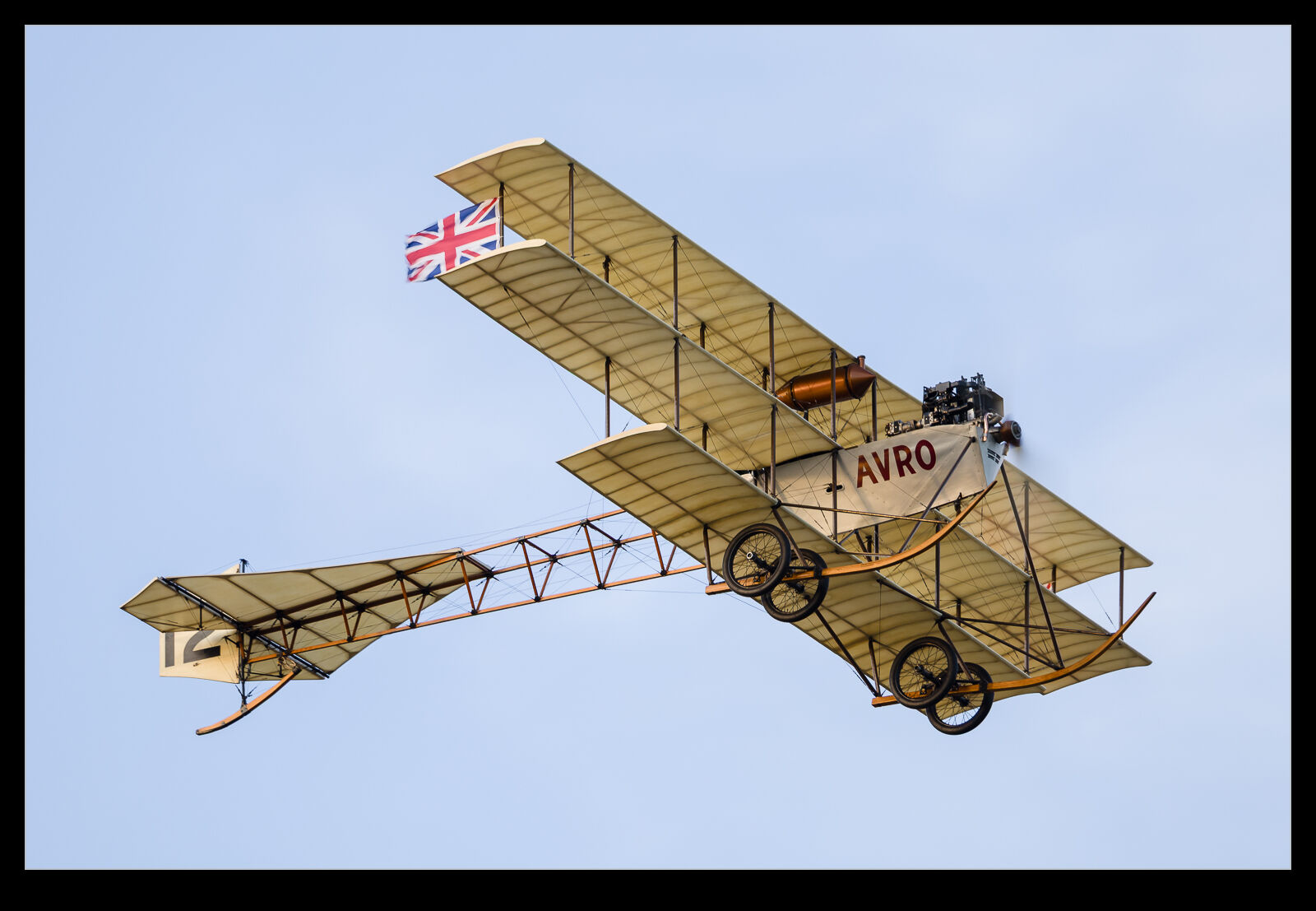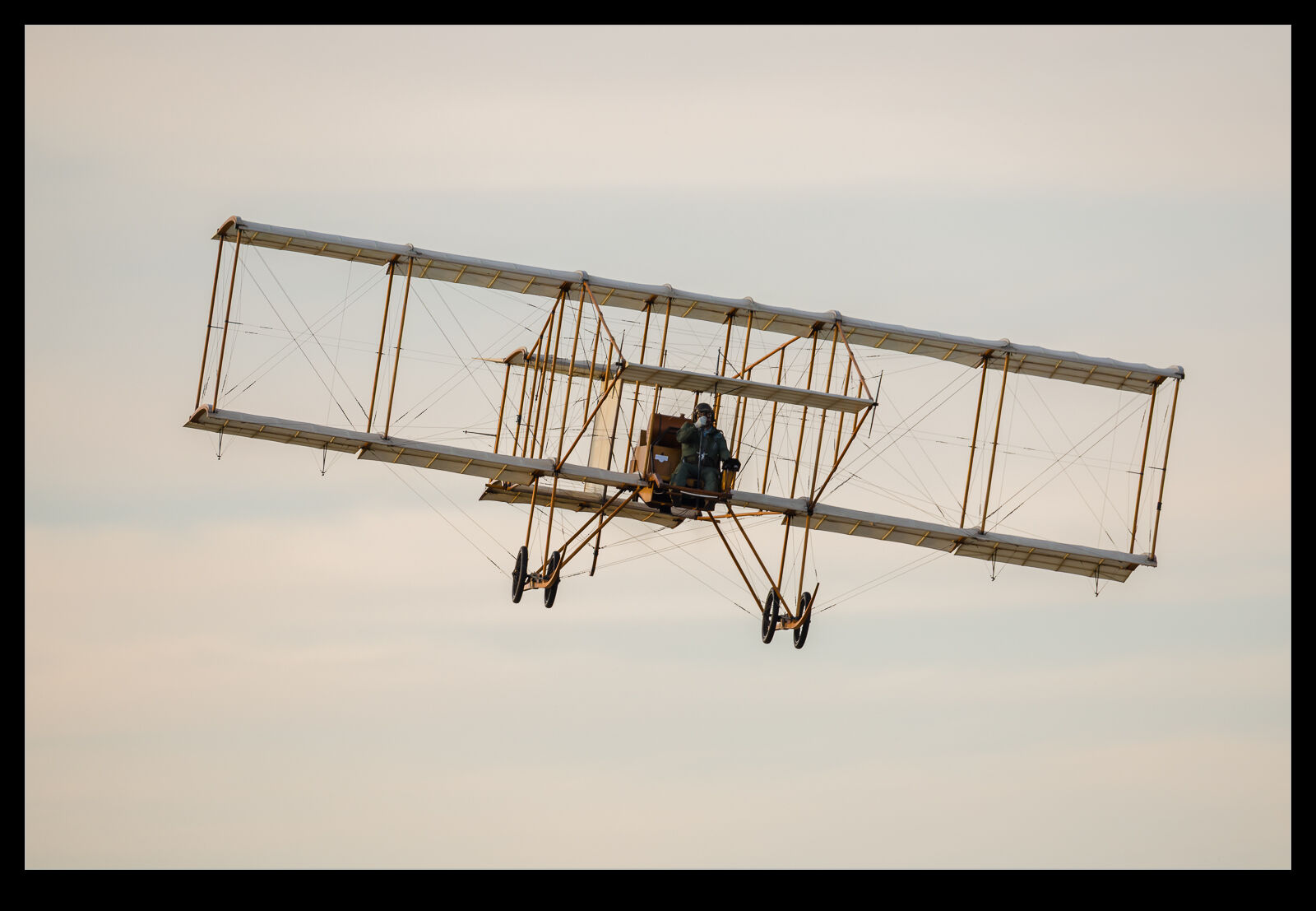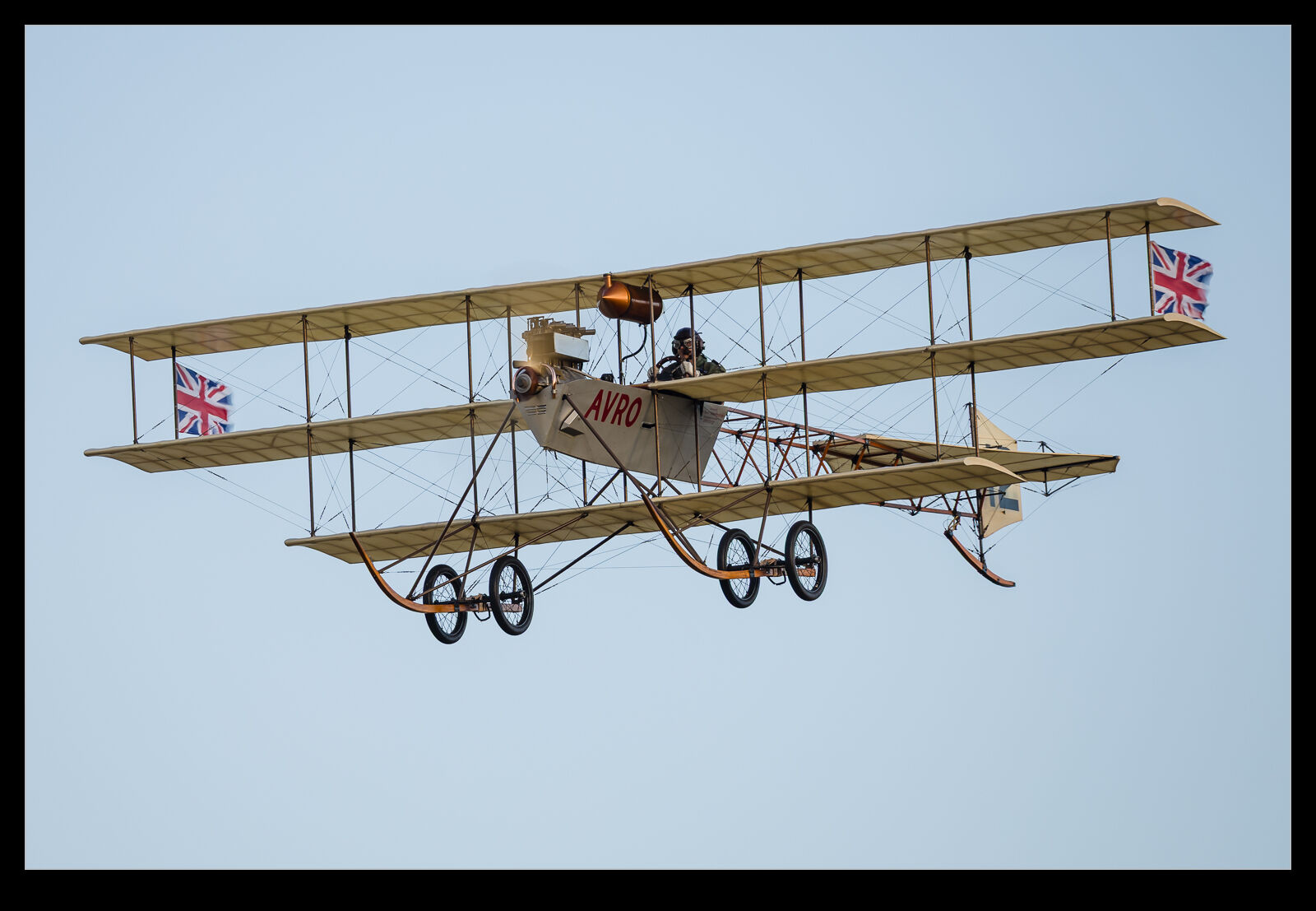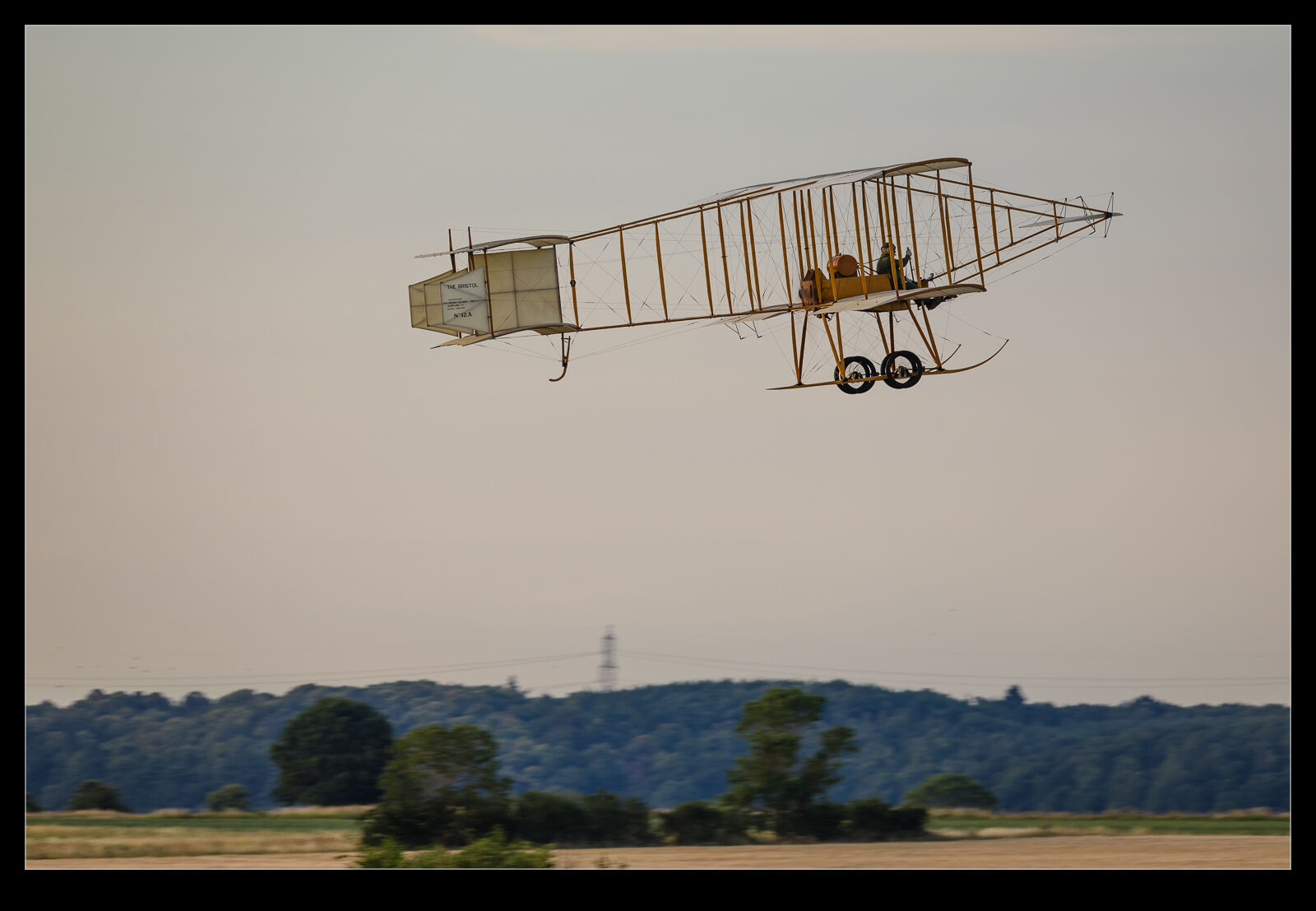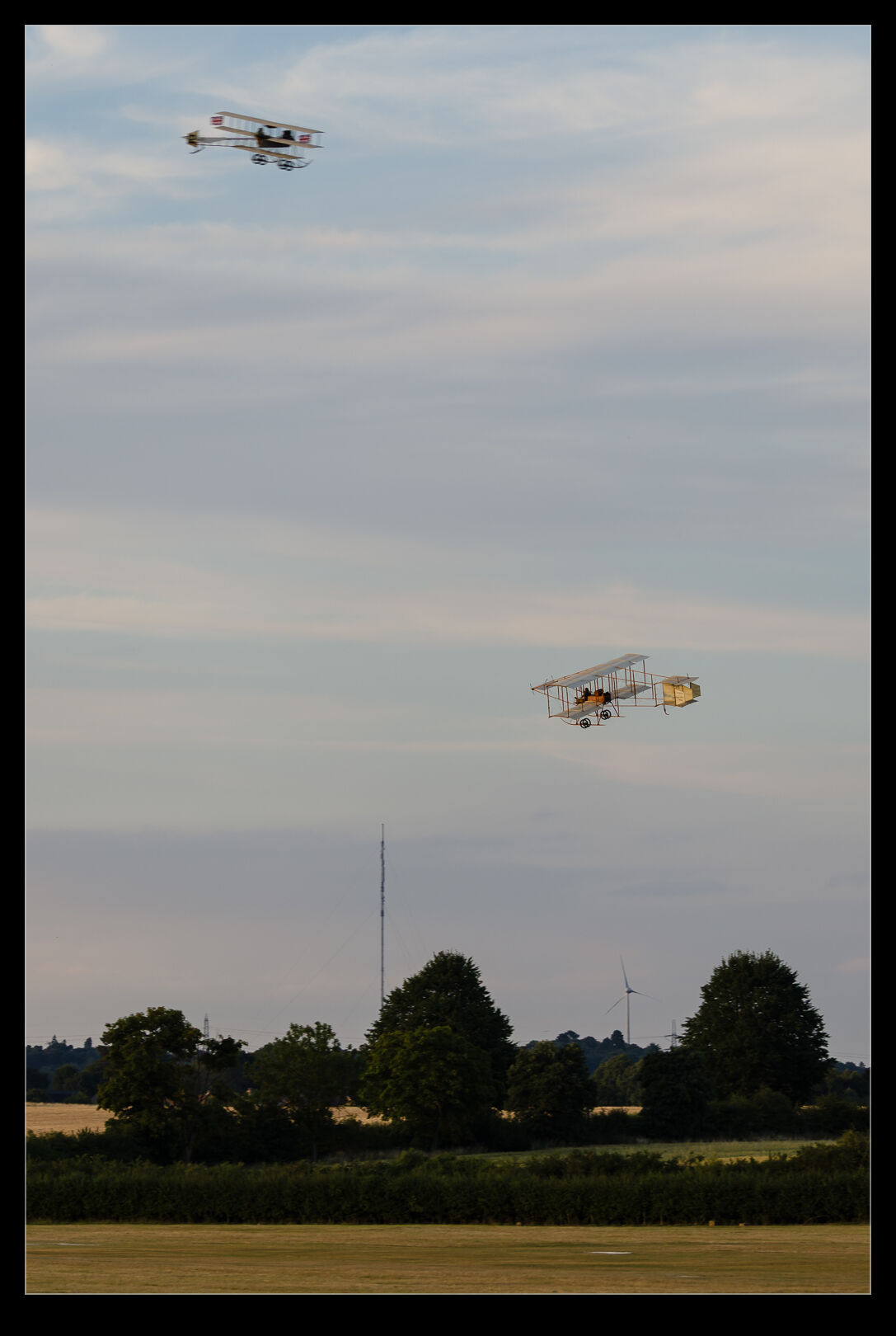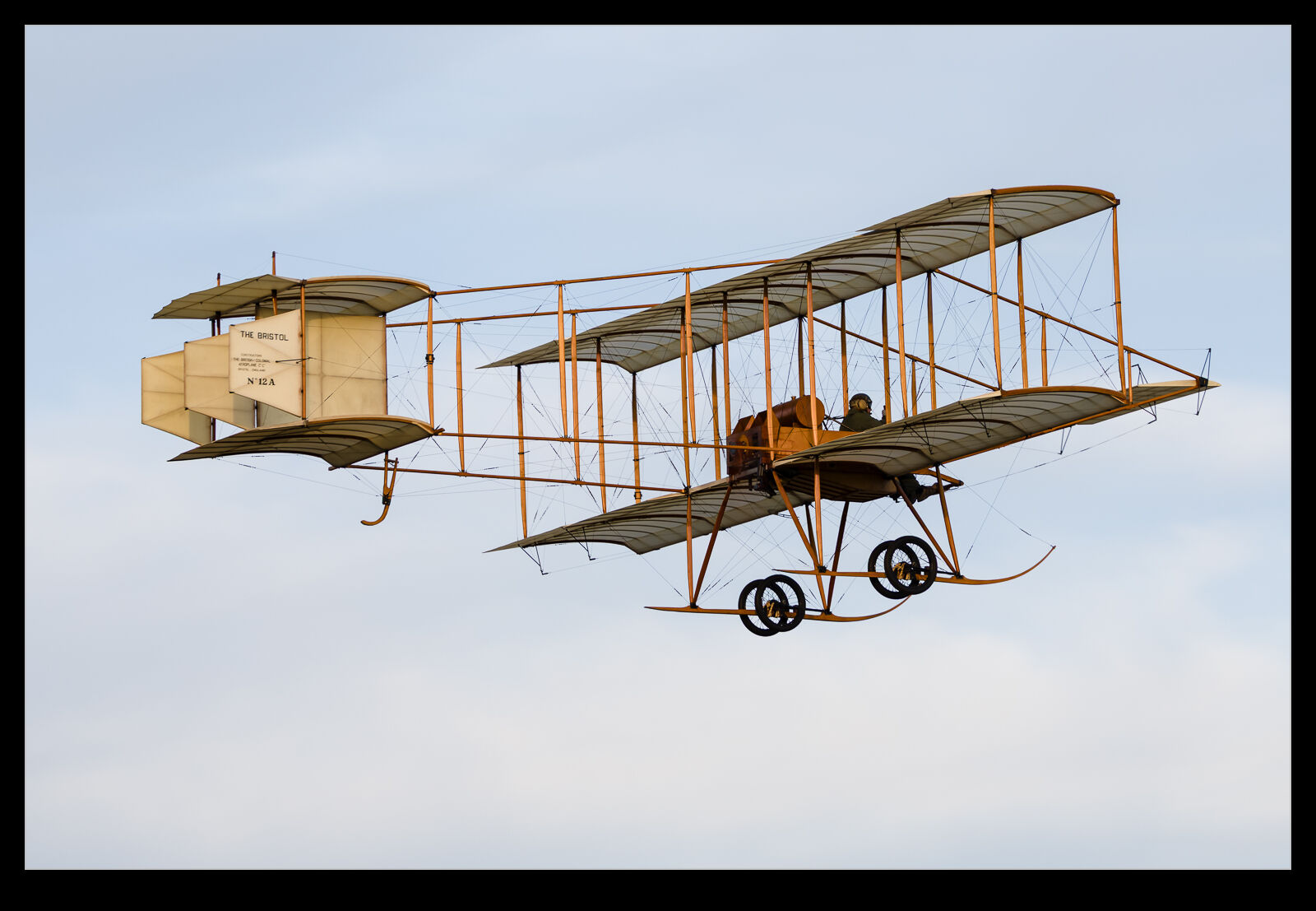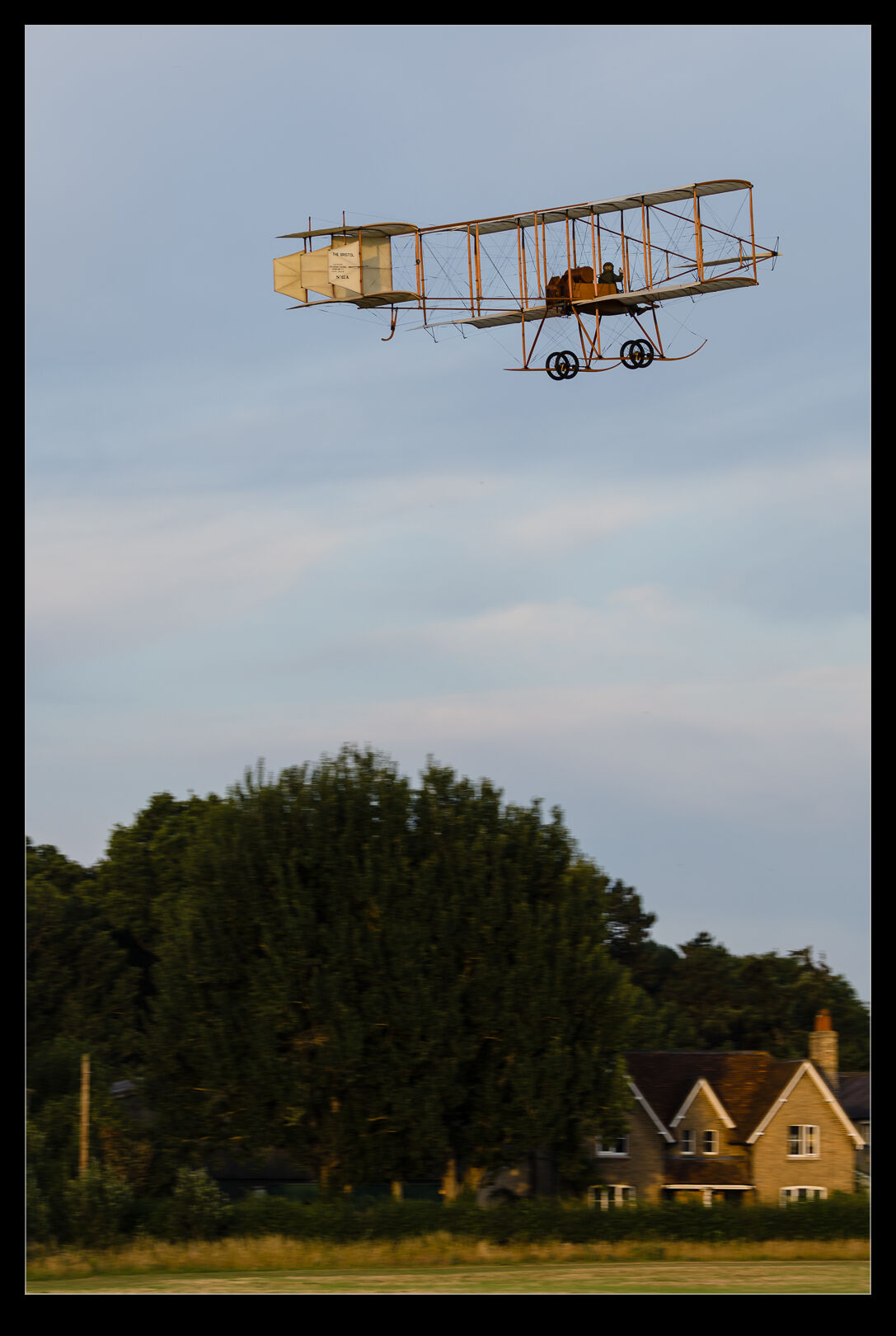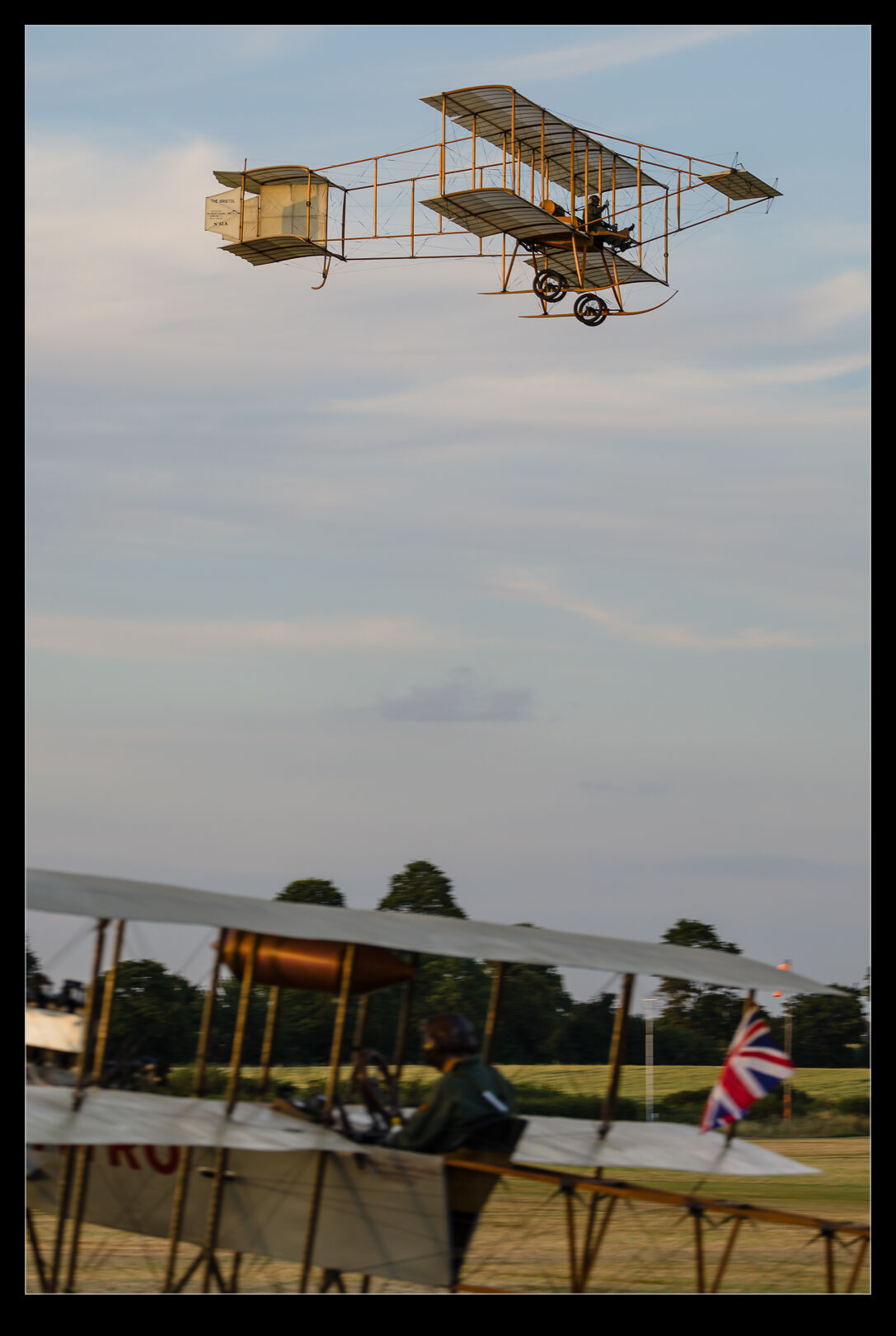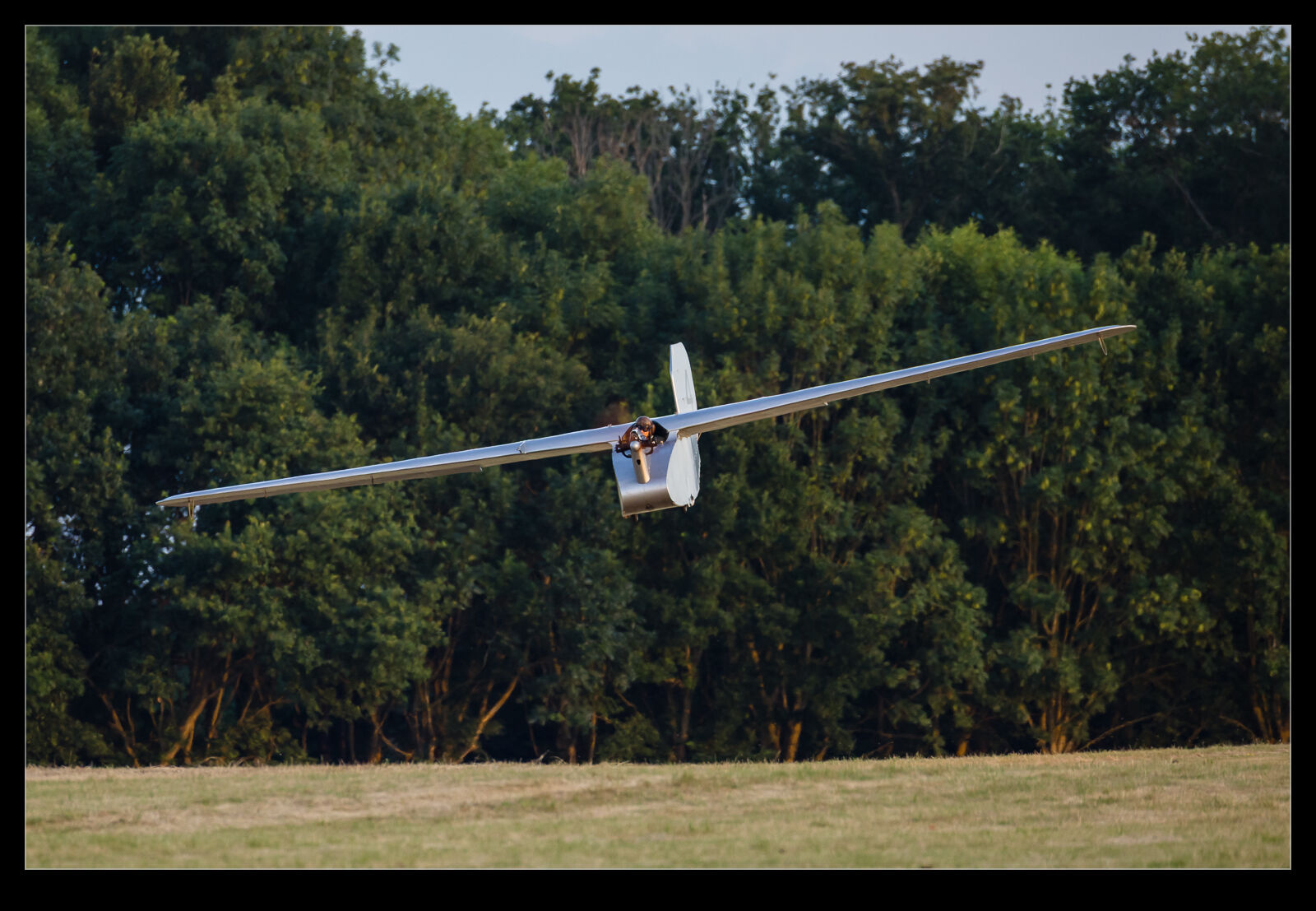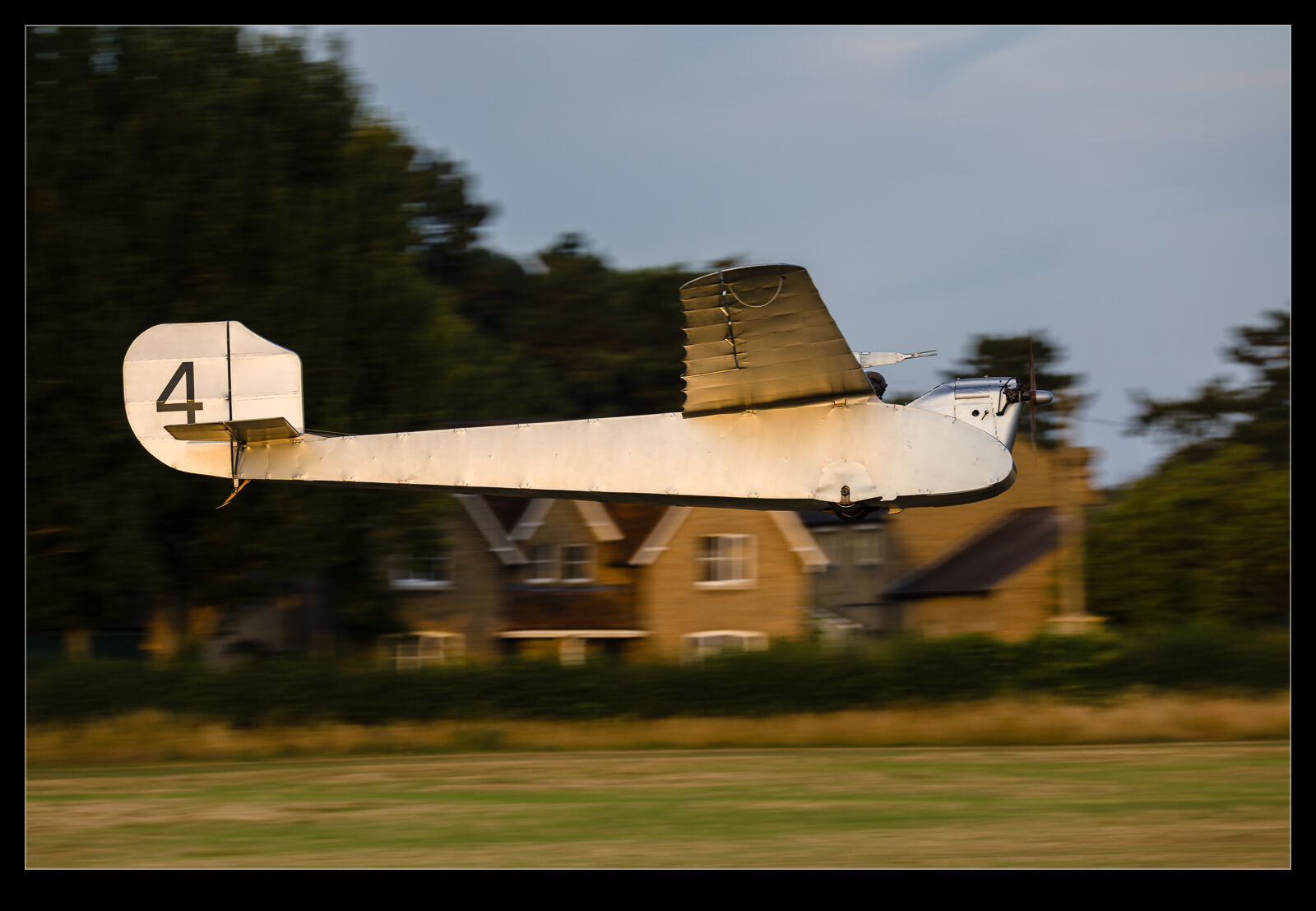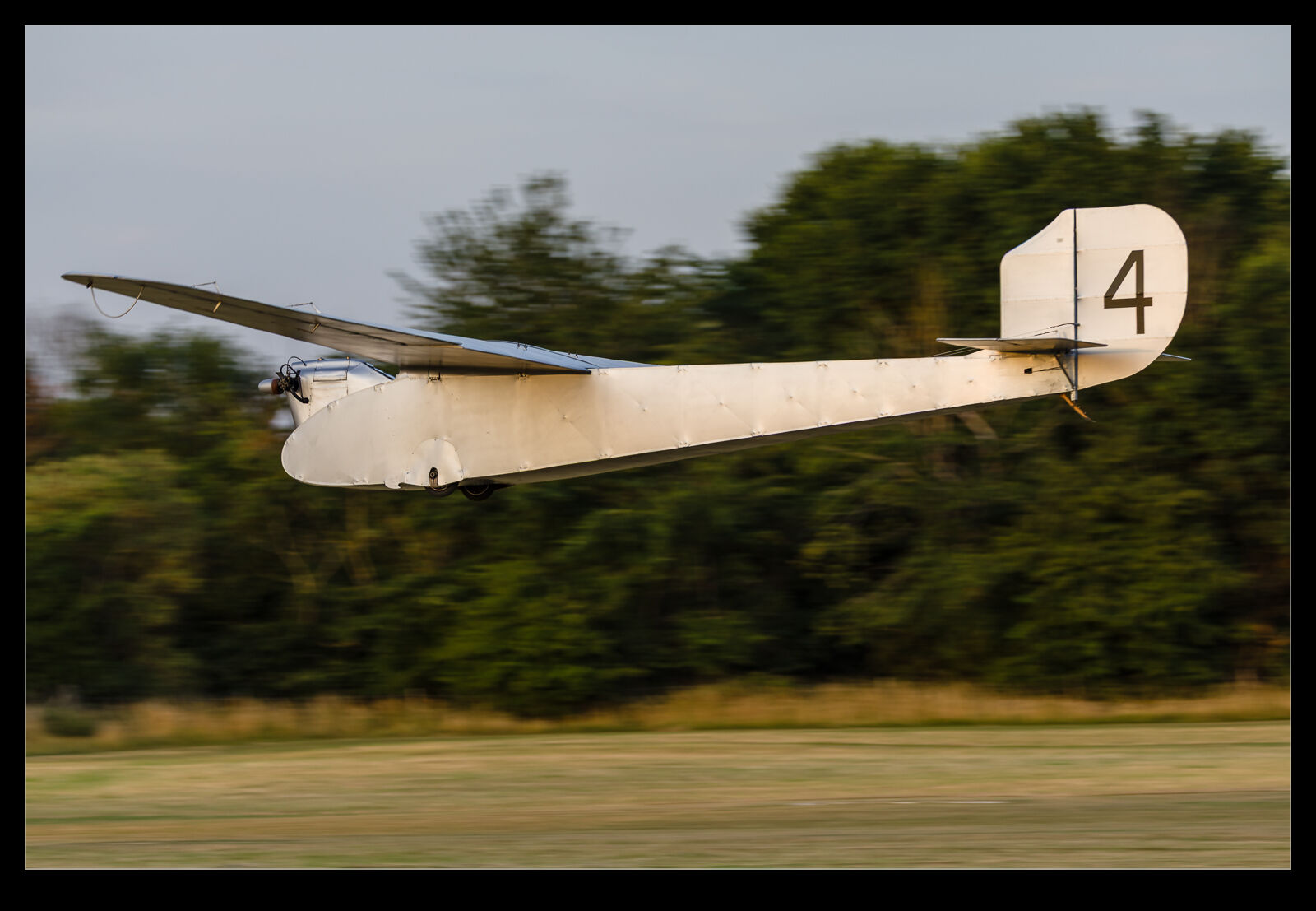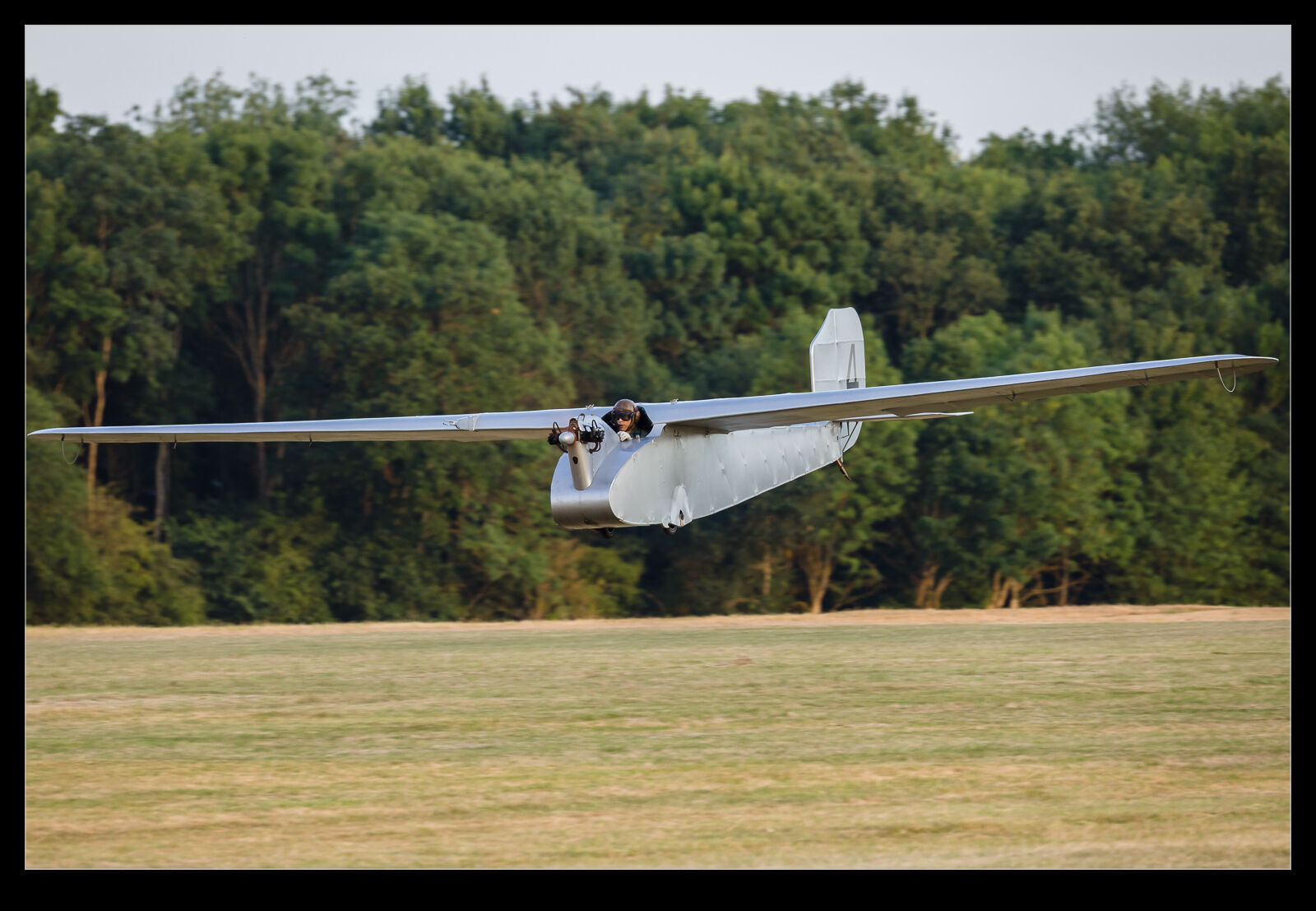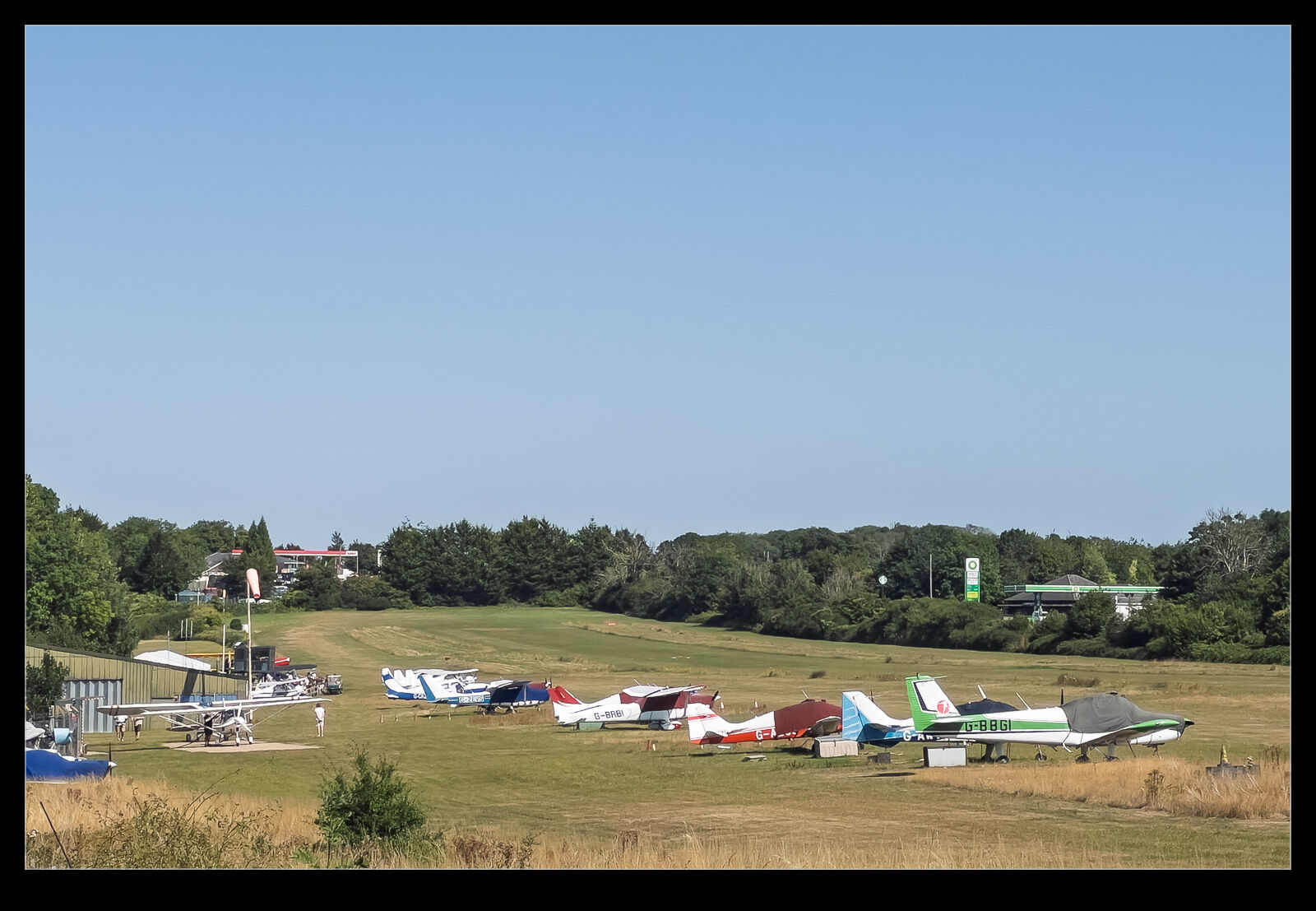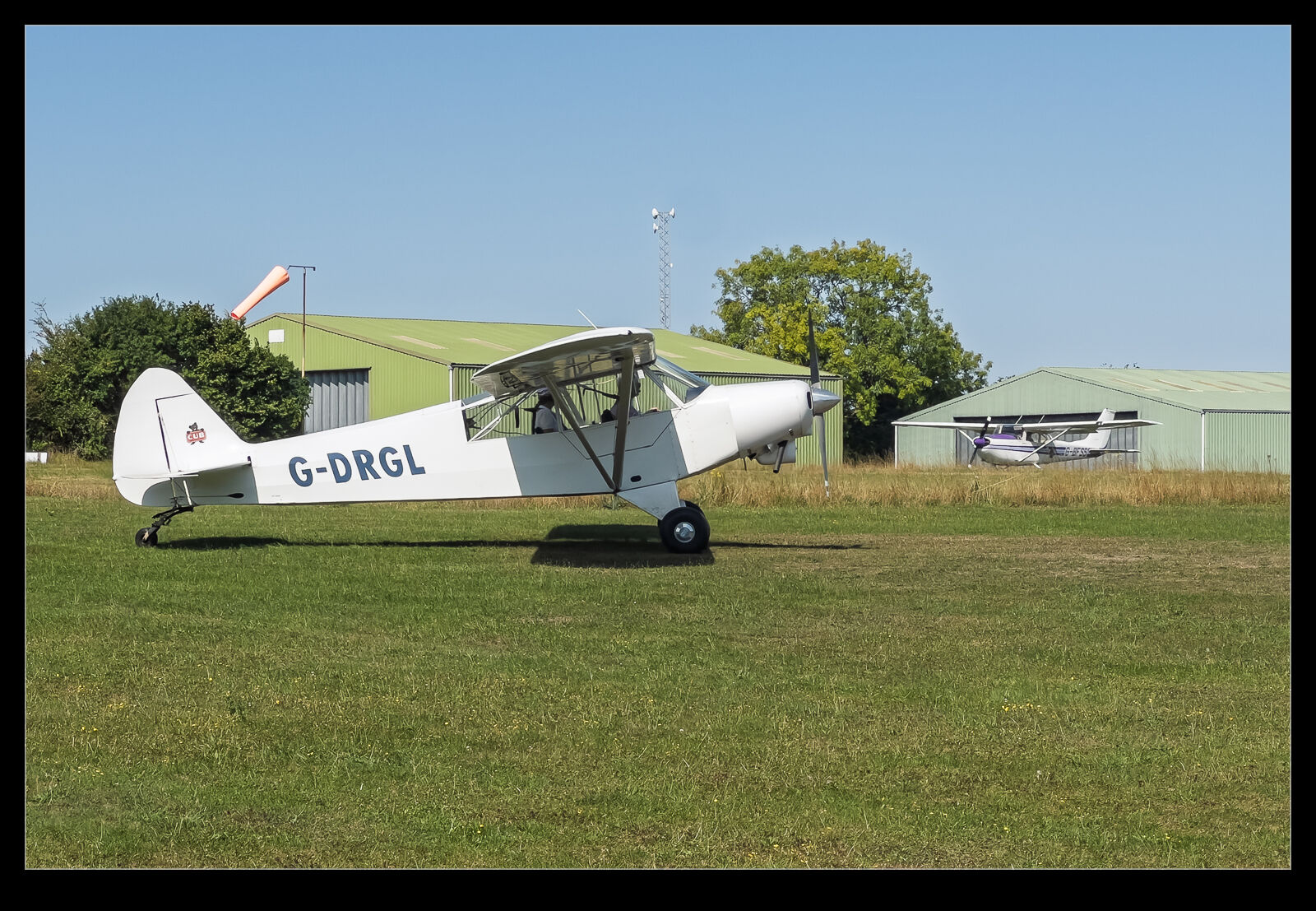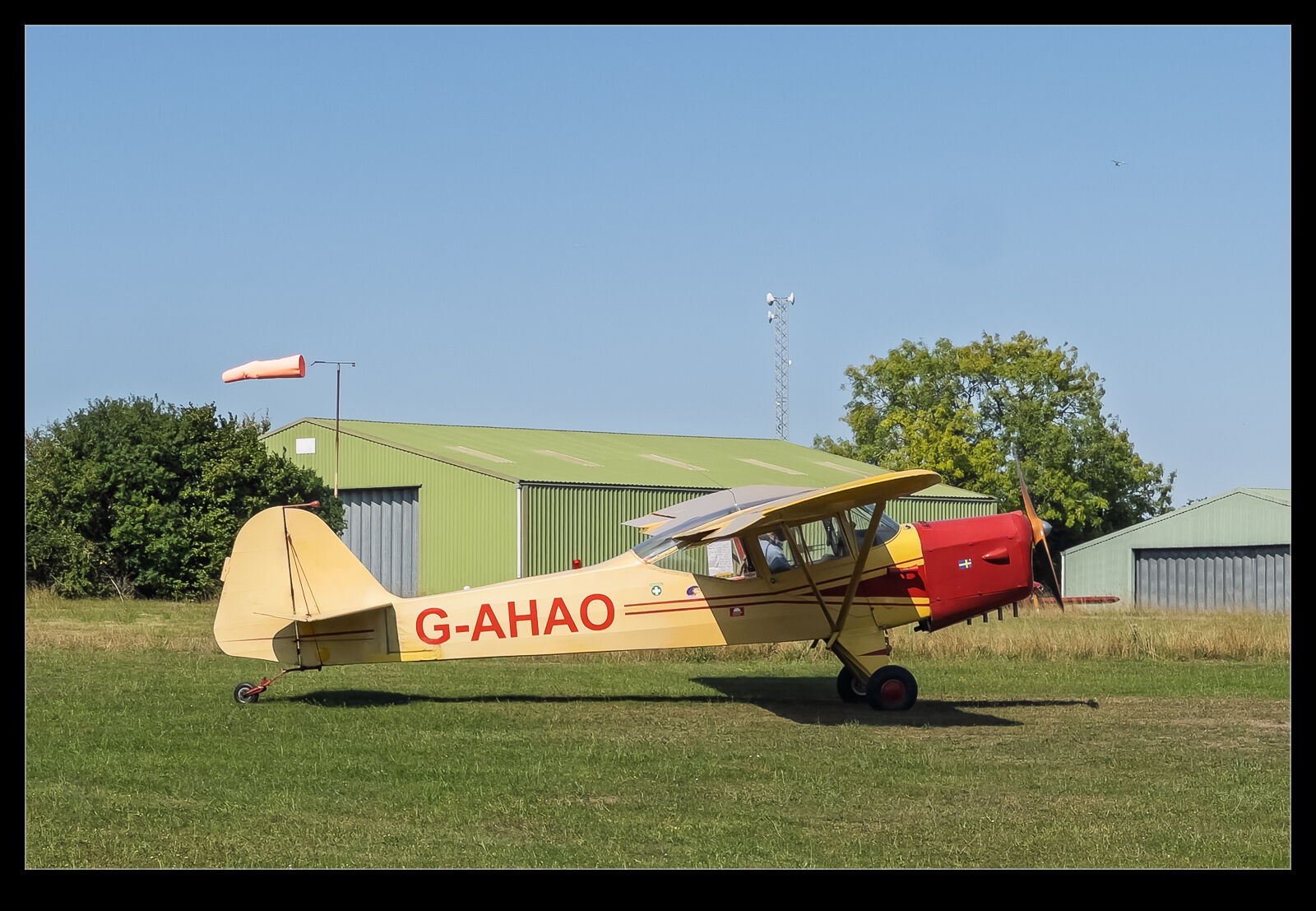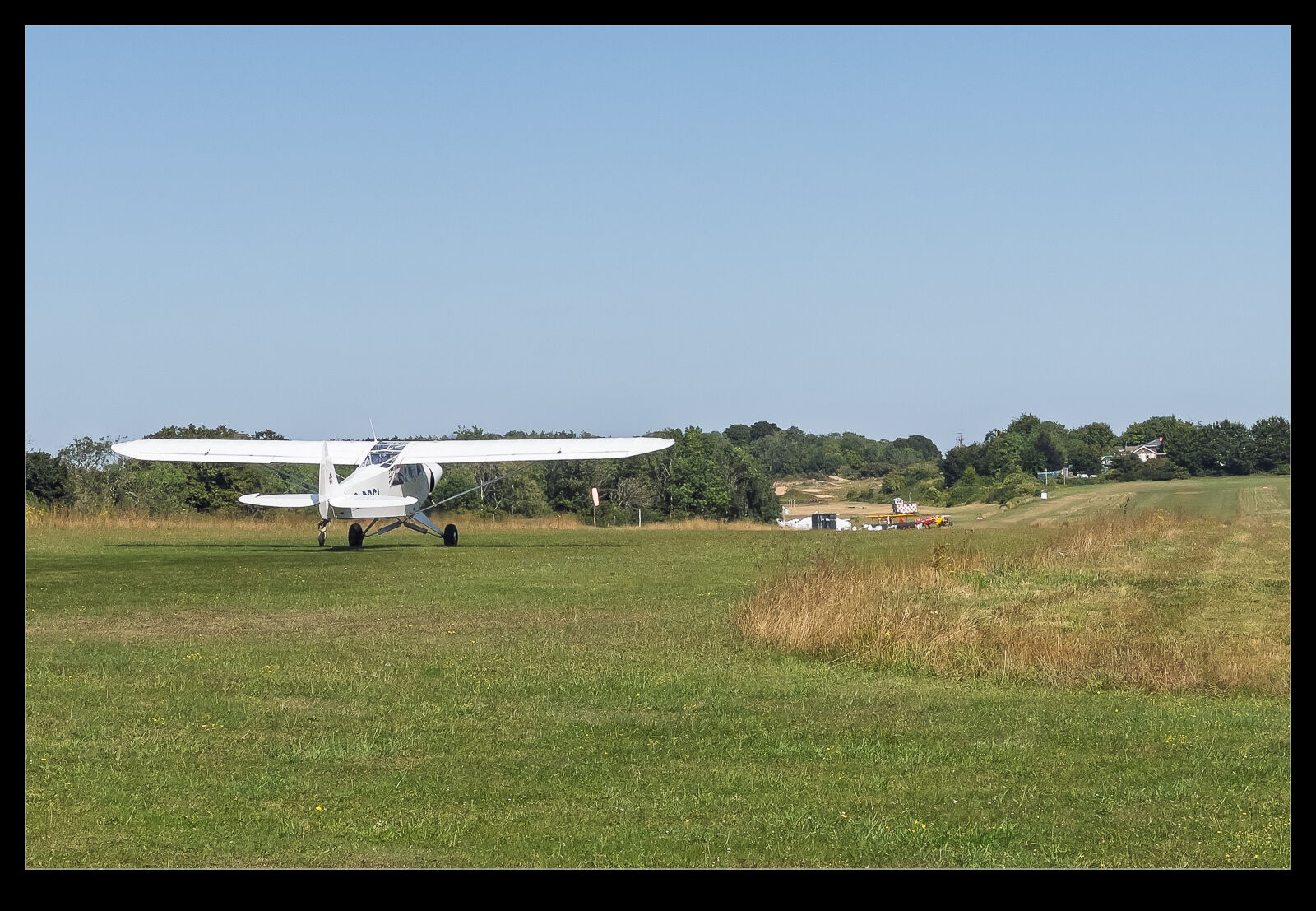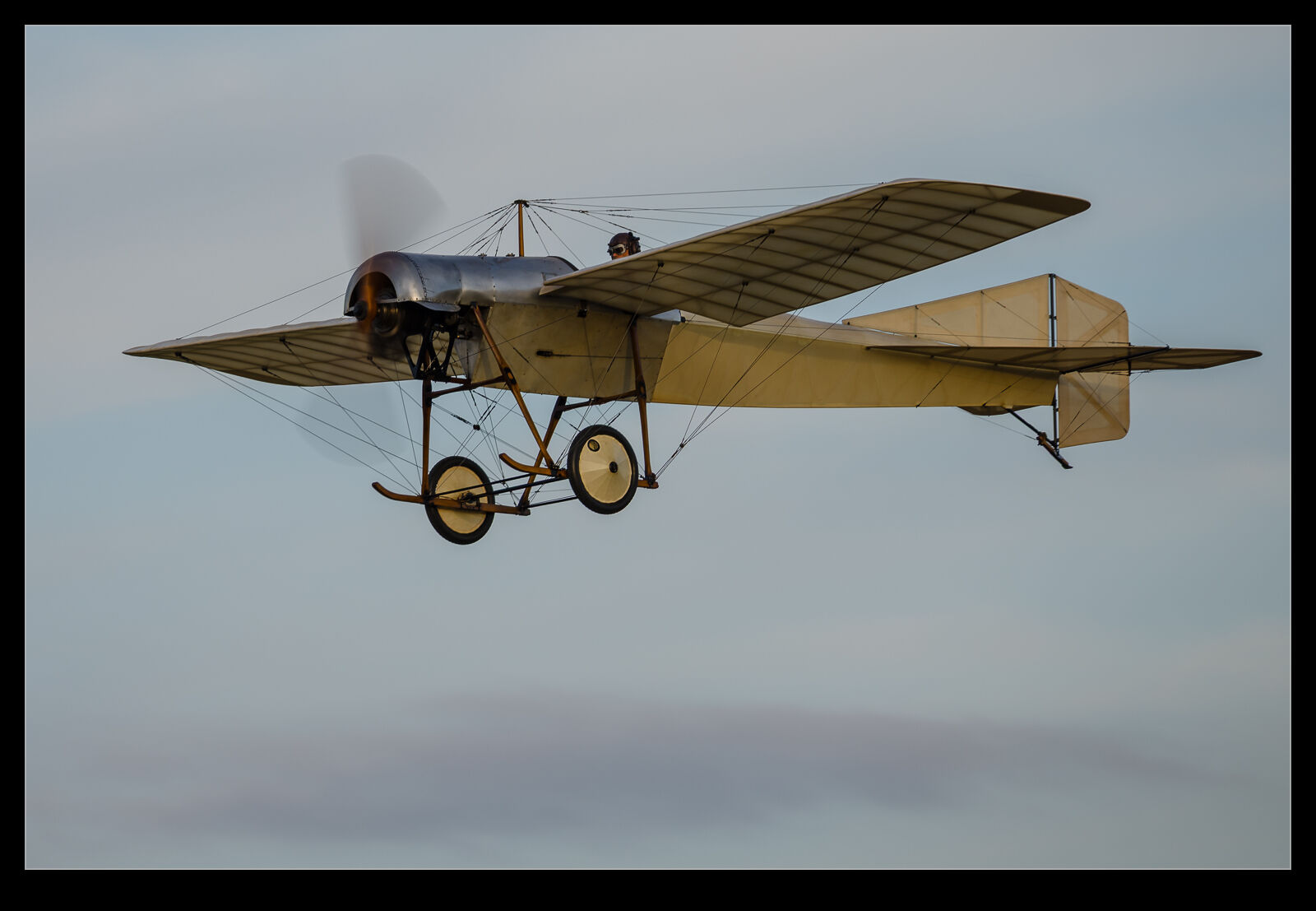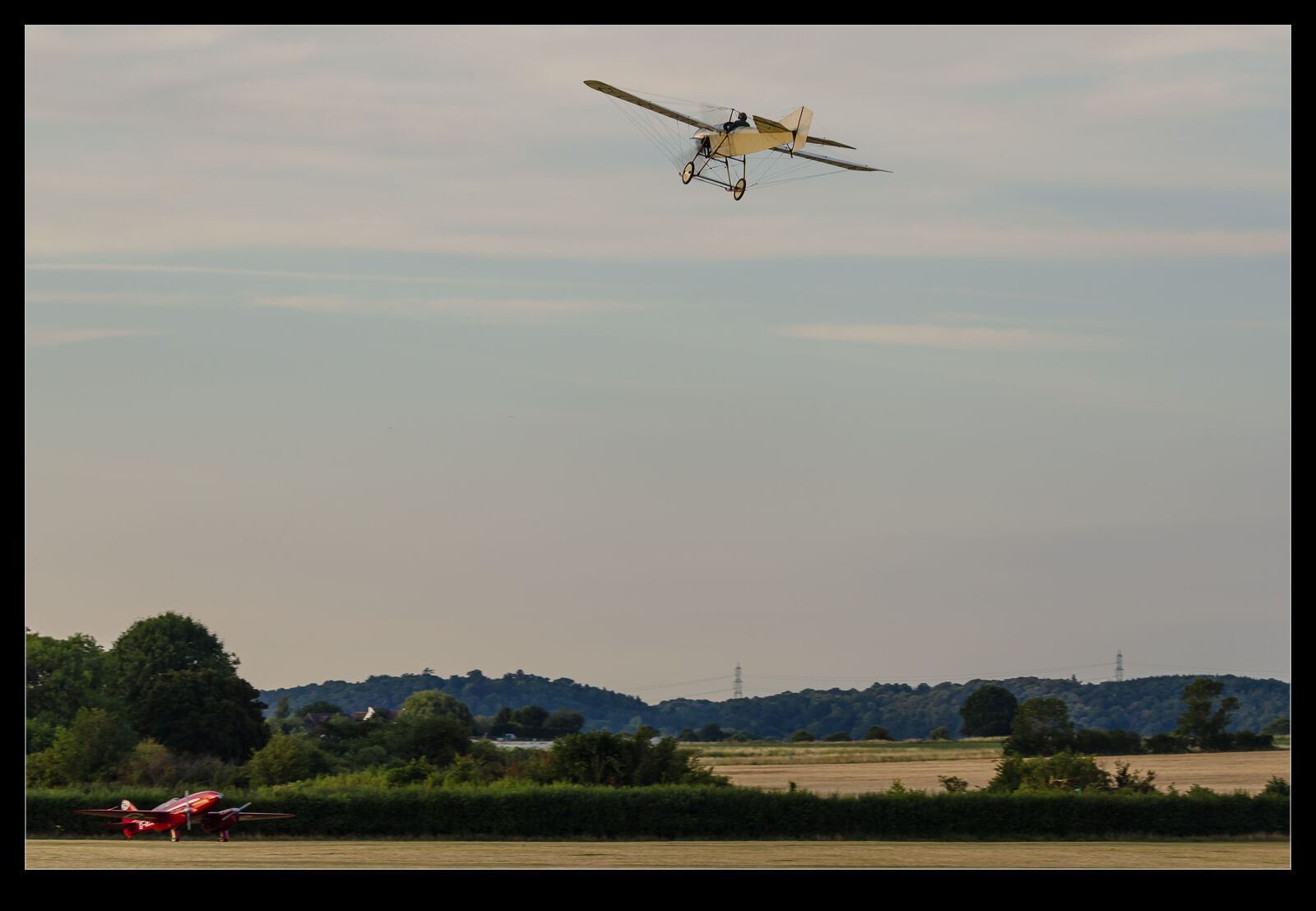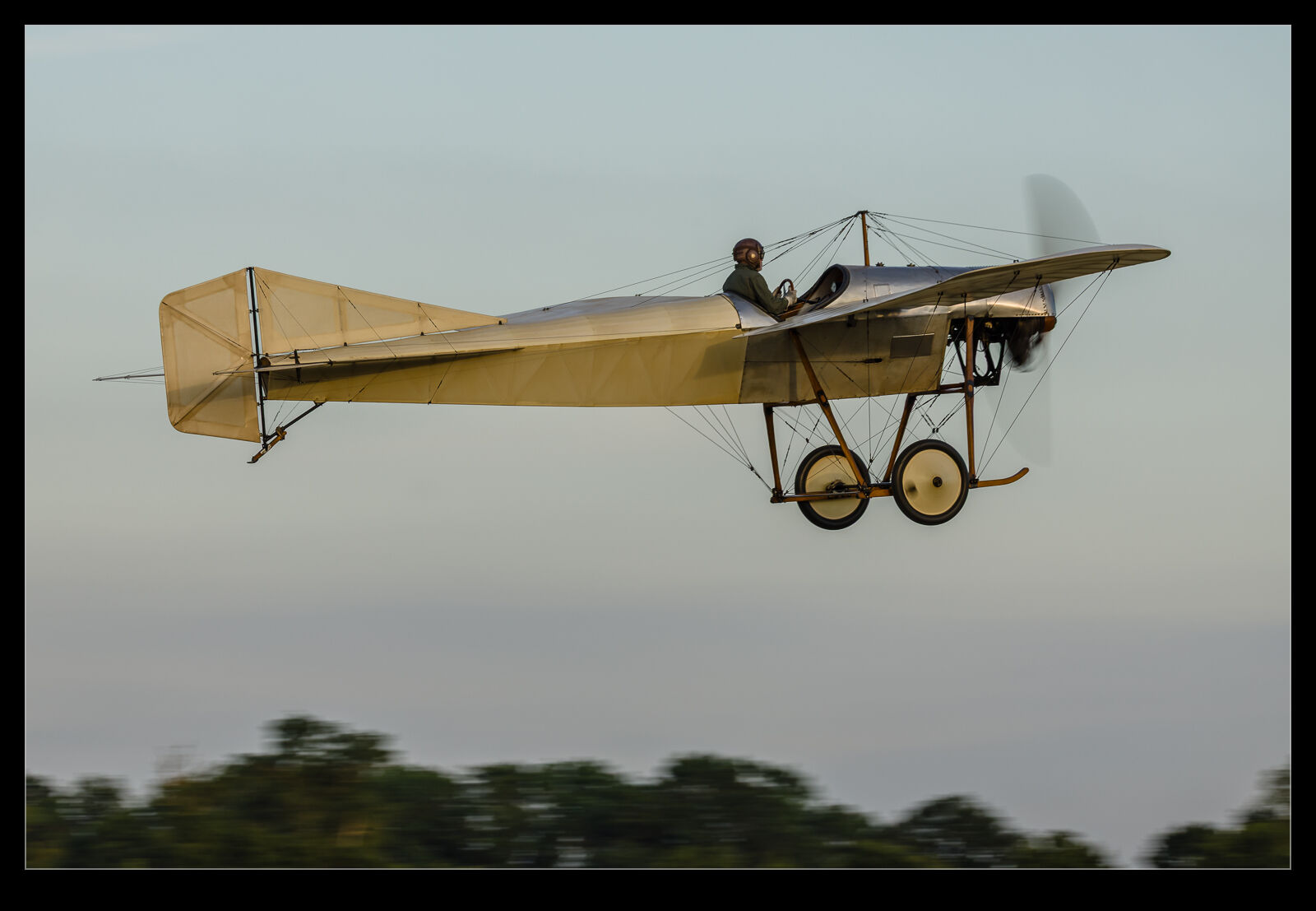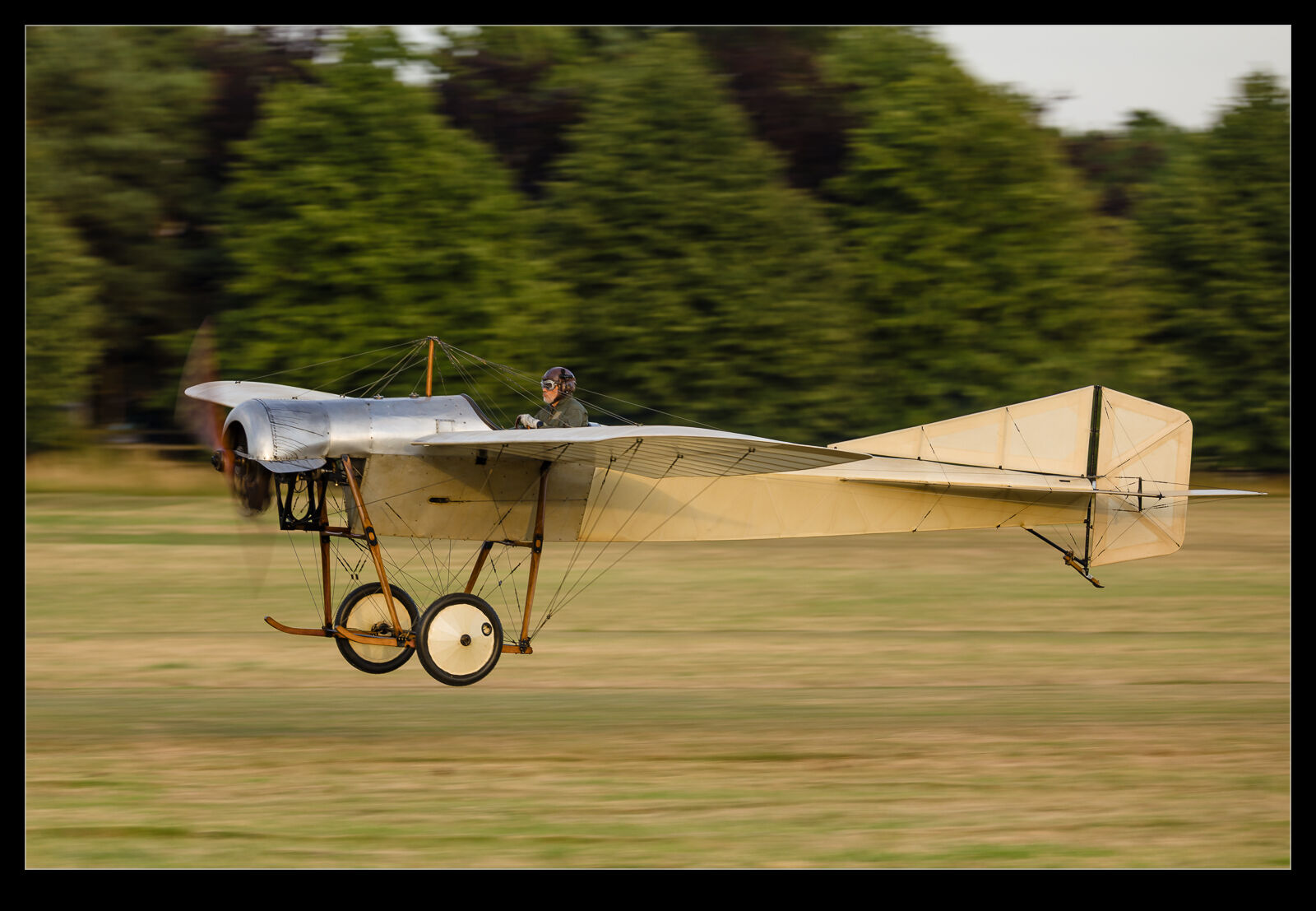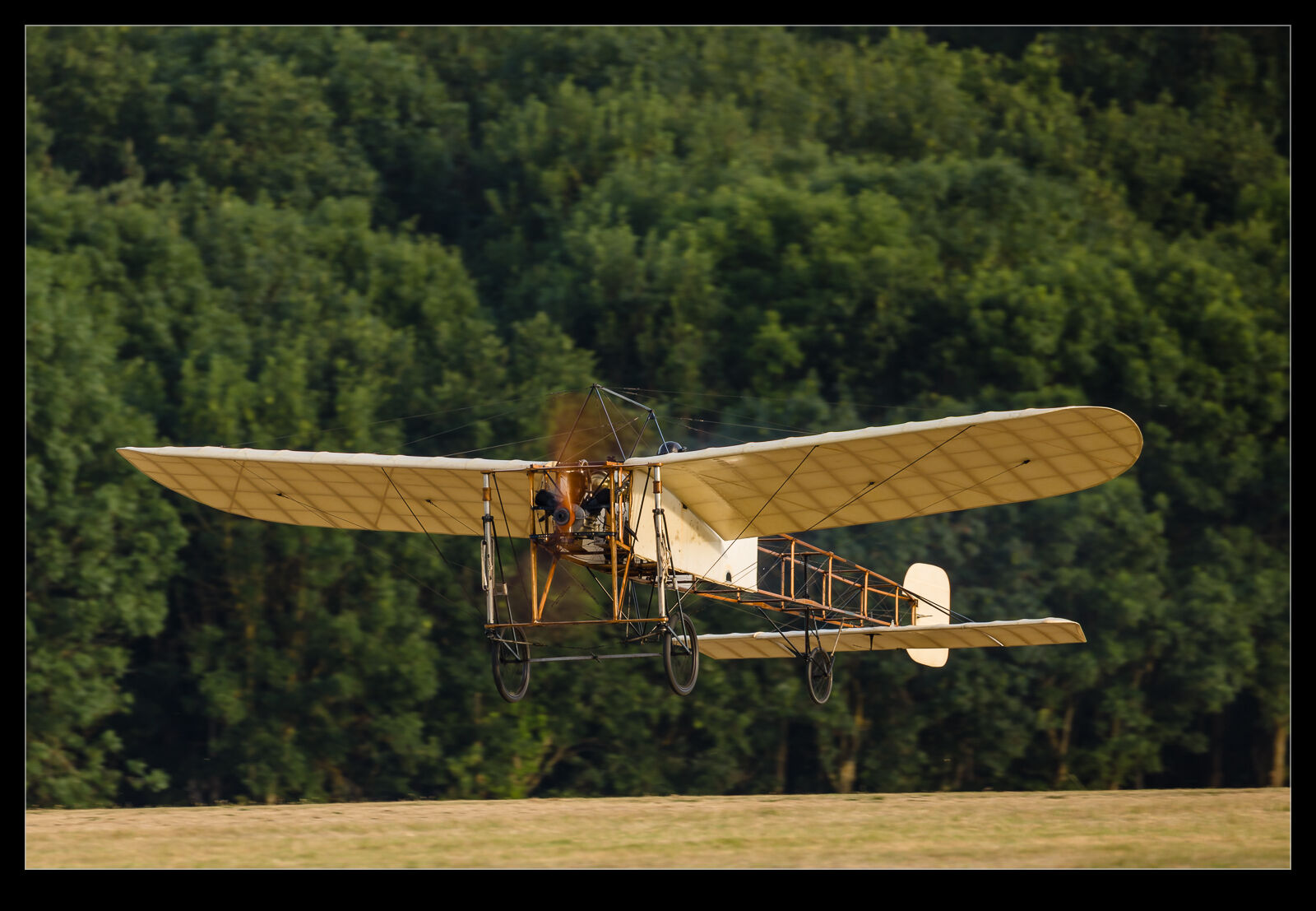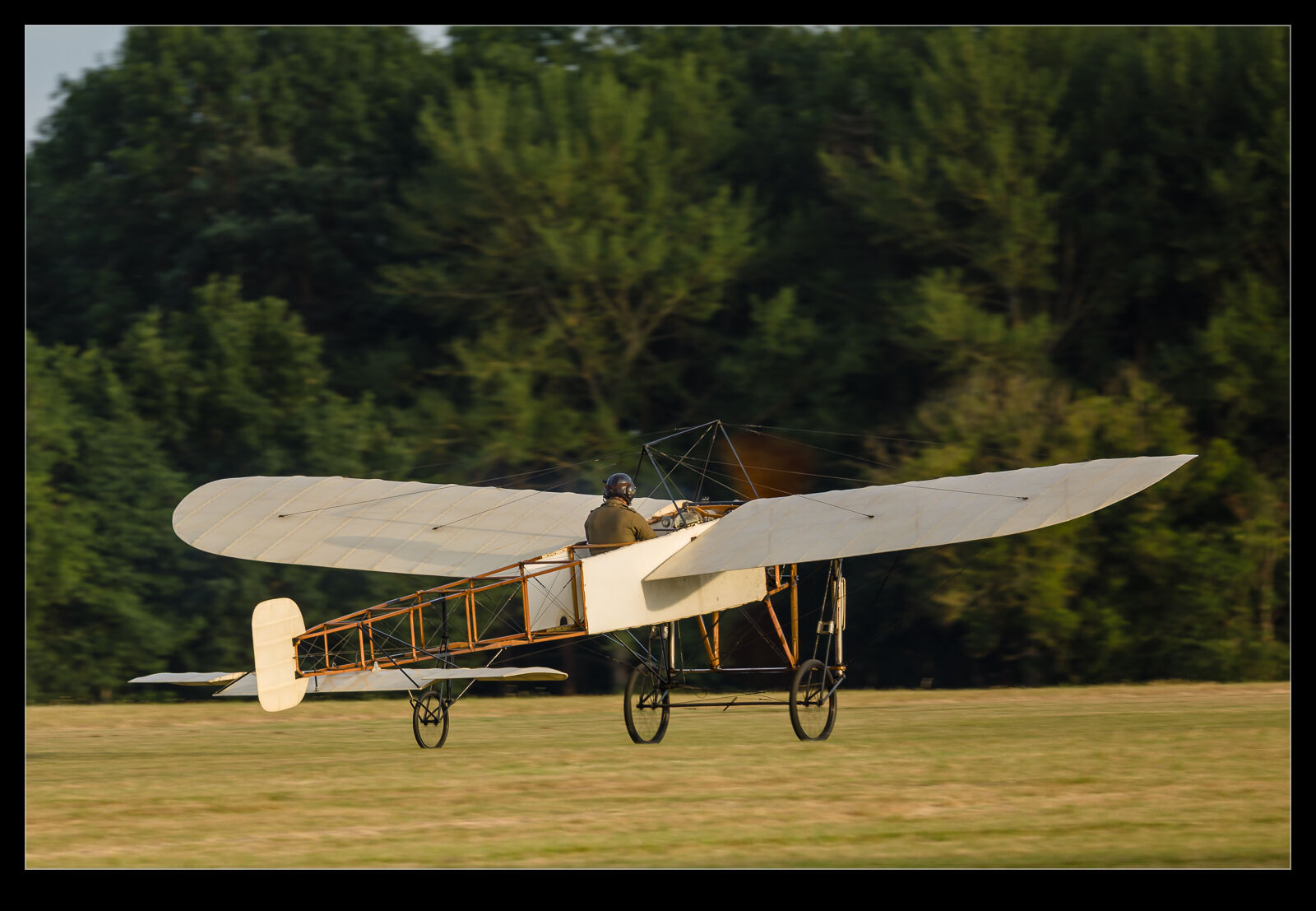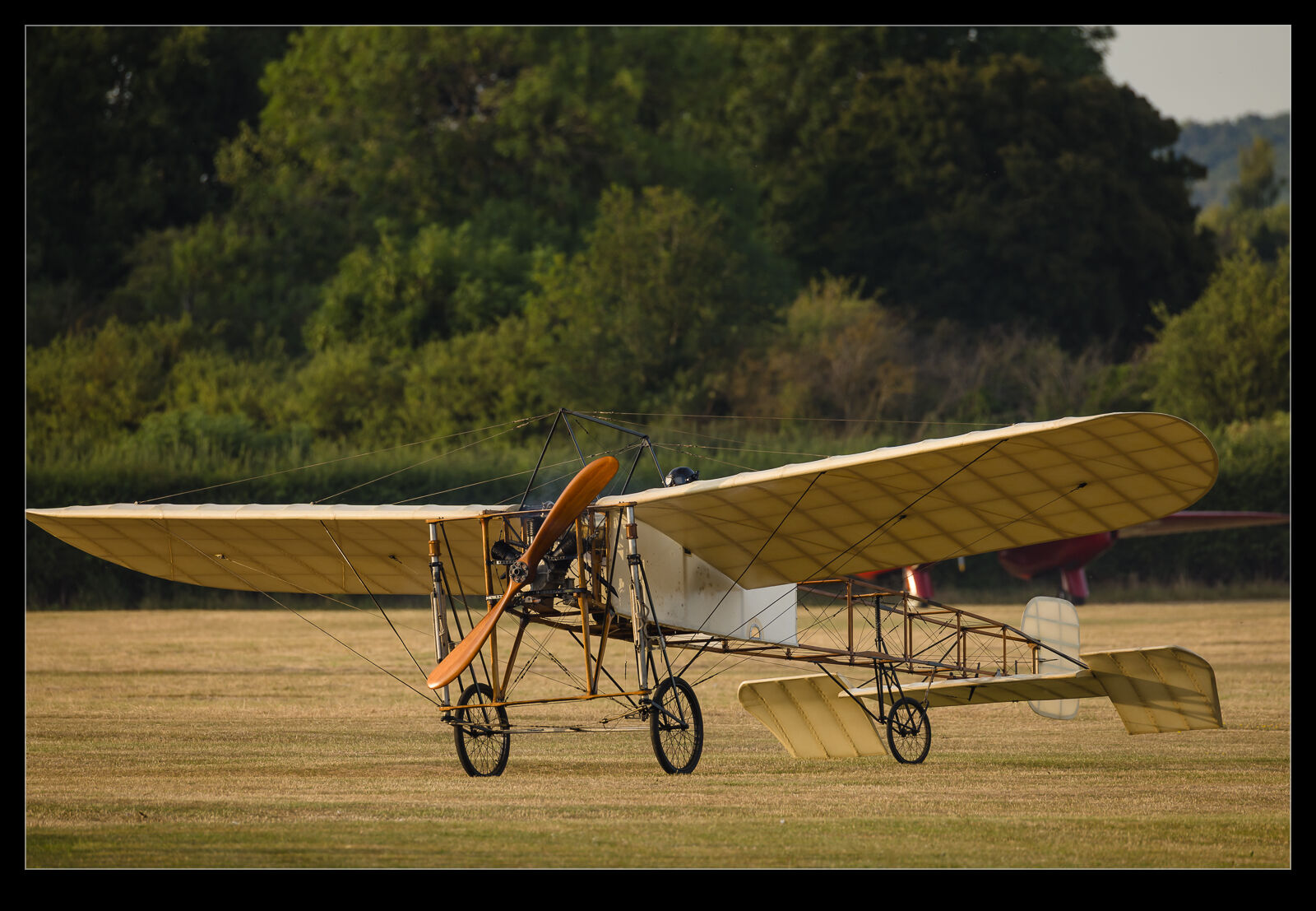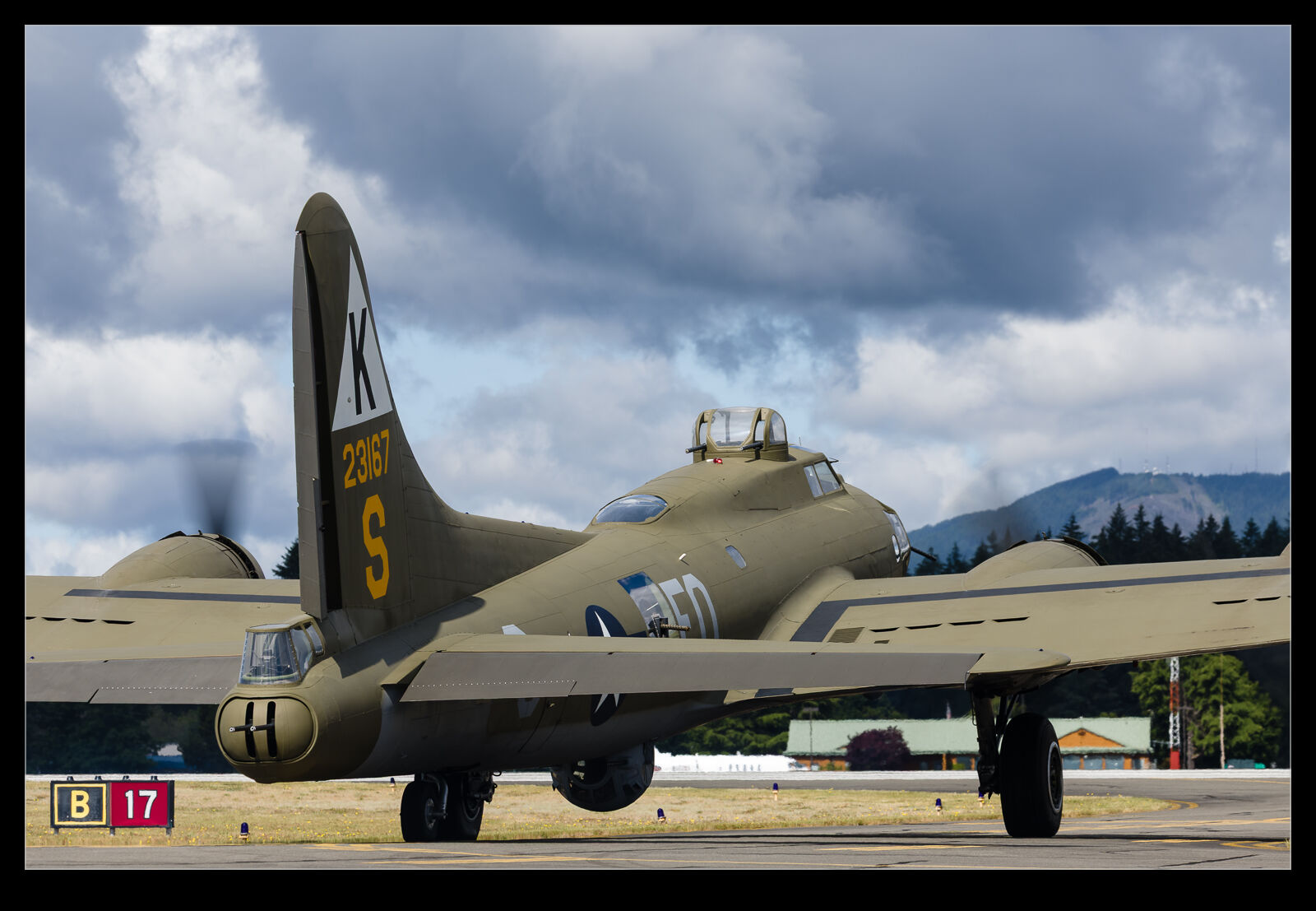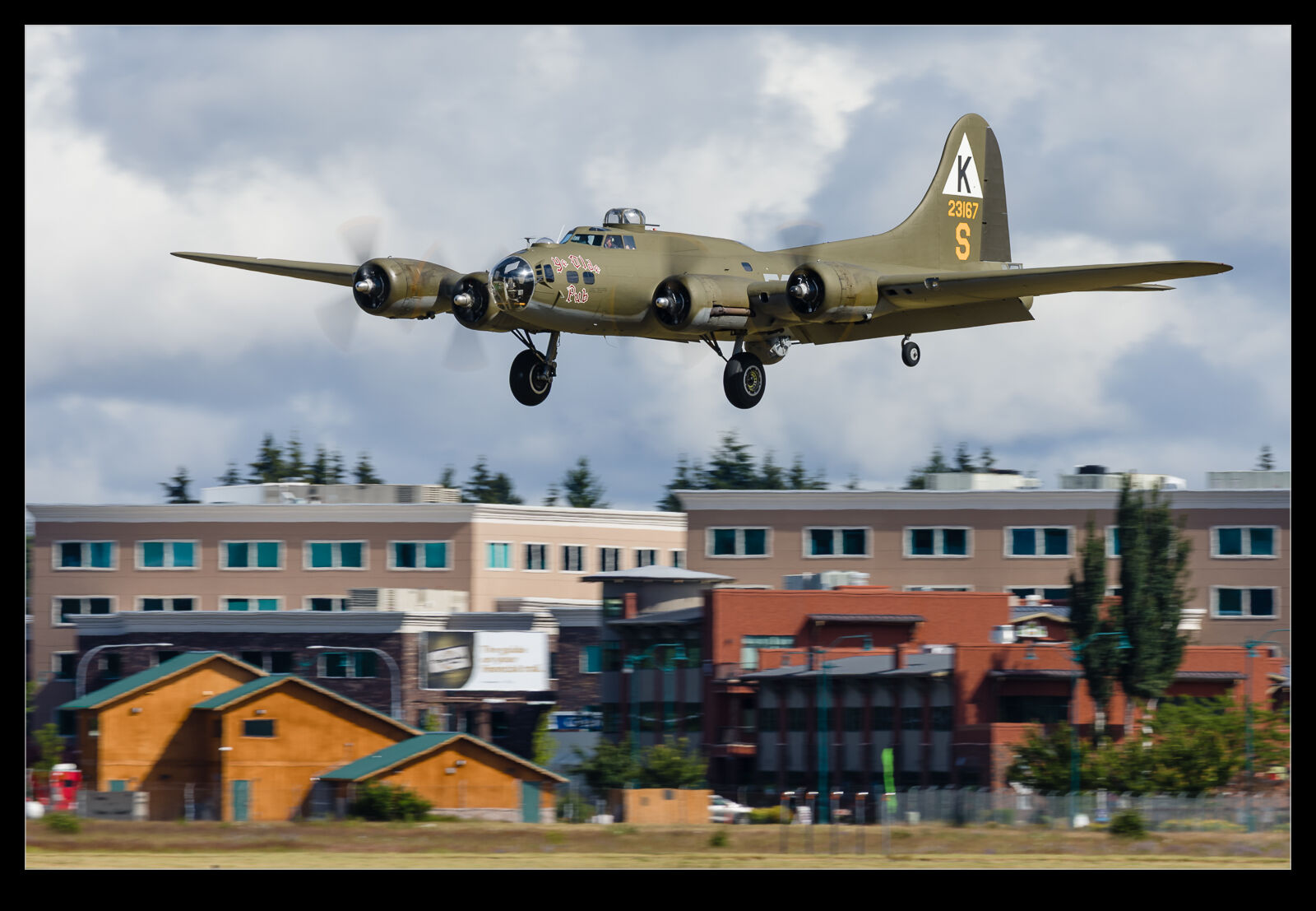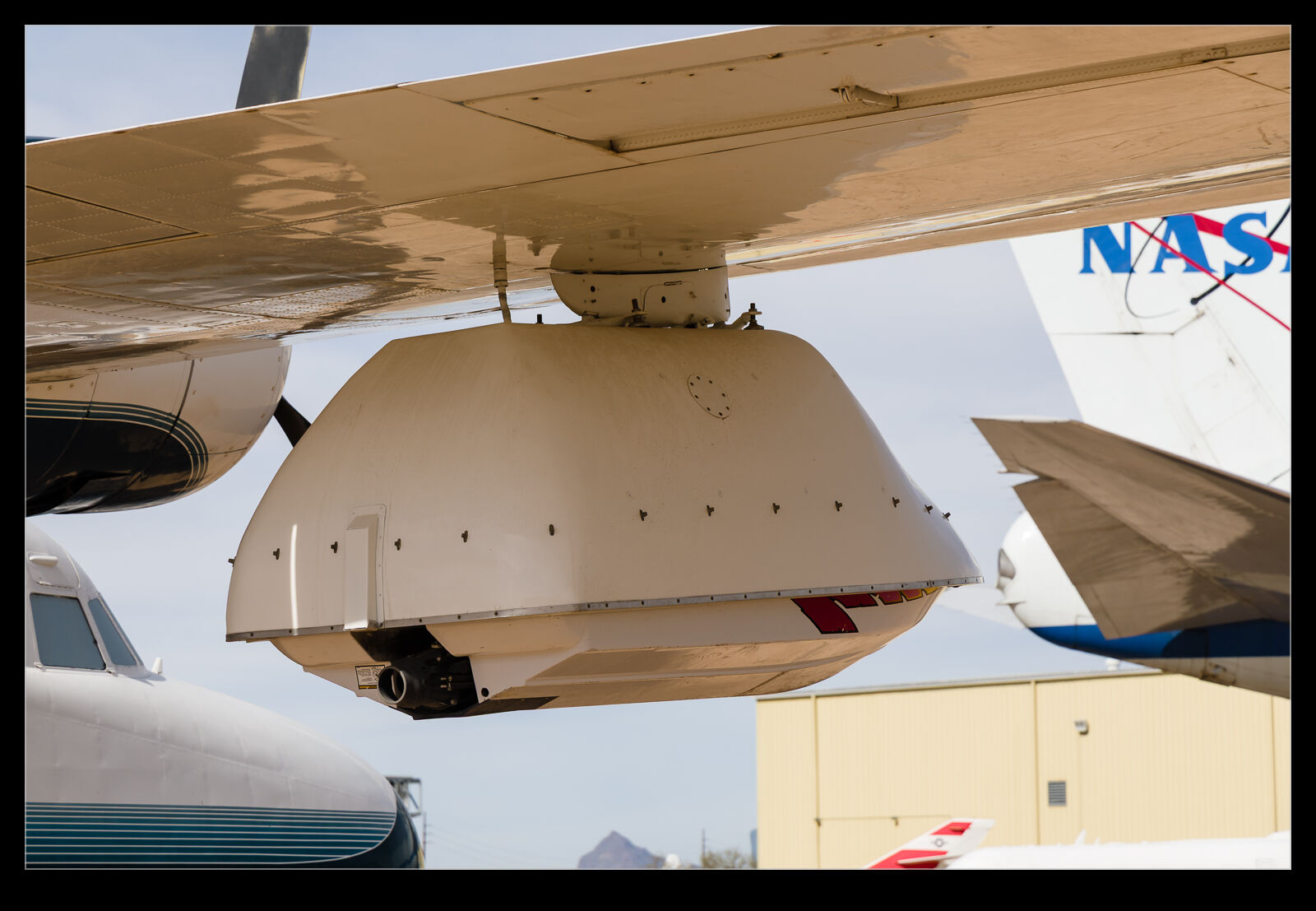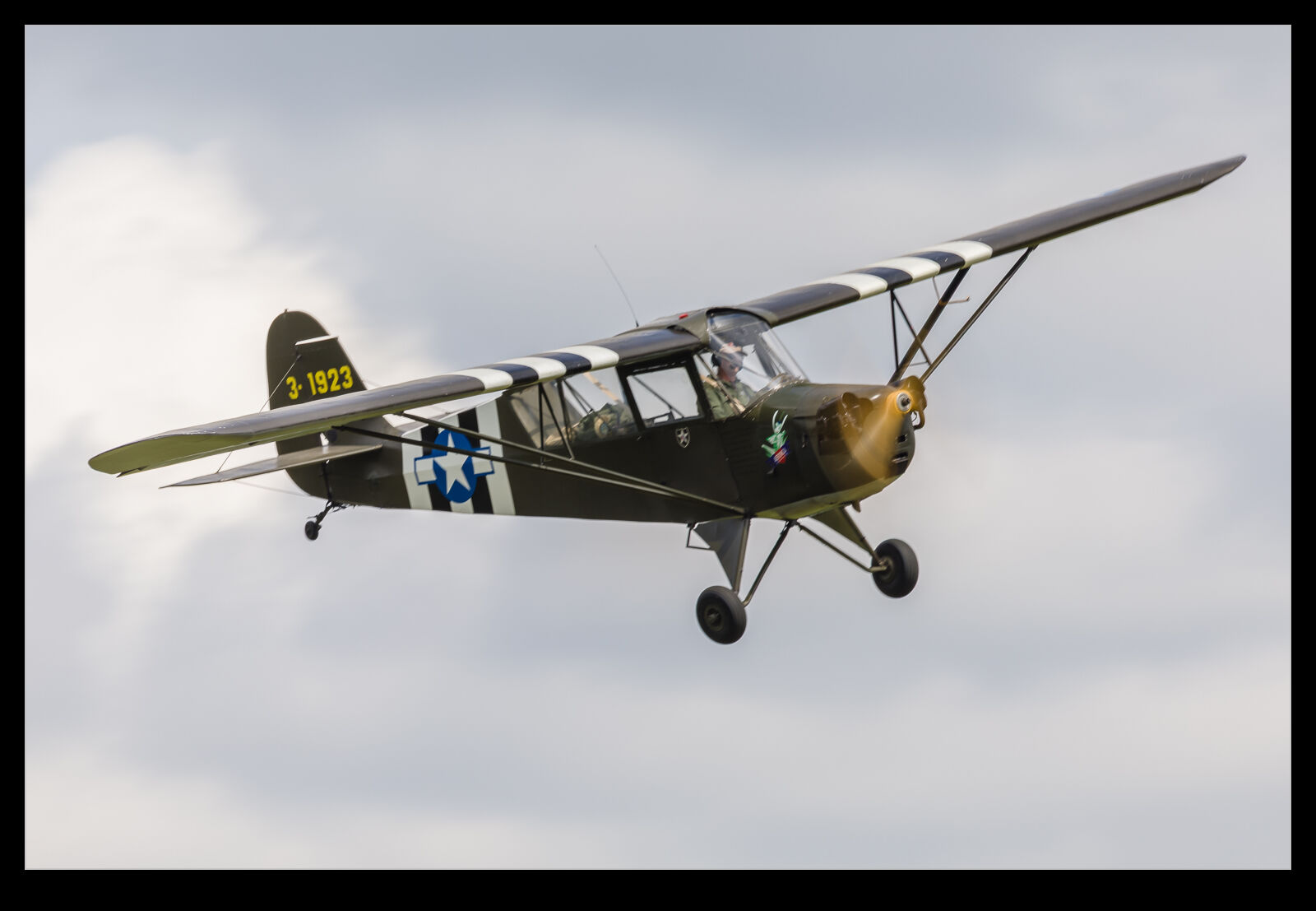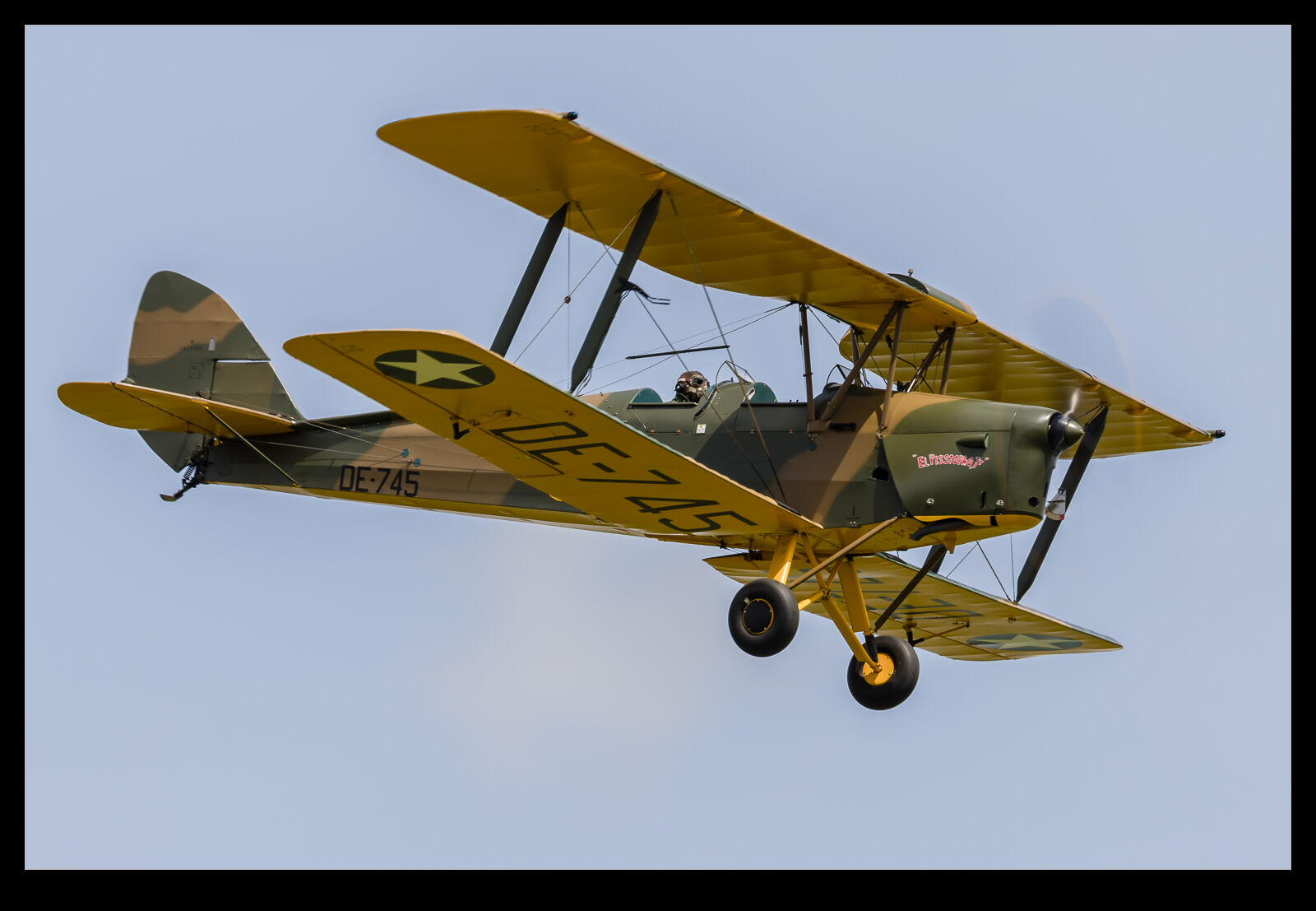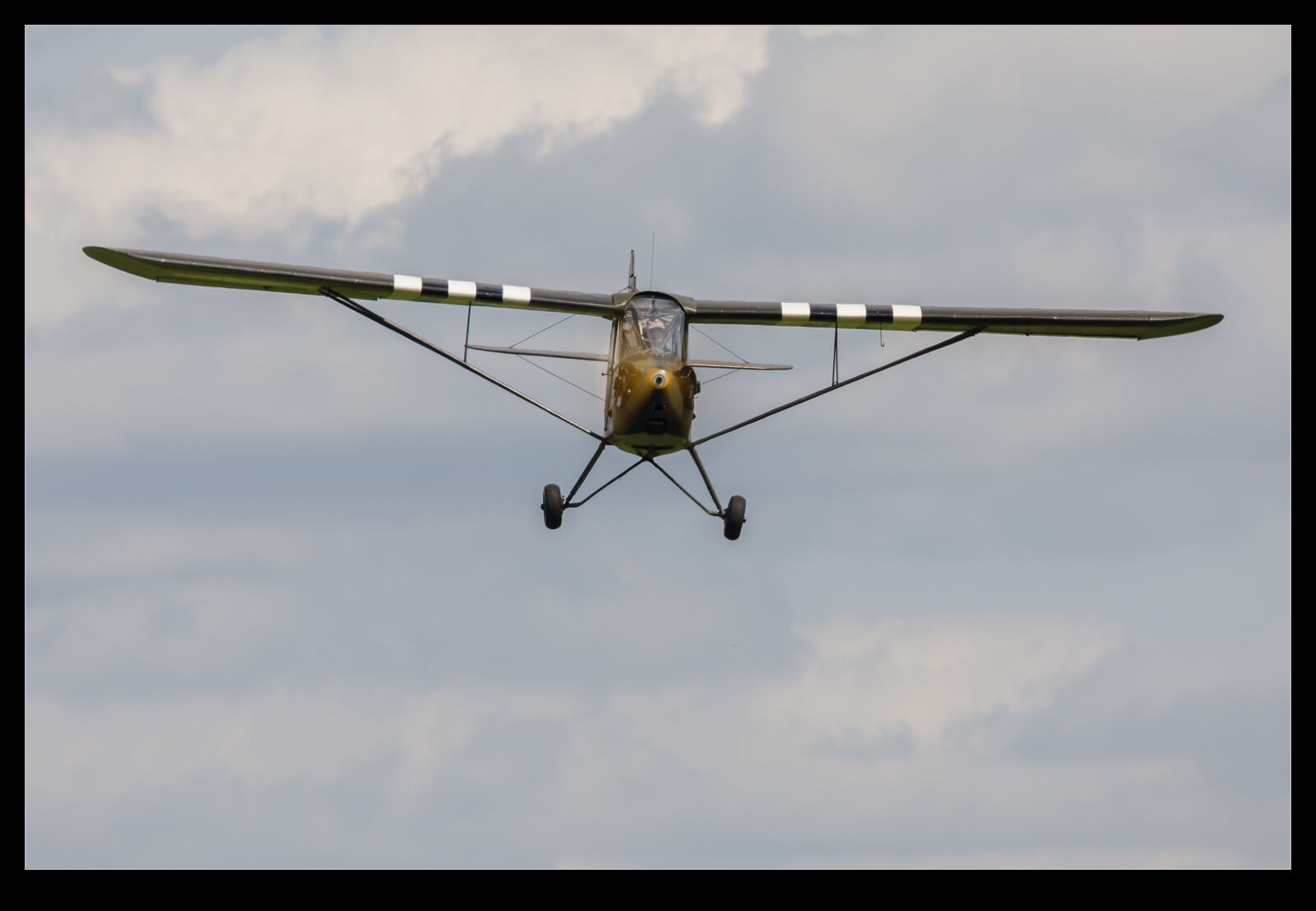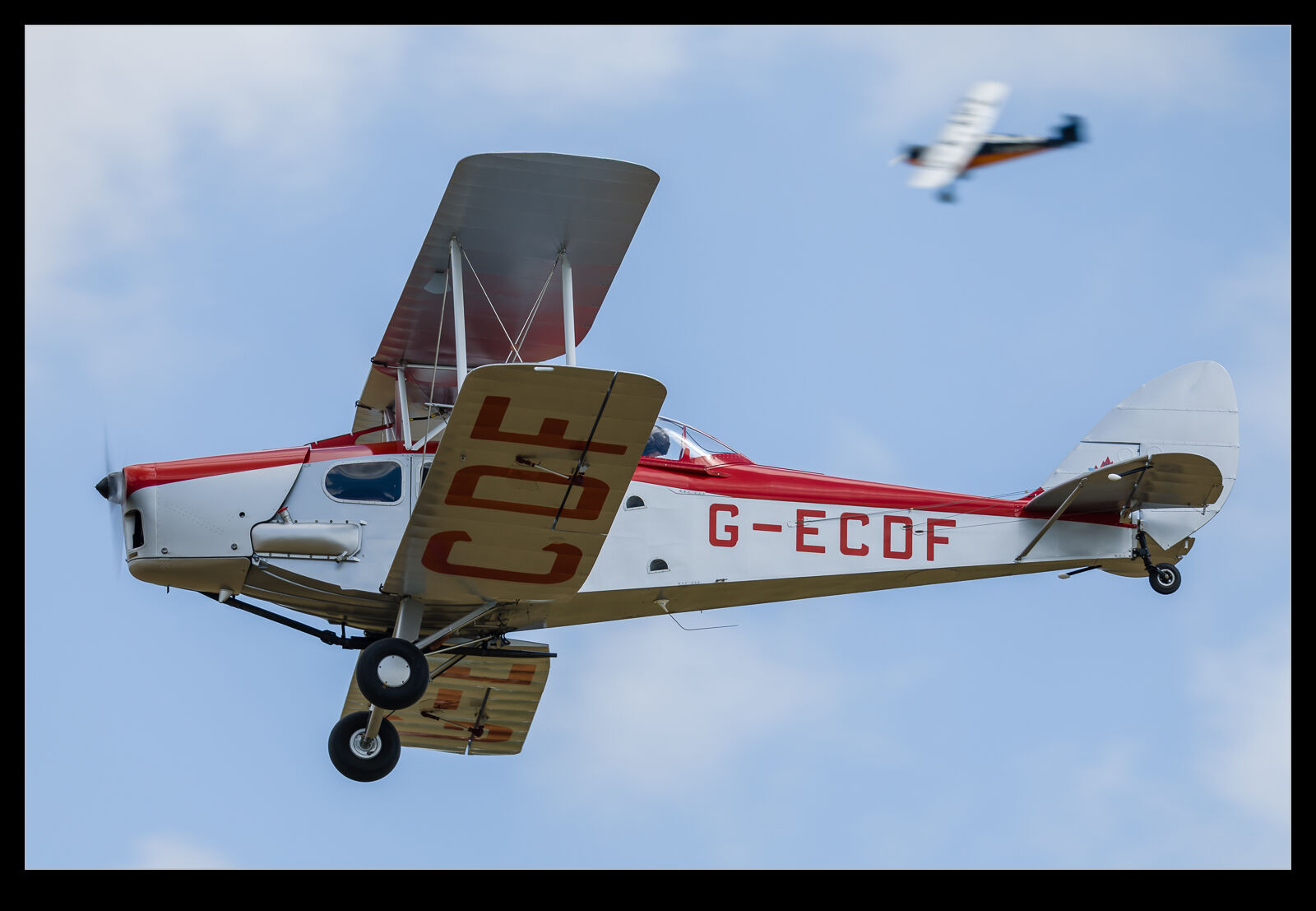 There have been a few posts of specific aircraft from the Shuttleworth’s Festival of Flight this summer. While those planes were of specific interest to me, there was an extensive display with many other types of planes taking part. Some of these were familiar types but some were new to me. This included variants of the de Havilland Moth family and an old Sopwith. I have run through the many shots I took that day and here is a selection of images of the displays although by no means a comprehensive one!
There have been a few posts of specific aircraft from the Shuttleworth’s Festival of Flight this summer. While those planes were of specific interest to me, there was an extensive display with many other types of planes taking part. Some of these were familiar types but some were new to me. This included variants of the de Havilland Moth family and an old Sopwith. I have run through the many shots I took that day and here is a selection of images of the displays although by no means a comprehensive one!
Tag Archives: piston
Have I Ever Seen a Boomerang?
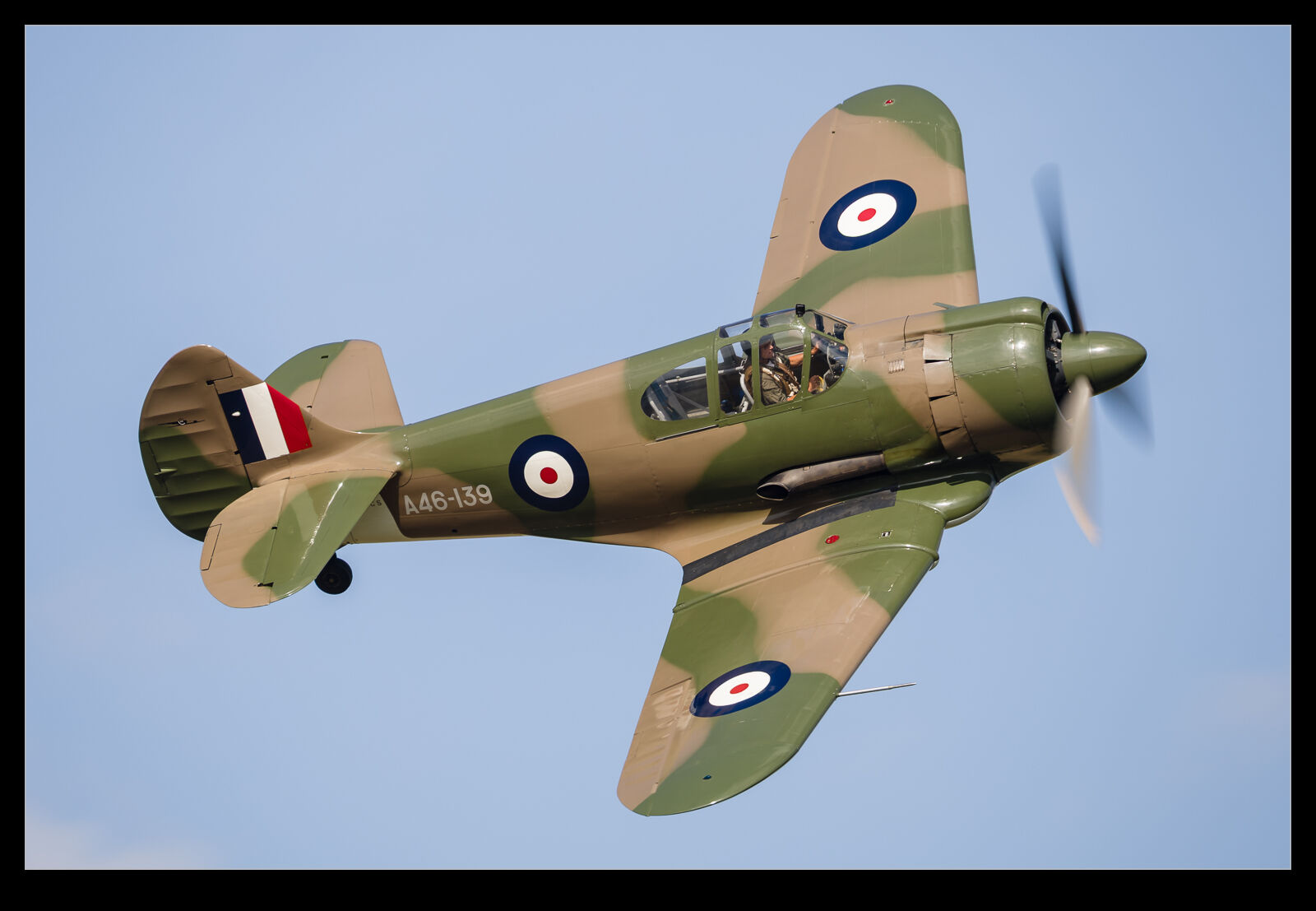 Before you think I am being ridiculous, I am not referring to the profiled wood that will come back to you but the plane. In fact, there is more than one plane called the Boomerang. A Rutan design called the Boomerang was a one off which I once saw on the ground at Oshkosh. However, it was also the name of a piston fighter built in Australia. I had never seen one of those before. If I am being totally honest, I still haven’t since the one I saw was a replica built but it is a pretty impressive replica so we shall let that go.
Before you think I am being ridiculous, I am not referring to the profiled wood that will come back to you but the plane. In fact, there is more than one plane called the Boomerang. A Rutan design called the Boomerang was a one off which I once saw on the ground at Oshkosh. However, it was also the name of a piston fighter built in Australia. I had never seen one of those before. If I am being totally honest, I still haven’t since the one I saw was a replica built but it is a pretty impressive replica so we shall let that go.
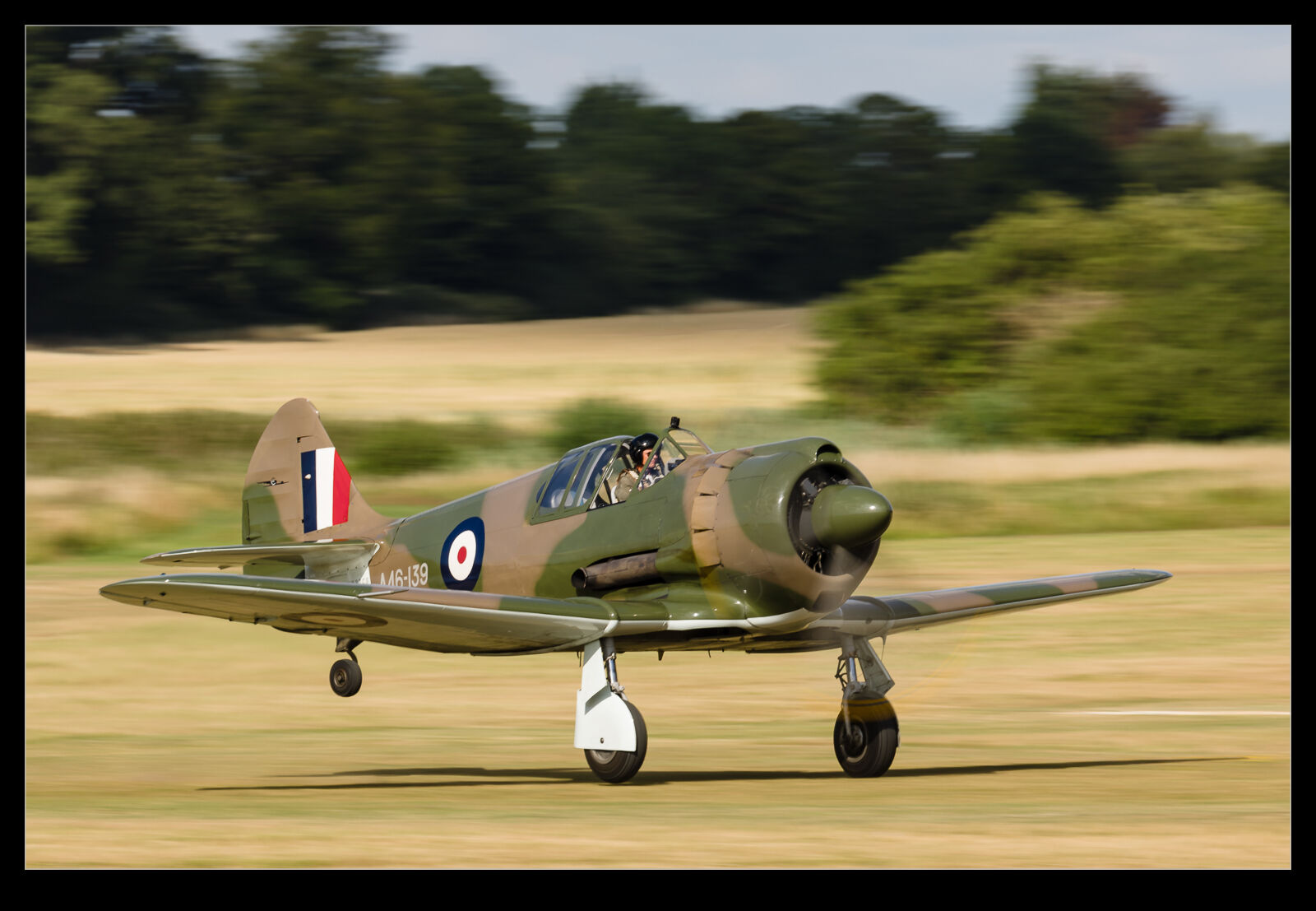 It was brought to the Festival of Flight that was held by the Shuttleworth Trust at Old Warden in the summer. Having an old type with an unfamiliar shape when you can get blasé about the various Spitfires, Hurricanes, Mustangs etc. is a nice change. It had a great paint job, and the tighter confines of Old Warden allowed it to be displayed nice and close to the crowd line. Certainly, one of the more notable things I got to shoot this year.
It was brought to the Festival of Flight that was held by the Shuttleworth Trust at Old Warden in the summer. Having an old type with an unfamiliar shape when you can get blasé about the various Spitfires, Hurricanes, Mustangs etc. is a nice change. It had a great paint job, and the tighter confines of Old Warden allowed it to be displayed nice and close to the crowd line. Certainly, one of the more notable things I got to shoot this year.
A Pair of Edwardians in Gorgeous Light
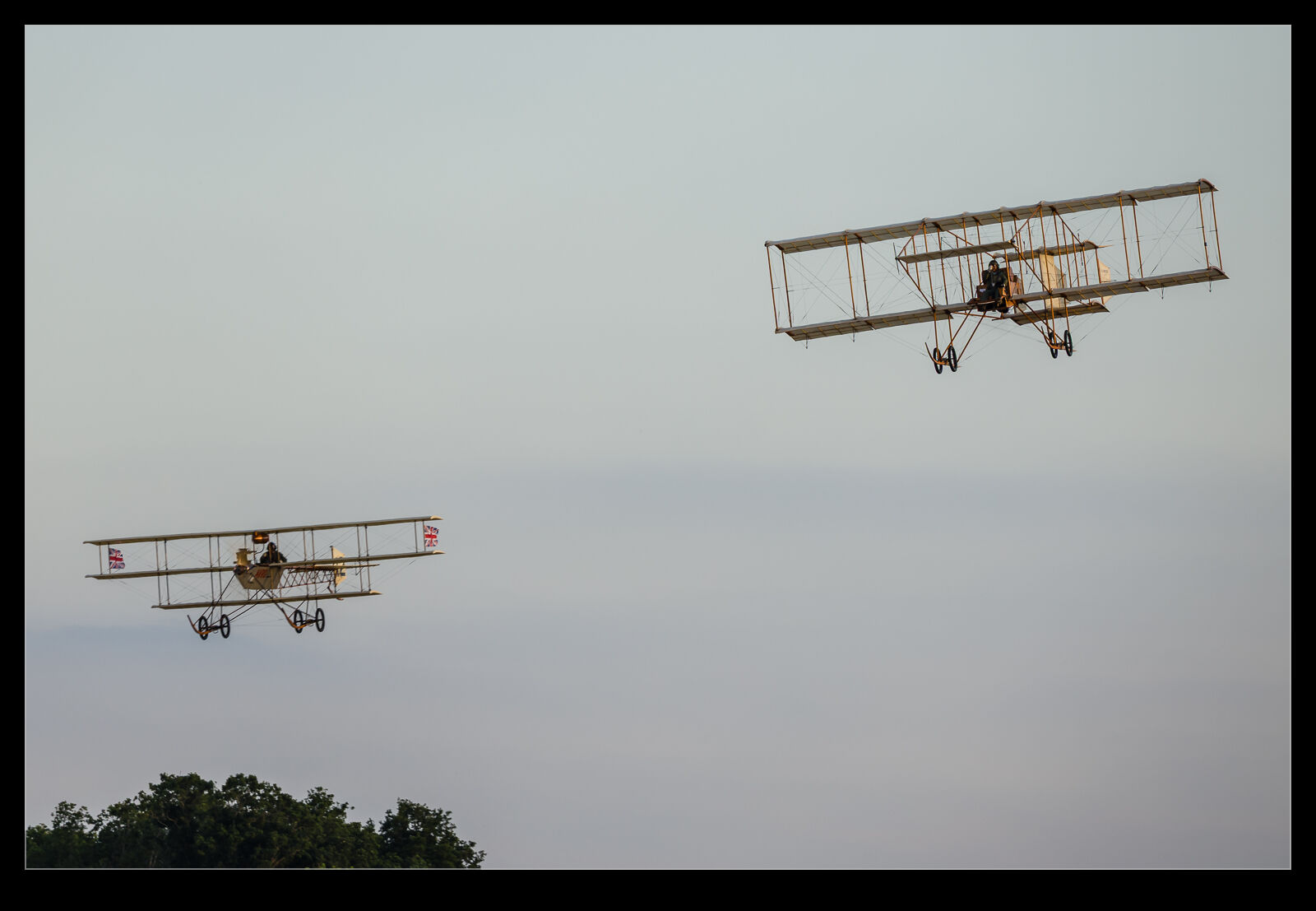 The great conditions for Shuttleworth’s Festival of Flight Sunday show meant we got to see a lot of the more fragile types fly. Later in this section of the show, we had the Bristol Boxkite and the Avro Triplane take to the sky. I know they are both replicas but that doesn’t make them any less rare or vulnerable. They flew around for quite a while and, since they are not speedy aircraft, they can keep it all close in front of the crowd. The light was definitely at its peak during their display. Here are a few shots of the two of them putting on a show.
The great conditions for Shuttleworth’s Festival of Flight Sunday show meant we got to see a lot of the more fragile types fly. Later in this section of the show, we had the Bristol Boxkite and the Avro Triplane take to the sky. I know they are both replicas but that doesn’t make them any less rare or vulnerable. They flew around for quite a while and, since they are not speedy aircraft, they can keep it all close in front of the crowd. The light was definitely at its peak during their display. Here are a few shots of the two of them putting on a show.
This is Not a Canberra or a Lightning!
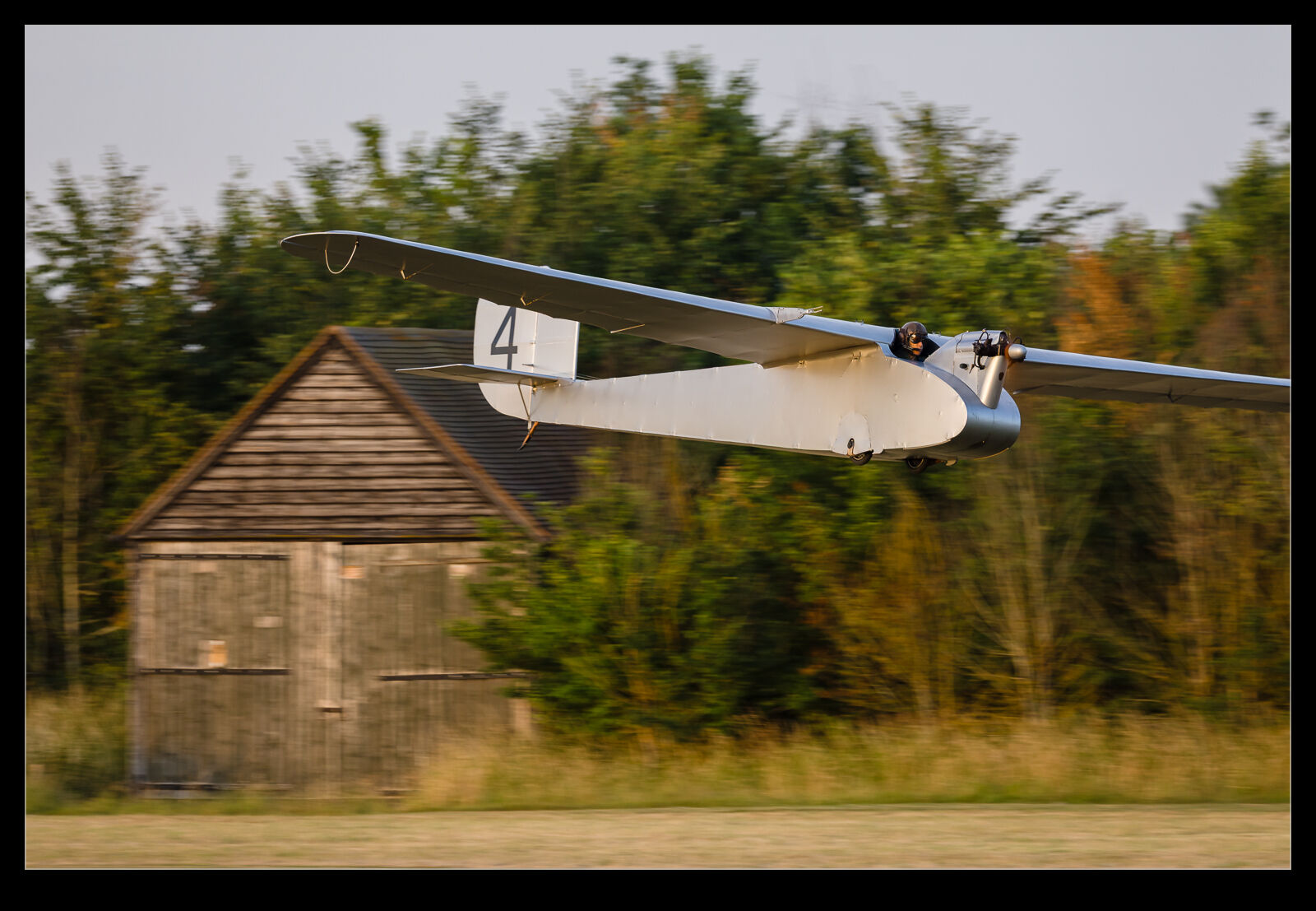 The name English Electric is well known in aviation circles. Before it was subsumed into the British Aircraft Corporation, it had produced the Lightning interceptor and the Canberra bomber. The Lightning might have got more glory, but the Canberra was by far the more successful type with excellent performance. However, there is a lesser-known type that came from the company a long time before.
The name English Electric is well known in aviation circles. Before it was subsumed into the British Aircraft Corporation, it had produced the Lightning interceptor and the Canberra bomber. The Lightning might have got more glory, but the Canberra was by far the more successful type with excellent performance. However, there is a lesser-known type that came from the company a long time before.
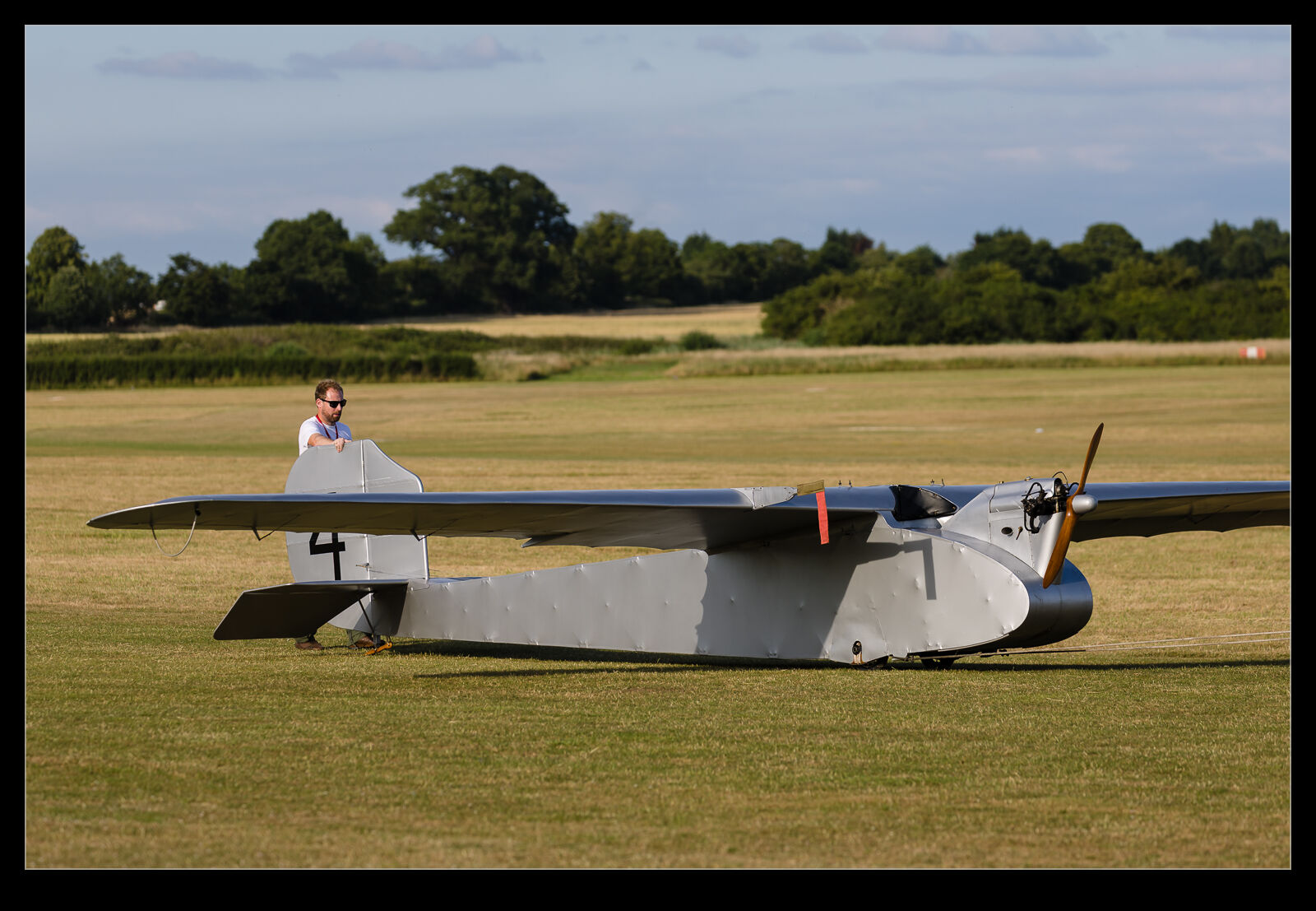 I first heard of the Wren when I read about it in Roly Beamont’s book. He was the chief test pilot at English Electric, and he described this vintage aircraft with very limited power that the company restored and hopped along the runway at Warton many years before I worked there. The aircraft now lives at Old Warden and it was brought out to fly during the Shuttleworth Festival of Flight. It was towed up to the far end of the field in preparation for its flight. The conditions were smooth, so it was going to be able to perform.
I first heard of the Wren when I read about it in Roly Beamont’s book. He was the chief test pilot at English Electric, and he described this vintage aircraft with very limited power that the company restored and hopped along the runway at Warton many years before I worked there. The aircraft now lives at Old Warden and it was brought out to fly during the Shuttleworth Festival of Flight. It was towed up to the far end of the field in preparation for its flight. The conditions were smooth, so it was going to be able to perform.
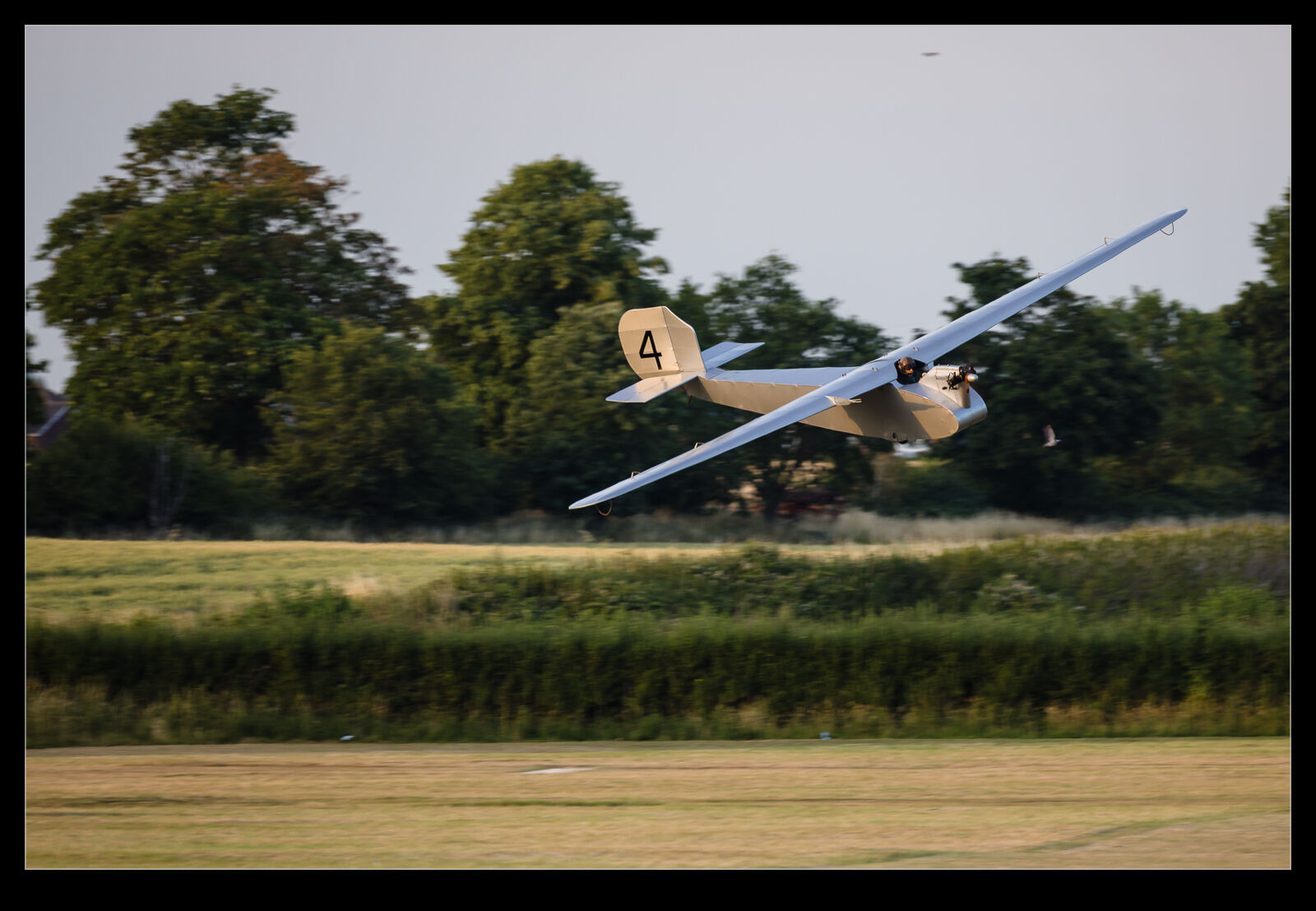 Having read that it was not over-endowed with power and that the Warton tests had involved some basic hops along the runway, this was what I had anticipated would be the case here. However, they were more ambitious. After flying the length of the field, a turn was made for a return run. I have to admit, when I first saw the turn, I did fear that all was not well. The whole flight was at low level, so the turn was also low. The angle made it look like the plane was heading for the trees. However, this was quite normal and in control. Even so, every turn made me tense up slightly. I guess by the end of the flight, I was getting used to it. Even so, it was quite unlike most flying I have watched.
Having read that it was not over-endowed with power and that the Warton tests had involved some basic hops along the runway, this was what I had anticipated would be the case here. However, they were more ambitious. After flying the length of the field, a turn was made for a return run. I have to admit, when I first saw the turn, I did fear that all was not well. The whole flight was at low level, so the turn was also low. The angle made it look like the plane was heading for the trees. However, this was quite normal and in control. Even so, every turn made me tense up slightly. I guess by the end of the flight, I was getting used to it. Even so, it was quite unlike most flying I have watched.
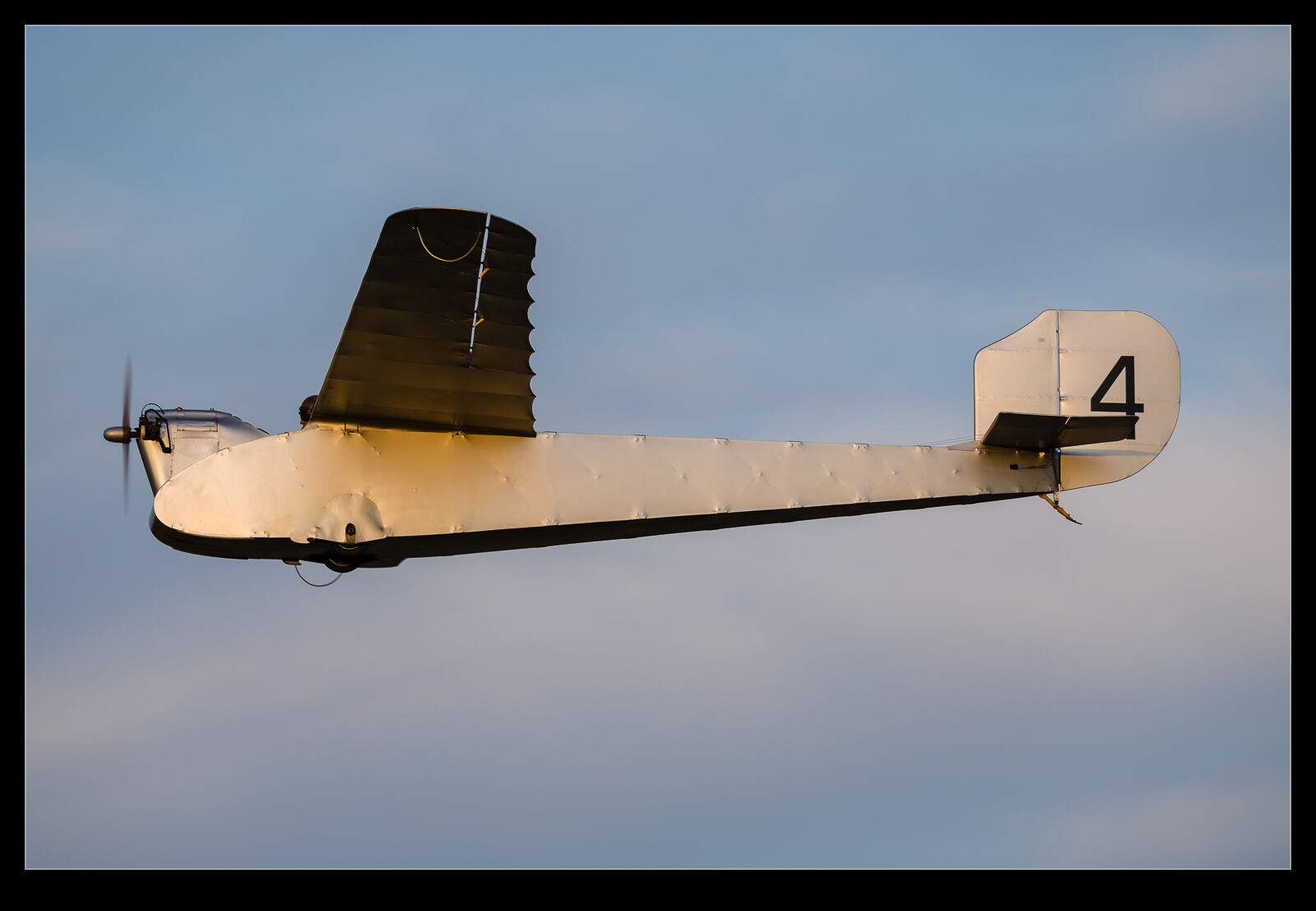 Multiple passes were made during the flight. The light was definitely playing ball along certain parts of the passes so I was able to grab quite a few shots. It’s not the most elegant looking plane and I imagine the view for the pilot is pretty minimal. Even so, as rarities go, it is right up there so to see it fly was a nice result.
Multiple passes were made during the flight. The light was definitely playing ball along certain parts of the passes so I was able to grab quite a few shots. It’s not the most elegant looking plane and I imagine the view for the pilot is pretty minimal. Even so, as rarities go, it is right up there so to see it fly was a nice result.
50 Years of Popham
 This aviation moment was a bit of a last-minute thing. We don’t live terribly far from Popham’s airfield, and I have driven past it more time than I can recall including when travelling to visit family in Andover before we ended up living in Hampshire. However, I had never actually been to the airfield before. I had seen that they were having a celebration of the fiftieth anniversary of the first use of the field, but I did have other stuff going on at home. When I had finished that, I knew I needed to get a bike ride in as part of my ongoing (if feeble) preparation for the charity ride I had coming up. I decided to ride up to Popham and back and swing by the fly in.
This aviation moment was a bit of a last-minute thing. We don’t live terribly far from Popham’s airfield, and I have driven past it more time than I can recall including when travelling to visit family in Andover before we ended up living in Hampshire. However, I had never actually been to the airfield before. I had seen that they were having a celebration of the fiftieth anniversary of the first use of the field, but I did have other stuff going on at home. When I had finished that, I knew I needed to get a bike ride in as part of my ongoing (if feeble) preparation for the charity ride I had coming up. I decided to ride up to Popham and back and swing by the fly in.
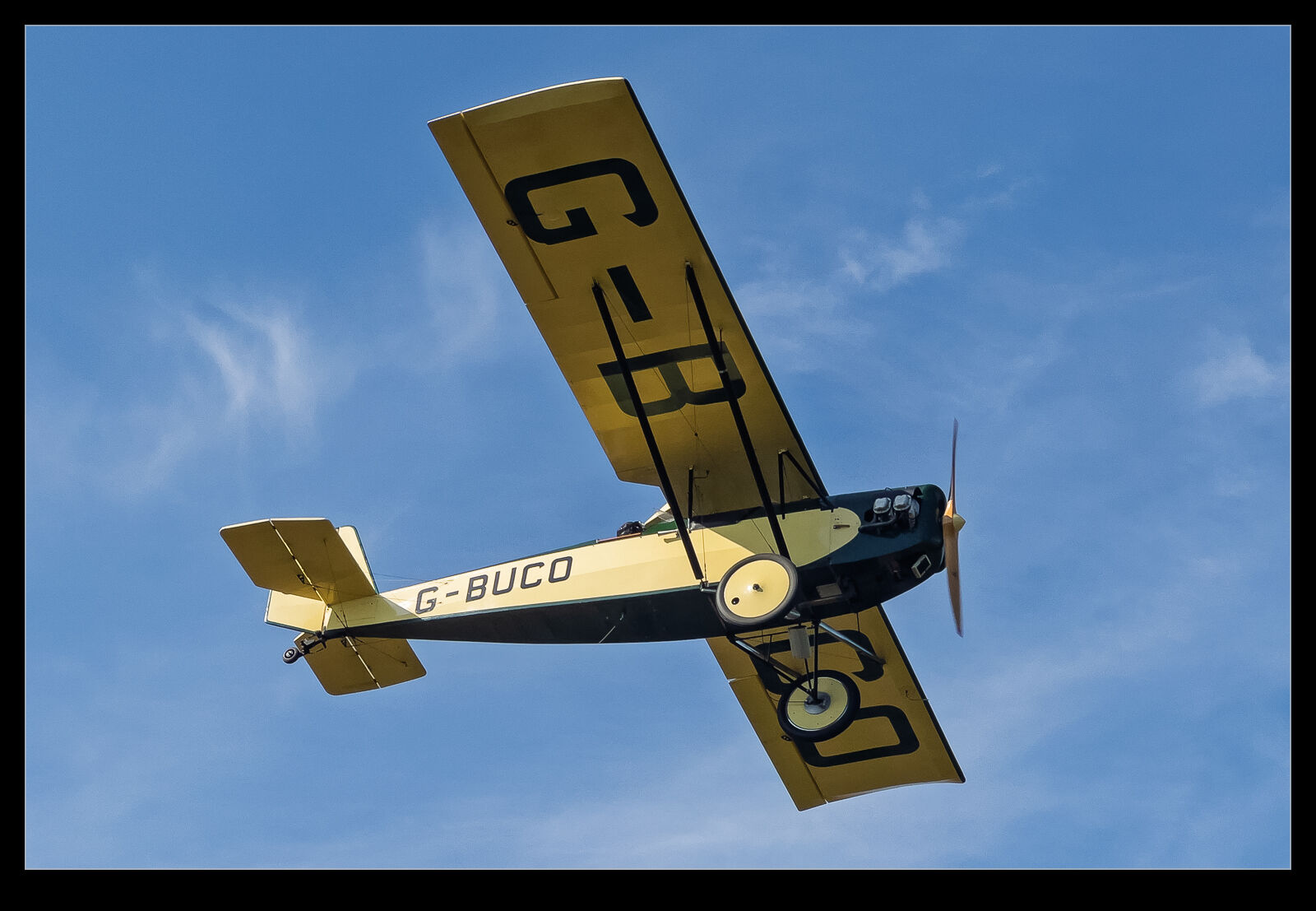 The weather was really nice and there seemed to be a ton of planes that had made the trip in to join the celebrations. The road into the airfield goes right under the western approach end and I did stop there on my bike for a while to watch the arriving and departing planes. Then I rode into the airfield itself and had a brief wander around. There were plenty of people out walking amongst the parked planes and, if I hadn’t been in cycling shoes and pushing the bike, I would have had a longer time exploring. Instead, it was a brief stopover before continuing my ride. I hope they had a successful day.
The weather was really nice and there seemed to be a ton of planes that had made the trip in to join the celebrations. The road into the airfield goes right under the western approach end and I did stop there on my bike for a while to watch the arriving and departing planes. Then I rode into the airfield itself and had a brief wander around. There were plenty of people out walking amongst the parked planes and, if I hadn’t been in cycling shoes and pushing the bike, I would have had a longer time exploring. Instead, it was a brief stopover before continuing my ride. I hope they had a successful day.
The Oldest Flying British Aircraft
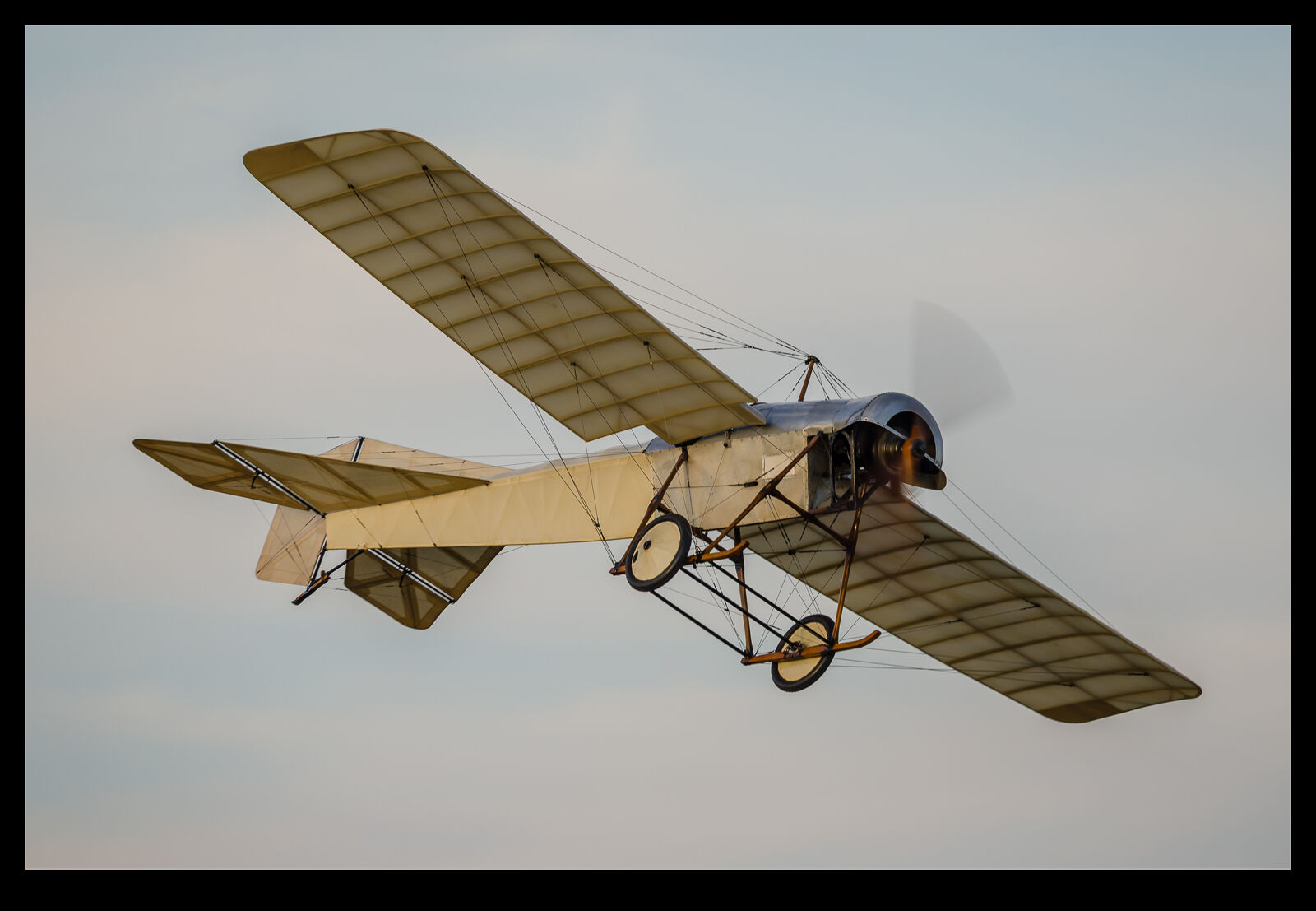 The very earliest days of aviation meant a lot of experimenters and innovators were trying their hand at flying. Some had success and many didn’t. Most of those early planes were never preserved (and many probably didn’t deserve to be. Even those that led to further success for their creators didn’t necessarily get to survive because things were moving on so fast and the historical significance would only become apparent many years later.
The very earliest days of aviation meant a lot of experimenters and innovators were trying their hand at flying. Some had success and many didn’t. Most of those early planes were never preserved (and many probably didn’t deserve to be. Even those that led to further success for their creators didn’t necessarily get to survive because things were moving on so fast and the historical significance would only become apparent many years later.
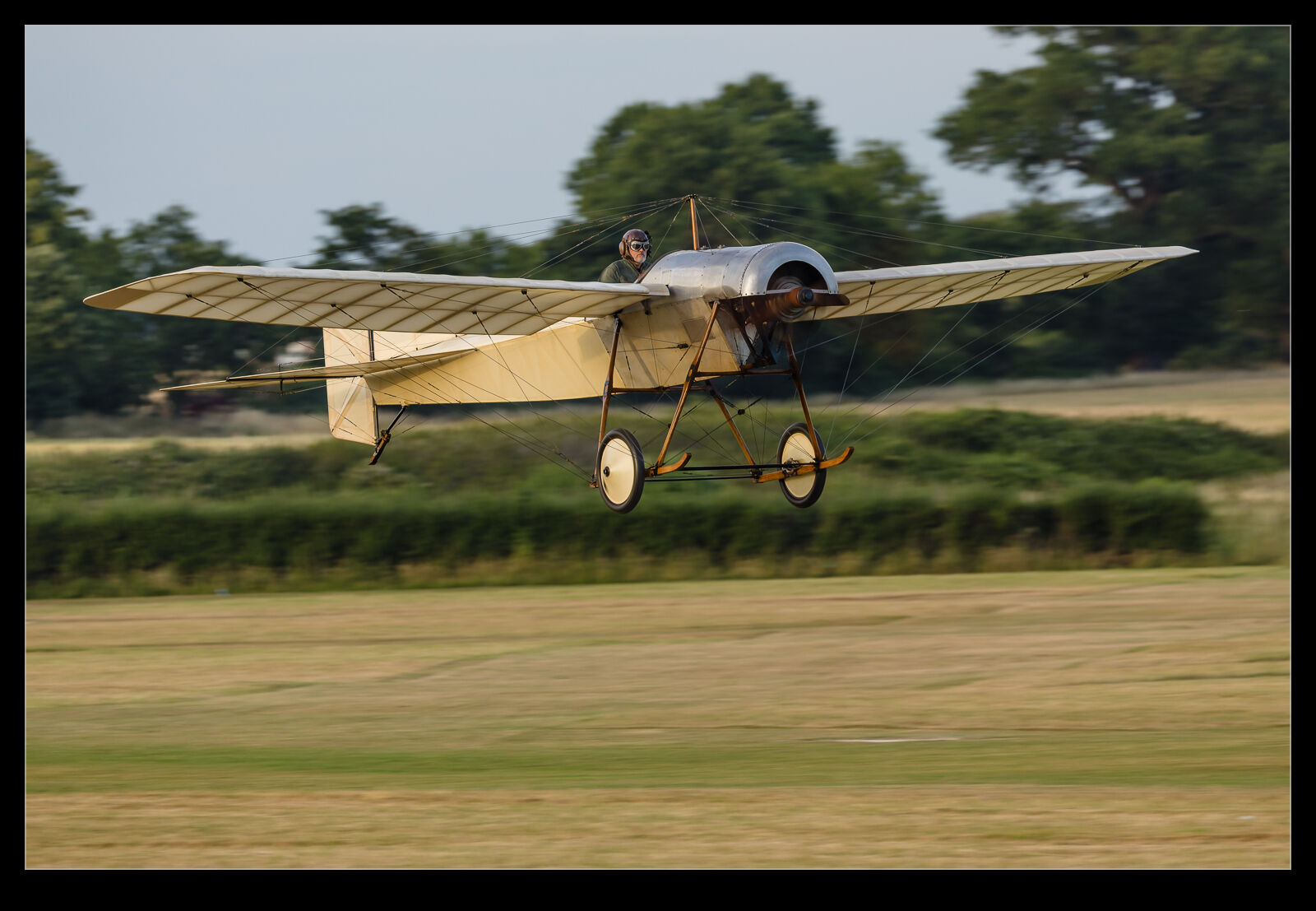 Consequently, it is quite a treat when something this old not only survived but is still airworthy. The oldest flying British aircraft is the Blackburn Type D. I guess the fact it is a Type D tells you that Blackburn had three preceding types that either didn’t work or didn’t survive (or perhaps both). This plane dates to 1912 although the engine is a later version. It has been in Shuttleworth’s hands since the late 1930s and it will fly if the conditions are right. Fortunately, they were when I was there for the Festival of Flight.
Consequently, it is quite a treat when something this old not only survived but is still airworthy. The oldest flying British aircraft is the Blackburn Type D. I guess the fact it is a Type D tells you that Blackburn had three preceding types that either didn’t work or didn’t survive (or perhaps both). This plane dates to 1912 although the engine is a later version. It has been in Shuttleworth’s hands since the late 1930s and it will fly if the conditions are right. Fortunately, they were when I was there for the Festival of Flight.
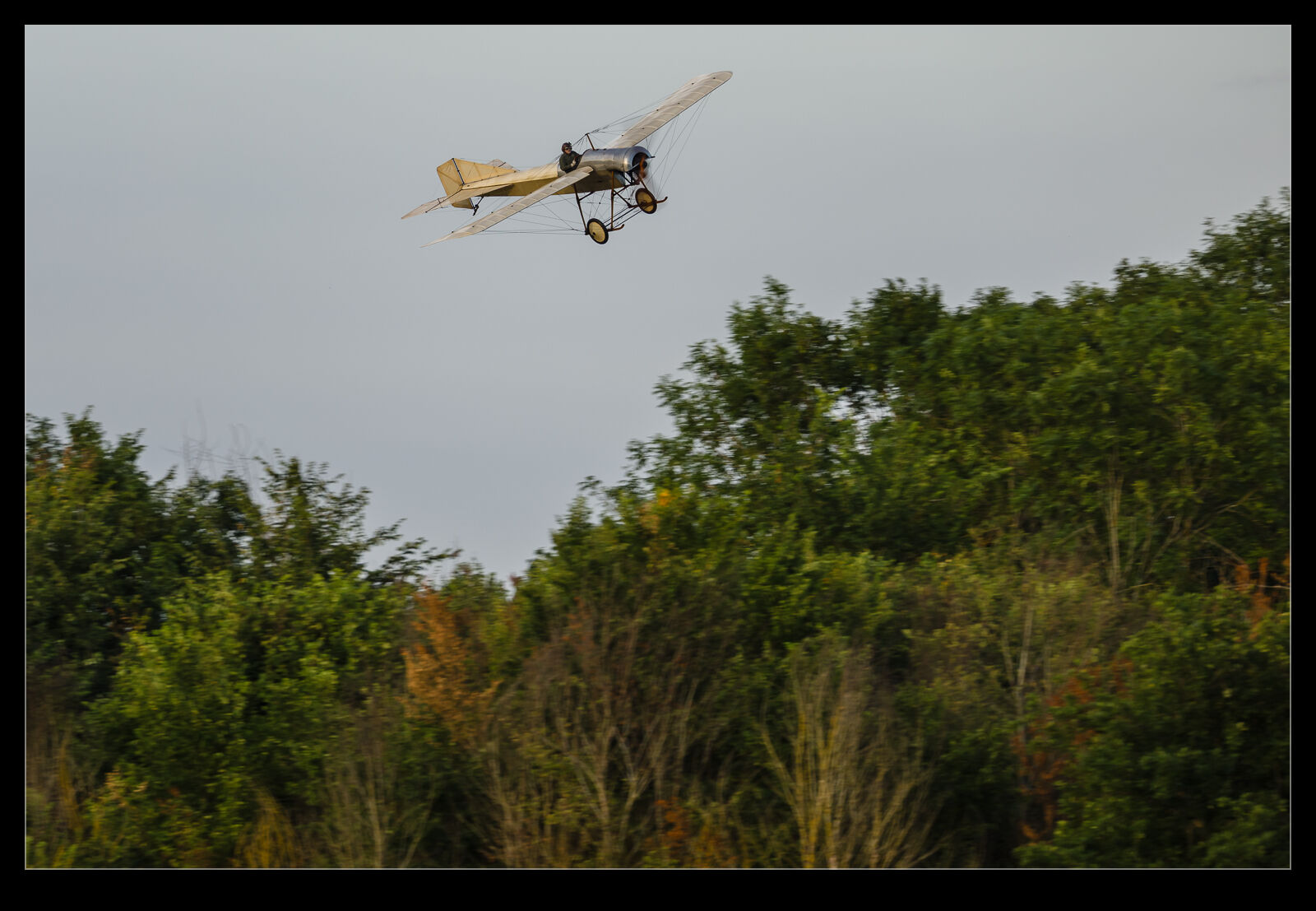 Unlike the two older planes that flew before it, the Type D seemed a lot more capable a plane and it was able to climb and manoeuvre around the display area with relative ease. The conditions were good to it, and we got to enjoy a lot of time with it before it landed. An amazing piece of history to witness on display.
Unlike the two older planes that flew before it, the Type D seemed a lot more capable a plane and it was able to climb and manoeuvre around the display area with relative ease. The conditions were good to it, and we got to enjoy a lot of time with it before it landed. An amazing piece of history to witness on display.
The Bleriot Gets Airborne – Just!
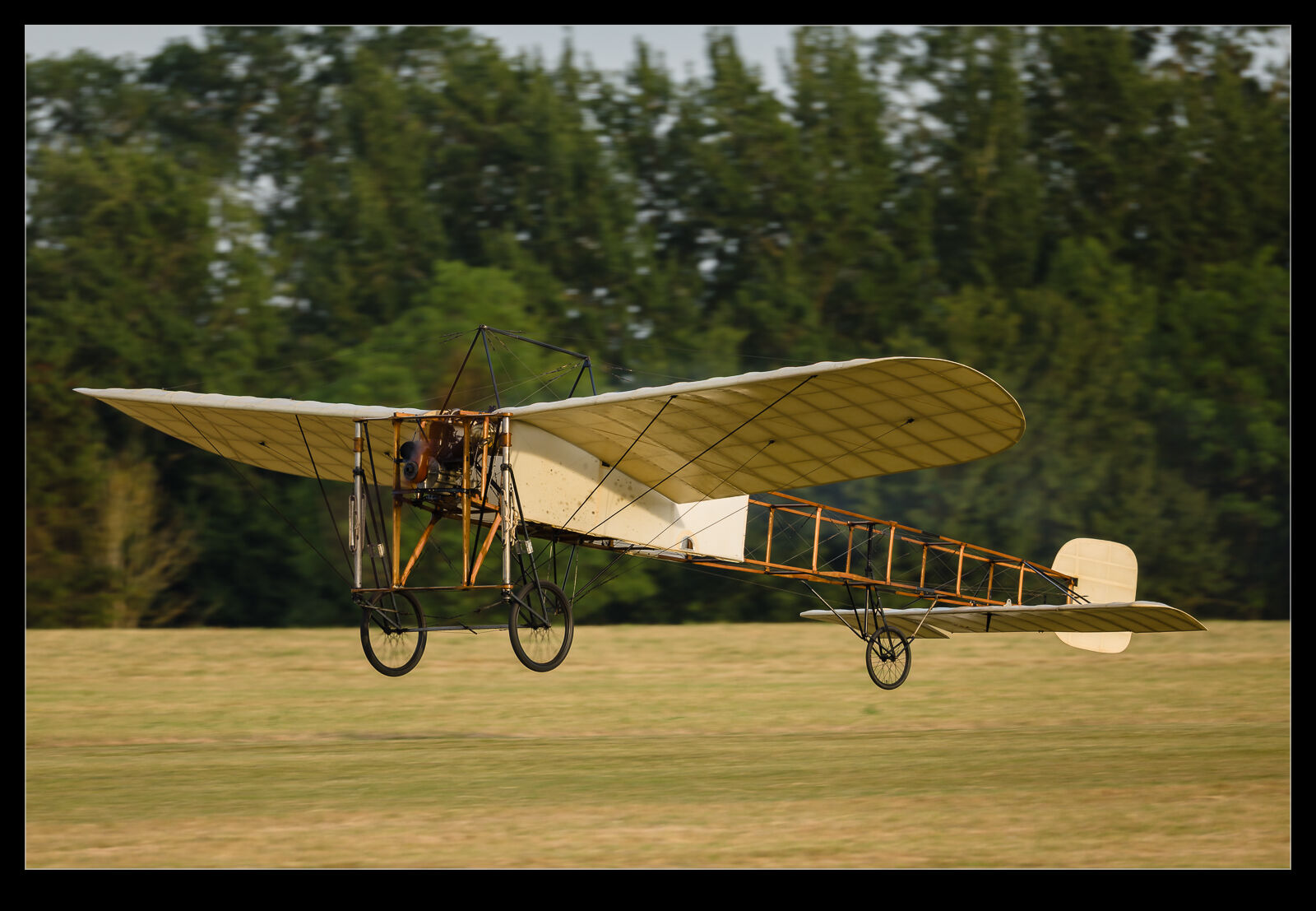 The Shuttleworth Trust has a Bleriot XI aircraft that is airworthy. This is not the first one I have seen because I saw the one Eric Presten kept in Sonoma, but I never got the chance to see that one fly. The Festival of Flight show at Old Warden had ideal conditions for flying the old planes and the Bleriot came out. They limit it to flying up and down the runway. No messing around with turns. Instead, they hop along the runway, turn around on the ground at the end and then come back.
The Shuttleworth Trust has a Bleriot XI aircraft that is airworthy. This is not the first one I have seen because I saw the one Eric Presten kept in Sonoma, but I never got the chance to see that one fly. The Festival of Flight show at Old Warden had ideal conditions for flying the old planes and the Bleriot came out. They limit it to flying up and down the runway. No messing around with turns. Instead, they hop along the runway, turn around on the ground at the end and then come back.
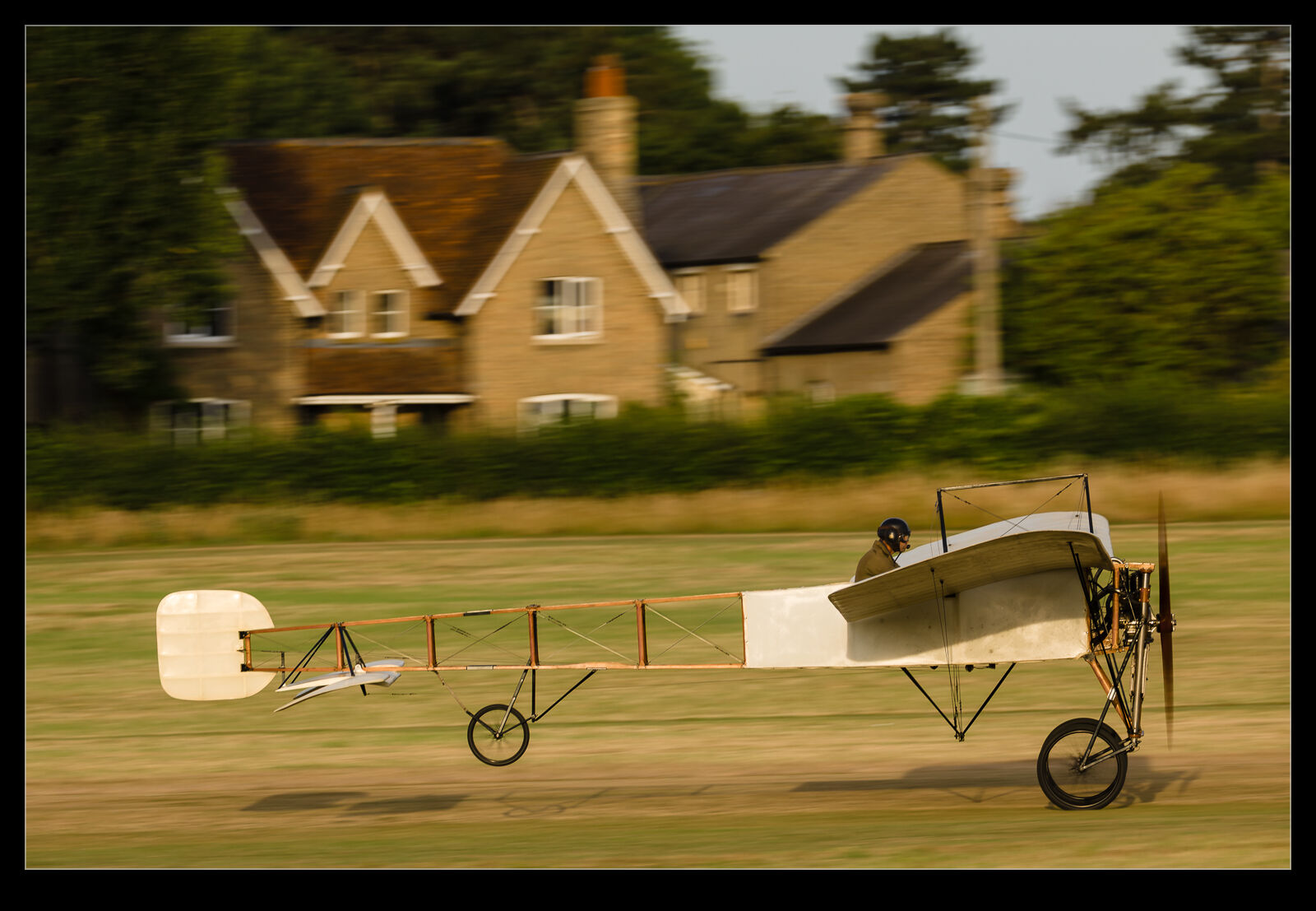 It is not an overpowered aircraft, and I did wonder whether it would get airborne or not. It would bounce up off a bump and then fly along for a while, before settling back down. I don’t know how much they push the performance given that this is an extremely rare and valuable aircraft so maybe it could do more. However, watching it I did find myself wondering about what would make someone want to take something like this across the English Channel.
It is not an overpowered aircraft, and I did wonder whether it would get airborne or not. It would bounce up off a bump and then fly along for a while, before settling back down. I don’t know how much they push the performance given that this is an extremely rare and valuable aircraft so maybe it could do more. However, watching it I did find myself wondering about what would make someone want to take something like this across the English Channel.
Ye Olde Pub Gets Closer to Home
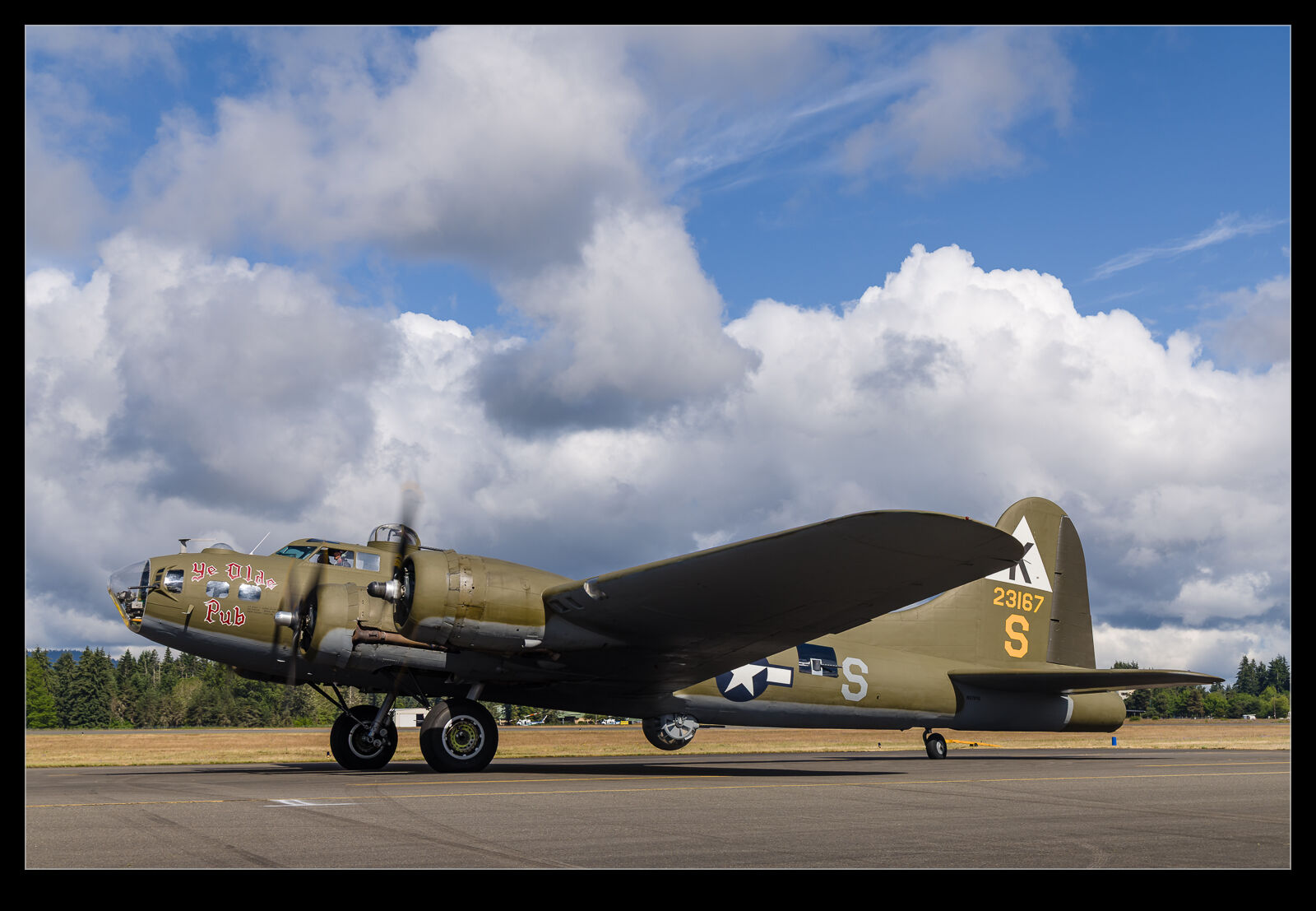 I had been able to photograph the B-17, Ye Olde Pub, when it appeared at the show down at Klamath Falls in Oregon. That was a bit of a hike to get to. In 2024 it put in an appearance at a show a lot nearer to our then home – the Olympic Air Show at Olympia. That made for a far shorter trip to see it – its home in Madras OR is also a fair trek. Olympia is only about 1:45 away if the roads are good.
I had been able to photograph the B-17, Ye Olde Pub, when it appeared at the show down at Klamath Falls in Oregon. That was a bit of a hike to get to. In 2024 it put in an appearance at a show a lot nearer to our then home – the Olympic Air Show at Olympia. That made for a far shorter trip to see it – its home in Madras OR is also a fair trek. Olympia is only about 1:45 away if the roads are good.
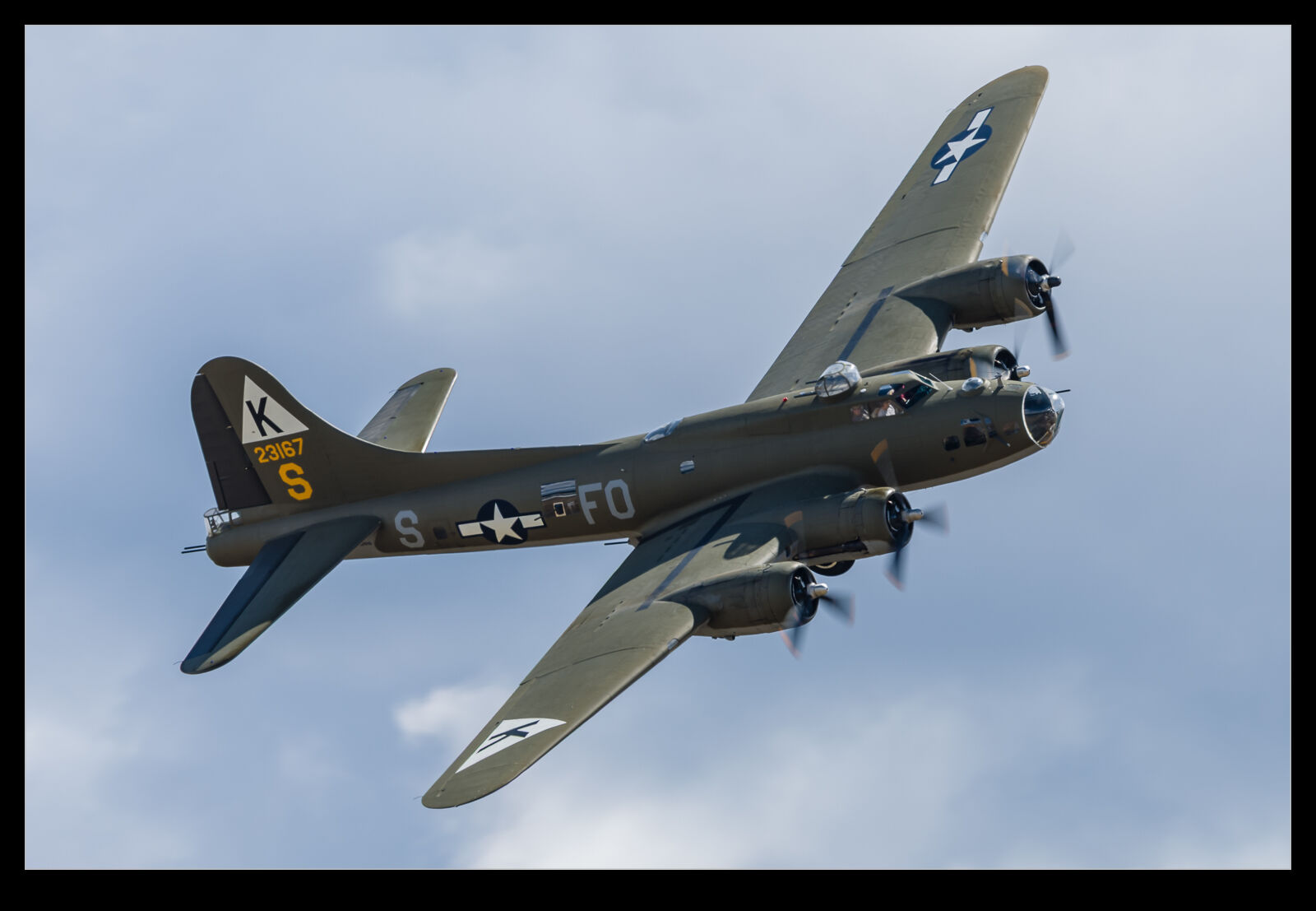 The put on a good flying display for the show. The light was surprisingly good for Olympia! It is held on a weekend in June that has a remarkable track record of delivering substandard weather. The local photographers constantly wish for it to be moved to a different time of year without any success. The plane was operating from the main ramp area which meant it was very close to you when it taxied in and out.
The put on a good flying display for the show. The light was surprisingly good for Olympia! It is held on a weekend in June that has a remarkable track record of delivering substandard weather. The local photographers constantly wish for it to be moved to a different time of year without any success. The plane was operating from the main ramp area which meant it was very close to you when it taxied in and out.
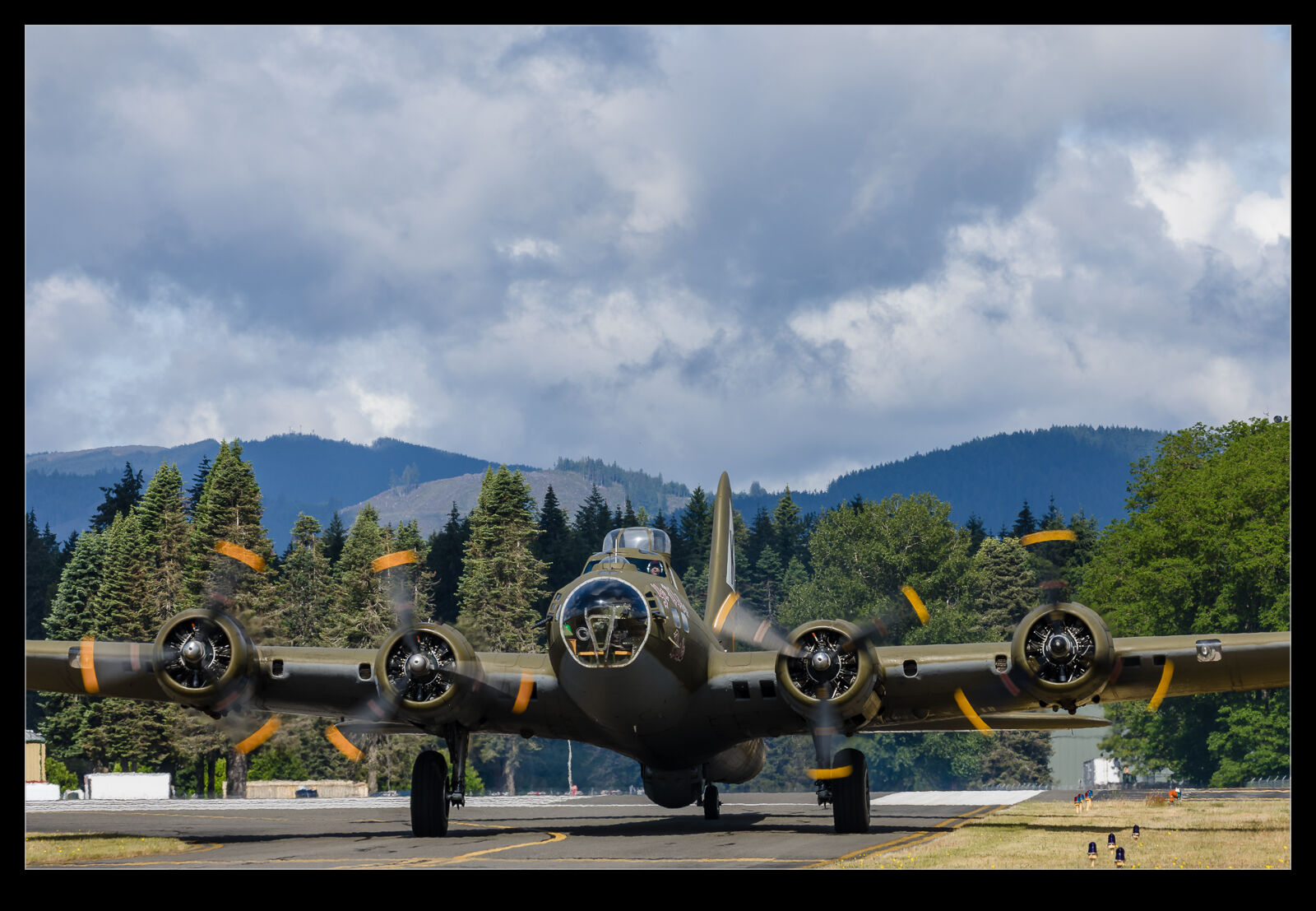 I wasn’t the first to spot this so I can’t claim to be the inspired person, but there is a taxiway marker board at Olympia that says B17. That made it quite easy to get a shot of the plane taxiing out with the B17 board in frame. A bit cutesy but I don’t think anyone was objecting. It seems like a lot of the airworthy B-17s are having major maintenance undertaken at the moment so having Ye Olde Pub active is great. I won’t even get upset about the use of the words “ye olde”!
I wasn’t the first to spot this so I can’t claim to be the inspired person, but there is a taxiway marker board at Olympia that says B17. That made it quite easy to get a shot of the plane taxiing out with the B17 board in frame. A bit cutesy but I don’t think anyone was objecting. It seems like a lot of the airworthy B-17s are having major maintenance undertaken at the moment so having Ye Olde Pub active is great. I won’t even get upset about the use of the words “ye olde”!
How to Carry Your Jetskis
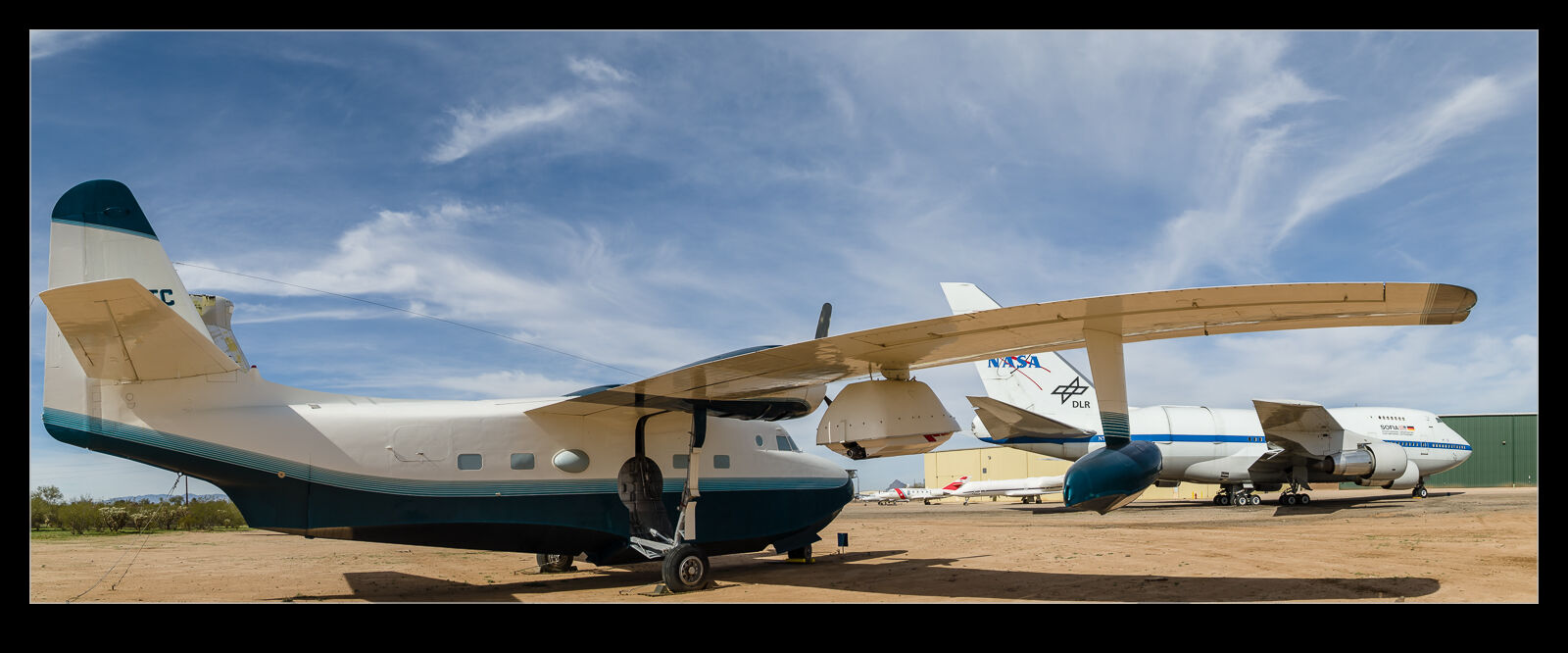 This Grumman Albatross is now an exhibit at the Pima museum in Tucson AZ. An Albatross is a cool plane anyway so might be worthy of a post but what I really liked about this one was the joined-up thinking for using it. An amphibious plane is clearly going to be used to “land” on water a lot of the time. When on water, you would really want to have your jetskis to hand. Putting them in the hull and trying to launch them seems like a lot of hassle. Instead, why not mount them directly to the wing and lower them from there directly to the water. Far more efficient.
This Grumman Albatross is now an exhibit at the Pima museum in Tucson AZ. An Albatross is a cool plane anyway so might be worthy of a post but what I really liked about this one was the joined-up thinking for using it. An amphibious plane is clearly going to be used to “land” on water a lot of the time. When on water, you would really want to have your jetskis to hand. Putting them in the hull and trying to launch them seems like a lot of hassle. Instead, why not mount them directly to the wing and lower them from there directly to the water. Far more efficient.
Getting the Shutter Speed Wrong Makes Editing Quicker
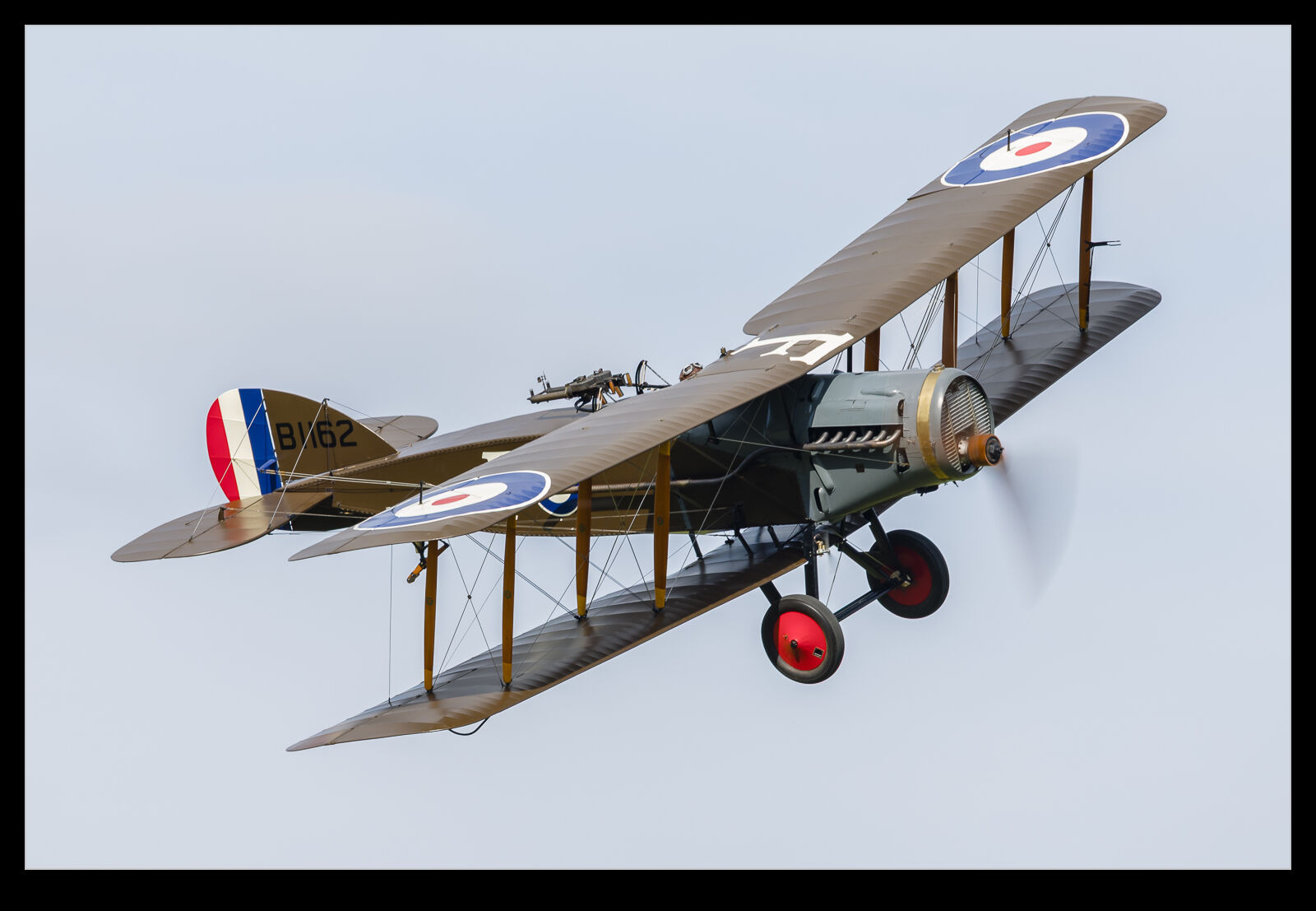 I have made this mistake before and, no doubt, I shall make this mistake again. Setting up the camera for one shot and then not changing the settings before shooting something else. I had the 200-800 lens on the camera, and I dropped the shutter speed down to 1/100th of a second for some take off shots. This is where I left it while shooting the flying display of a couple of aircraft. A long focal length and moving target with a slow shutter speed means that there are a ton of shots that are totally unusable. That really does help in the process of deleting shots. Most of them are toast. A few did survive and that was quite a relief!
I have made this mistake before and, no doubt, I shall make this mistake again. Setting up the camera for one shot and then not changing the settings before shooting something else. I had the 200-800 lens on the camera, and I dropped the shutter speed down to 1/100th of a second for some take off shots. This is where I left it while shooting the flying display of a couple of aircraft. A long focal length and moving target with a slow shutter speed means that there are a ton of shots that are totally unusable. That really does help in the process of deleting shots. Most of them are toast. A few did survive and that was quite a relief!





